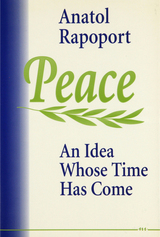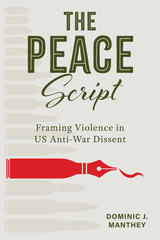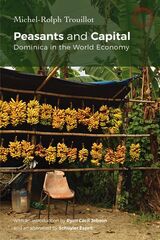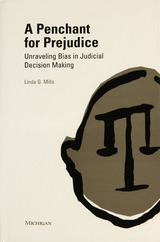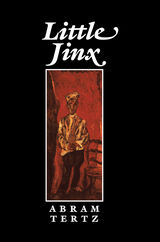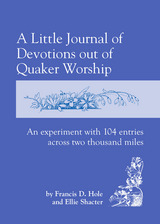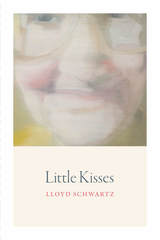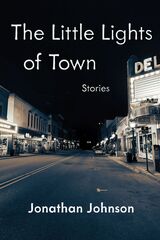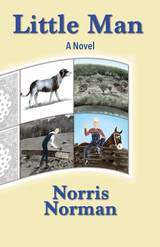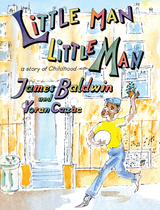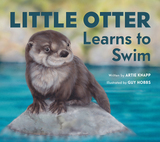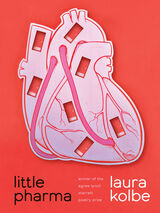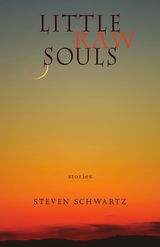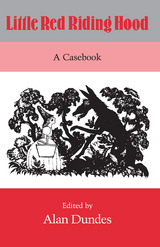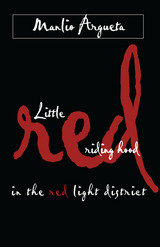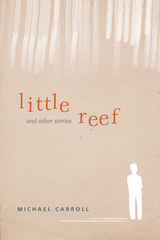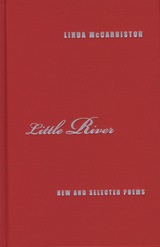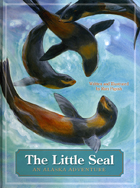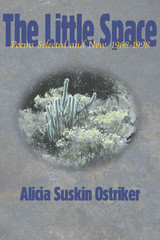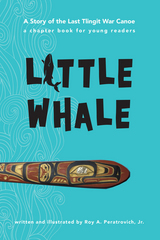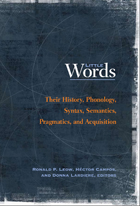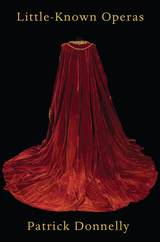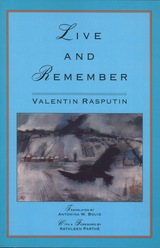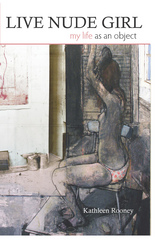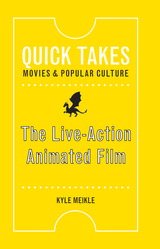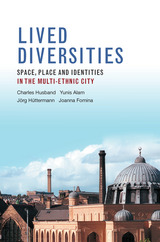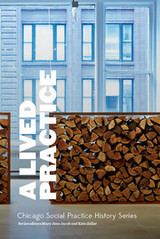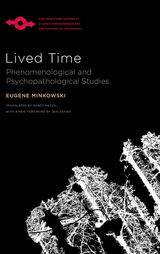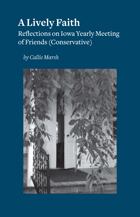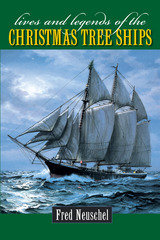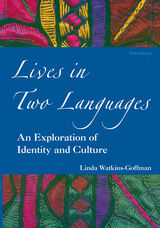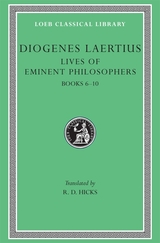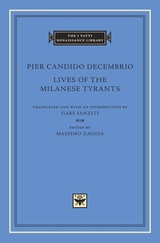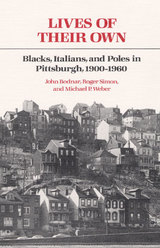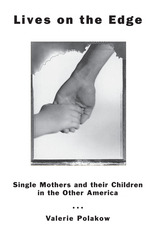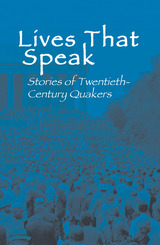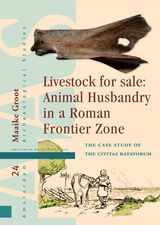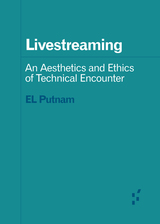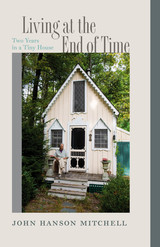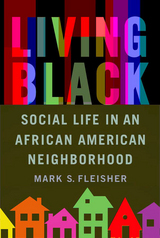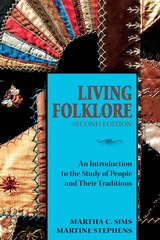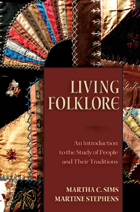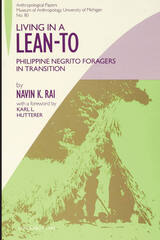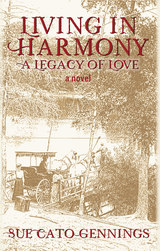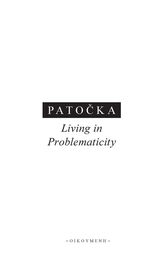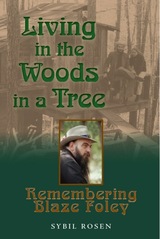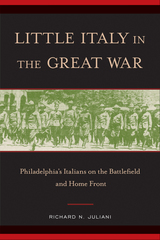 Little Italy in the Great War: Philadelphia's Italians on the Battlefield and Home Front
Richard N. Juliani
Temple University Press, 2020 The Great War challenged all who were touched by it. Italian immigrants, torn between their country of origin and country of relocation, confronted political allegiances that forced them to consider the meaning and relevance of Americanization. In his engrossing study, Little Italy in the Great War, Richard Juliani focuses on Philadelphia’s Italian community to understand how this vibrant immigrant population reacted to the war as they were adjusting to life in an American city that was ambivalent toward them. Juliani explores the impact of the Great War on many immigrant soldiers who were called to duty as reservists and returned to Italy, while other draftees served in the U.S. Army on the Western Front. He also studies the impact of journalists and newspapers reporting the war in English and Italian, and reactions from civilians who defended the nation in industrial and civic roles on the home front. Within the broader context of the American experience, Little Italy in the Great War examines how the war affected the identity and cohesion of Italians as a population still passing through the assimilation process.
Little Jinx
Abram Tertz
Northwestern University Press, 1992 Little Jinx is a canny mockery of the Soviet world. Its author, Andrei Sinyavsky, a respectable member of the USSR's Institute for World Literature, was exposed in 1965 as the real author of a series of irreverent essays and fantastic tales that had been circulating under the nom de plume Abram Tertz. After five years in a labor camp he immigrated to Paris. Little Jinx is the tale of a man named Sinyavsky, a literary hack and runt who clumsily survives repression and anti-Semitism but also brings misery to those around him. When this "little jinx" inadvertently causes the death of his five brothers, he is consumed by a guilt that seems universal in his society.
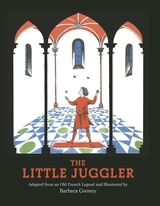 The Little Juggler
Barbara Cooney
Harvard University Press Like many others who have retold the tale of the juggler, the American children’s book author and illustrator Barbara Cooney (1917–2000) dropped clues about her sources of inspiration. In the foreword to the first edition of 1961, she reported having been exposed to the story first on the radio in 1945. She knew that the roots of the story stretch back seven hundred years to a poem from France—her title page describes it as “an Old French legend.” When researching her project, Cooney journeyed to the Parisian library that holds the thirteenth-century manuscript with the best text and the sole illumination extant from the Middle Ages. Among other manifestations of the narrative that caught her attention, Cooney singled out the opera of French composer Jules Massenet, “The Juggler of Notre Dame,” and the short story of 1890 by Anatole France. From France’s retelling of the medieval poem, the American book artist took for her protagonist both the name Barnaby and the profession of juggler.
From these sources, Cooney, a two-time recipient of the Caldecott Medal, made a story of beauty and simplicity to entertain and edify young audiences. In it, she helps them to appreciate how they can offer their services, no matter how humble. Cooney’s gentle masterpiece has lived on from the mid-twentieth century into the present. Dumbarton Oaks is pleased to bring it back to readers once again.
Little Kisses
Lloyd Schwartz
University of Chicago Press, 2017 Called “the master of the poetic one-liner” by the New York Times, acclaimed poet and critic Lloyd Schwartz takes his characteristic tragicomic view of life to some unexpected and disturbing places in this, his fourth book of poetry. Here are poignant and comic poems about personal loss—the mysterious disappearance of his oldest friend, his mother’s failing memory, a precious gold ring gone missing—along with uneasy love poems and poems about family, identity, travel, and art with all of its potentially recuperative power. Humane, deeply moving, and curiously hopeful, these poems are distinguished by their unsentimental but heartbreaking tenderness, pitch-perfect ear for dialogue, formal surprises, and exuberant sense of humor.
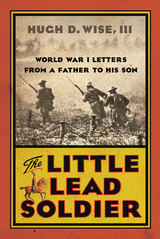 The Little Lead Soldier
Hugh D. Wise III
Westholme Publishing, 2017 An Extraordinary Account from the Front Lines of World War I, Written at the Request of an American Officer’s Young Son
Arriving in France in April 1918, Col. Hugh D. Wise, commander of the U.S. 61st Infantry Division, held a precious object. It was a toy soldier given to him by his six-year-old son, Hugh, Jr. The boy had asked the little lead soldier to write him with news of his father. The colonel saw action in two of the most important campaigns the Americans fought, St. Mihiel and Meuse-Argonne, and the little lead soldier dutifully assured a boy thousands of miles away that his father was safe: “The men had been shelled, gassed, and raked by machine guns constantly: and undergone several intense bombardments; and made a difficult though successful attack; and had resisted a fierce counter-attack. They had dug trenches, moved, and dug again. All this time they had been without shelter, exposed to a cold driving rain and without warm food—They were wet, chilled, and tired when called upon for even greater efforts but they responded with the energy and spirit of fresh troops.” A treasured family heirloom, these wartime letters are presented for the first time along with letter from Colonel Wise to his wife, and engrossing historical context provided by his grandson, Hugh D. Wise, III. The Little Lead Soldier: World War I Letters from a Father to His Son is a remarkable story of how a father performed his dangerous duty while keeping a promise to his boy.
The Little Lights of Town: Stories
Jonathan Johnson
Carnegie Mellon University Press, 2025 Stories of resilience, belonging, and the quiet beauty of life on the edge of the wild.
In The Little Lights of Town, acclaimed poet and memoirist Jonathan Johnson turns to fiction, bringing to life the rugged landscapes and tightly knit communities of Michigan’s Upper Peninsula. Against the backdrop of Lake Superior’s cold, untamed shores, his characters navigate love, loss, and the relentless pull of home.
From those who choose to stay despite the ever-present shadow of isolation to those searching for connection in a land where nature looms larger than life, these stories illuminate the quiet urgencies of human existence. With prose as lyrical as it is unflinching, Johnson visualizes a place where the past lingers in the streets, and where even in the darkest winters, little lights continue to shine.
 The Little Lion of the Southwest: A Life Of Manuel Antonio Chaves
Marc Simmons
Ohio University Press, 1974 Manuel Antonio Chaves’ life straddled three eras of New Mexican history: he was born (1818) at the tag end of the Spanish colonial period, he grew to manhood in the rough and heady days of the Santa Fe trade during the quarter century of Mexican rule (1821–1846), and he spent his mature years under the territorial regime established by the United States. Manuel Chaves’ long career (died 1889) was interwoven with almost every major historical event which occurred during his adult life—the Texan-Santa Fe Expedition, the Mexican War, the Civil War, skirmishes with Utes, Navajos, and Apaches. He was called El Leoncito, The Little Lion, having earned the name as an Indian fighter. He lived for two years in St. Louis and was a well-travelled man, doing business in New Orleans, New York, and Cuba.
A hundred years ago when men still gathered around campfires and storytelling was a well-developed art, Chaves’ exploits were known to all New Mexicans. But history has a capricious memory and his name became virtually forgotten. Around the turn of the century, Charles F. Lummis’ flowery pen recalled brief attention to Chaves’ life, and in 1927 he appeared as a minor character in Willa Cather’s Death Comes for the Archbishop—but otherwise was virtually forgotten. Alas. Too few of our Spanish frontiersmen have been studied in depth. Manuel Chaves and his life should not be lost. He was one of the legendary but real men who pioneered and built the 19th century Southwest. Howard R. Lamar laments: “The Spanish-American population of New Mexico still lacks a historian.” Marc Simmons’ biography of Manuel Chaves helps fill that gap.
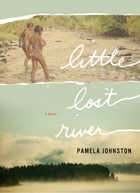 Little Lost River: A Novel
Pamela Johnston
University of Nevada Press, 2008 Set in Boise, Idaho in the early 1980s, Little Lost River is the story of two young women who come together in the wake of tragedy. Cindy Morgan is still reeling from the loss of her mother when an accident leaves her boyfriend missing and presumed drowned. When Frances Rogers happens upon the accident site, she stays with Cindy until help arrives. In the aftermath of that night’s events, as Cindy faces her future with a determination often misunderstood as indifference, Frances becomes her source of both support and compassion. Cindy and Frances are determined to find their own lives unencumbered by conventional expectations, but their path to adulthood is neither easy nor clear, and the future that each girl finds is not what she expected or planned. One generation follows another, and in the end, the girls learn that life moves on its own path, that “transformation is what takes you forward. It’s the only constant thing.”
 A Little Love in Big Manhattan: Two Yiddish Poets
Ruth R. Wisse
Harvard University Press, 1988 In the early decades of this century, the wave of immigration that brought nearly two million Jews from the Pale of Settlement to the United States included an extraordinary group of gifted Yiddish poets and writers, who came to be called Di Yunge (The Young). A Little Love in Big Manhattan tells the story of two of the Young’s most prominent figures—Mani Leib, a lyric poet intent on refining the hard facts of his life into works of enduring beauty, and Moishe Leib Halpern, for whom poetry had to be the expression of coarse and shattering reality.
Through a dual biography of these opposing personalities, Ruth Wisse describes the rich and vital cultural movement that embraced them both. She tells of the burst of creative energy exhibited by the young poets and intellectuals who, after a long day of manual labor, would congregate in the cafes of the Lower East Side for badinage, debate, and literary talk. They started literary journals and compiled anthologies of their writings, which found their way overseas and had a rejuvenating influence on Yiddish poetry abroad. Ironically, their achievement coincided with the decline of the language in which they wrote, so that Yiddish poetry came into its own in America at a time when the next generation could scarcely read it; there were no literary heirs.
Ruth Wisse presents modern Jews with a part of their lost inheritance, and also claims for the Yiddish poets a place in the American canon. The first book to present these poets as part of the history of immigrant Jews in America, A Little Love in Big Manhattan (the title is from a poem of Halpern’s) will appeal to readers of poetry and to people interested in facets of the intellectual and artistic atmosphere of the interwar period.
 The Little Magazine in Contemporary America
Edited by Ian Morris and Joanne Diaz
University of Chicago Press, 2015 Little magazines have often showcased the best new writing in America. Historically, these idiosyncratic, small-circulation outlets have served the dual functions of representing the avant-garde of literary expression while also helping many emerging writers become established authors. Although changing technology and the increasingly harsh financial realities of publishing over the past three decades would seem to have pushed little magazines to the brink of extinction, their story is far more complicated.
In this collection, Ian Morris and Joanne Diaz gather the reflections of twenty-three prominent editors whose little magazines have flourished over the past thirty-five years. Highlighting the creativity and innovation driving this diverse and still vital medium, contributors offer insights into how their publications sometimes succeeded, sometimes reluctantly folded, but mostly how they evolved and persevered. Other topics discussed include the role of little magazines in promoting the work and concerns of minority and women writers, the place of universities in supporting and shaping little magazines, and the online and offline future of these publications.
Selected contributors
Betsy Sussler, BOMB; Lee Gutkind, Creative Nonfiction; Bruce Andrews, L=A=N=G=U=A=G=E; Dave Eggers, McSweeney’s; Keith Gessen, n+1; Don Share, Poetry; Jane Friedman, VQR; Amy Hoffman, Women’s Review of Books; and more.
Little Man: A Novel
Norris Norman
Parkhurst Brothers, Inc., 2017 Little Man chronicles the adventures of Amos, his mule and his dog as they settle with their family in northeastern Arkansas in the early 1800s. In these historically accurate tales, young Amos, his mule and his dog encounter the challenges of making a home and a living along the Little Sandy River. The climate, the river's seasonal changes of mood, moonshiners, wild hogs, and more contribute to the development of Amos into a grown man.
Little Man, Little Man: A Story of Childhood
James Baldwin
Duke University Press, 1976 Four-year-old TJ spends his days on his lively Harlem block playing with his best friends WT and Blinky and running errands for neighbors. As he comes of age as a “Little Man” with big dreams, TJ faces a world of grown-up adventures and realities. Baldwin’s only children’s book, Little Man, Little Man celebrates and explores the challenges and joys of black childhood.
Now available for the first time in forty years, this new edition of Little Man, Little Man—which retains the charming original illustrations by French artist Yoran Cazac—includes a foreword by Baldwin’s nephew Tejan "TJ" Karefa-Smart and an afterword by his niece Aisha Karefa-Smart, with an introduction by two Baldwin scholars. In it we not only see life in 1970s Harlem from a black child’s perspective, but we also gain a fuller appreciation of the genius of one of America’s greatest writers.
The Little Man with the Long Shadow
George S. Mills
University of Iowa Press, 1988 Frederick M. Hubbell, railroad financier and builder, real estate investor, public utilities magnate, leading lawyer, and founder of Iowa’s first life insurance company, the Equitable, was at one time the wealthiest Iowan in the state’s history. Based on his diaries from 1855 to 1927, The Little Man with the Long Shadow tells the story of this industrious and imaginative entrepreneur.
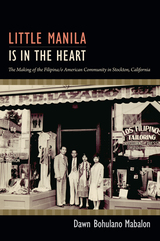 Little Manila Is in the Heart: The Making of the Filipina/o American Community in Stockton, California
Dawn Bohulano Mabalon
Duke University Press, 2013 In the early twentieth century—not long after 1898, when the United States claimed the Philippines as an American colony—Filipinas/os became a vital part of the agricultural economy of California's fertile San Joaquin Delta. In downtown Stockton, they created Little Manila, a vibrant community of hotels, pool halls, dance halls, restaurants, grocery stores, churches, union halls, and barbershops. Little Manila was home to the largest community of Filipinas/os outside of the Philippines until the neighborhood was decimated by urban redevelopment in the 1960s. Narrating a history spanning much of the twentieth century, Dawn Bohulano Mabalon traces the growth of Stockton's Filipina/o American community, the birth and eventual destruction of Little Manila, and recent efforts to remember and preserve it. Mabalon draws on oral histories, newspapers, photographs, personal archives, and her own family's history in Stockton. She reveals how Filipina/o immigrants created a community and ethnic culture shaped by their identities as colonial subjects of the United States, their racialization in Stockton as brown people, and their collective experiences in the fields and in the Little Manila neighborhood. In the process, Mabalon places Filipinas/os at the center of the development of California agriculture and the urban West.
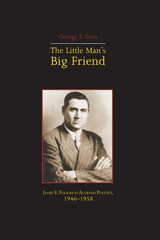 The Little Mans Big Friend: James E. Folsom in Alabama Politics, 1946-1958
George E. Sims
University of Alabama Press, 1985 Examines the political career of Alabama’s “Big Jim” Folsom
At the end of World War II changing economic and social forces transformed the lives of Alabamians, whose political leaders had built careers on localistic politics shaped by established economic and governmental interests. Into this context strolled “Big Jim”—six feet eight inches tall—with his corn-shuck mop, wooden suds bucket, and a promise to scrub out the Capitol. Ridiculed by his opponents, Folsom advertised his progressive program in every crossroads community.
As governor, Folsom faced a legislature dominated by local politicians whom he had bypassed during the campaign, and although he won approval of some bills, legislative opposition made his administration a four-year filibuster.
Not until 1955, after his election to a second term, did Folsom become an effective leader. Tying programs for expanded services to the local interests of the legislators, he won approval for road construction, “old-age pensions,” industrial development, and reorganization of the state docks. But the lawmakers balked at constitutional reform.
As his reform efforts met defeat during 1956, Folsom was losing his ability to lead. He refused to exploit racial tensions, and the rise of the civil rights movement undermined his popularity among whites. Unwilling to discipline his aides and supporters, his administration became notorious for petty graft. By 1958 aspiring candidates kept their distance from Folsom. “Big Jim” attempted a comeback in the 1962 campaign, but he was never again to hold public office.
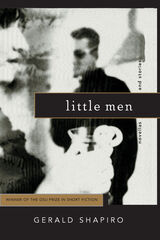 LITTLE MEN: NOVELLAS AND STORIES
GERALD SHAPIRO
Ohio State University Press, 2004 Ira Mittelman, the middle-aged hero of “A Box of Ashes,” one of two novellas in Little Men, is wrestling with a dilemma: should he fulfill his late father’s dying wish by taking the old man’s ashes back to Missouri, to scatter them on the grounds of Camp HaHaTonka, the Boy Scout camp where Ira spent several summers as a boy? It’s a long way to go just to dump some ashes, and if Ira makes this pilgrimage, his absence might jeopardize the fragile relationship he’s managed to maintain with his ex-wife (they’re still having sex every Friday night). In “Spivak in Babylon,” Little Men’s other novella, it’s 1982, and Leo Spivak, an ambitious 30-year-old copywriter at a large Chicago advertising agency, is about to get his big break: a chance to go to Hollywood to participate for the first time in the filming of a television commercial. A week in Hollywood, on the company’s expense account! A room at the fabled Chateau Marmont (Garbo’s old suite, in fact)! The only problem is the subject of the commercial itself: a new feminine hygiene spray to be marketed to pre-adolescent girls. Hovering over all the proceedings in “Spivak in Babylon” is the genial, befuddled presence of President Ronald Reagan, the Leader of the Free World, who haunts Leo’s dreams.
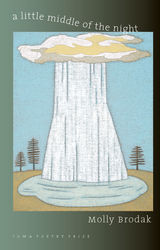 A Little Middle of the Night
Molly Brodak
University of Iowa Press, 2010 The language of Molly Brodak’s first full-length collection, A Little Middle of the Night, is ever shifting, brightly sonic, and disarming while exploring the margin between nature and art, darkness and beauty, dreams and awakenings. As echoed in one epigraph from Emerson, these poems capture “the Exact and the Vast” of consciousness in intense lyric verse with an angular and almost scientific sensitivity. Here is a speaker intent on discovery: “Oh whole world, we choose / another.”
This award-winning collection simmers with wit as Brodak confronts tragedy, childhood losses, transcendent love, and the question of art itself. Tinged with a suffering—“I was the littlest wastebasket. / I was my own church. Except— / scared, scared”—that rises above personal sorrow, her fierce and painterly poems redefine nature and art and what exists between: “Lately, there is spangled shade in my space / and a cold apple orchard to tend in place of consciousness.” As Reginald Shepherd said about the poems in Brodak’s first collection, the chapbook Instructions for a Painting, her world is “‘small enough / to sing in all directions,’ and large enough to take us there.”
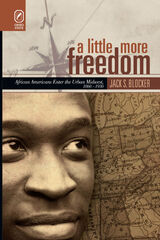 A Little More Freedom: African Americans Enter the Urban Midwest, 1860–1930
Jack S. Blocker
Ohio State University Press, 2008 Why did African Americans move from the rural South to the metropolitan North? Scholars have shown that African Americans took part in the urbanization of American society between the Civil War and the Great Depression, but the racial dimensions of their migration have remained unclear. A Little More Freedom is the first study to trace African American locational choices during the crucial period when migrants created pathways that would shape mobility through the twentieth century and beyond.This book identifies an "age of the village" for black Midwesterners, when Civil War and postwar migrants distributed themselves evenly across the urban hierarchies of the region. Using four case studies of Washington Court House, Ohio; Springfield, Ohio; Springfield, Illinois; and Muncie, Indiana, Blocker shows what life was like for African Americans in small towns and small cities, thus illuminating the reasons why most blacks ultimately chose to leave such places in favor of metropolitan centers such as Chicago, Indianapolis, and Cleveland. Previous scholars have emphasized the role of racist white violence as the catalyst, but A Little More Freedom takes a more nuanced approach.Emphasis upon racist violence and Jim Crow has inadvertently tended to portray African Americans as victims and their migrations as flight from danger and oppression. While not downplaying white racism, A Little More Freedom tries to recreate the threats and opportunities in urban places of different sizes as seen through the eyes of migrants.
Little Otter Learns To Swim
Artie Knapp
Ohio University Press, 2018 In this endearing and beautifully illustrated picture book, a baby river otter learns to swim, dive, and play in her natural habitat. Encouraged by her mother, the little otter soon sets out to explore on her own, quickly learning to escape shoreline predators and to find her way back to the security of home. From children’s author Artie Knapp and wildlife artist Guy Hobbs, Little Otter Learns to Swim is an entertaining and colorful tale for ages four and up. The story is followed by two pages of fun facts about river otters as well as information and resources from the River Otter Ecology Project.
Little Pharma: Poems
Laura Kolbe
University of Pittsburgh Press, 2021 The title Little Pharma is both a doppelgänger and a cri de coeur: as the poet’s dreamlike double, the character Little Pharma navigates the murky channels of the hospital and clinic, the borderlands of the living and the dead, and the journey from novice to healer. At the same time, the poems plead for a return to a littler pharma, a space for stolen intimacy and momentary quiet amid the impersonal and engulfing chill that floods the anatomical theater and the corridors of illness. Little Pharma is a Dantean journey from the depths of an institution, and of a pervading personal dread, to a renewed celebration of human contact, the body, and the giddy, terrifying excitement of ongoing life.
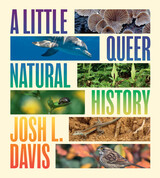 A Little Queer Natural History
Josh L. Davis
University of Chicago Press, 2024 Beautifully illustrated and scientifically informed, a celebration of the astonishing diversity of sexual behavior and biology found in nature.
From a pair of male swans raising young to splitgill mushrooms with over 23,000 mating types, sex in the natural world is wonderfully diverse. Josh L. Davis considers how, for many different organisms—animals, plants, and fungi included—sexual reproduction and sex determination rely on a surprisingly complex interaction among genes, hormones, environment, and chance. As Davis introduces us to fascinating biological concepts like parthenogenesis (virgin birth), monoecious plants (individuals with separate male and female flowers), and sex-reversed genitals, we see turtle hatchlings whose sex is determined by egg temperature; butterflies that embody male and female biological tissue in the same organism; and a tomato that can reproduce three different ways at the same time. Davis also reveals animal and plant behaviors in nature that researchers have historically covered up or explained away, like queer sex among Adélie penguins or bottlenose dolphins, and presents animal behaviors that challenge us to rethink our assumptions and prejudices. Featuring fabulous sex-fluid fishes and ant, wasp, and bee queens who can choose both how they want to have sex and the sex of their offspring, A Little Queer Natural History offers a larger lesson: that the diversity we see in our own species needs no justification and represents just a fraction of what exists in the natural world.
Little Raw Souls
Steven Schwartz
Autumn House Press, 2013 Schwartz settles across the southwest to shed light on souls who, despite all odds, are still looking for meaning.
Little Red Riding Hood: A Casebook
Alan Dundes
University of Wisconsin Press, 1989 Alan Dundes continues his exploration of well-loved fairy tales with this casebook on one of the best-known of them all: Little Red Riding Hood.
Following versions of the tale by Perrault and the Brothers Grimm, the essays by an international group of scholars provide an impressive cross-section of theoretical approaches.
Little Red Riding Hood in the Red Light District
Manlio Argueta
Northwestern University Press, 1998 Little Red Riding Hood in the Red Light District is Manlio Argueta's most popular novel in El Salvador, translated into English for the first time by Edward Waters Hood. A kaleidoscopic tale of political romance, the story revolves around the relationship of two young lovers in a time of social upheaval, evoking characters and themes from the classic fairy tale within the wartime environment of El Salvador and its capital, San Salvador.
Little Reef and Other Stories
Michael Carroll
University of Wisconsin Press, 2014 Little Reef and Other Stories announces the arrival of an original voice in literature. From Key West to Maine, Michael Carroll’s debut collection of stories depicts the lives of characters who are no longer provincial but are not yet cosmopolitan. These women and their gay male friends are “B-listers” of a new, ironic, media-soaked culture. They live in a rich but increasingly divided America, a weirdly paradoxical country increasingly accepting of gay marriage but still marked by prejudice, religious strictures, and swaths of poverty and hopelessness. Carroll shows us people stunned by the shock of the now, who have forgotten their pasts and can’t envision a future.
Winner, Sue Kaufman Prize for First Fiction, American Academy of Arts and Letters
Finalist, Gay Fiction, Lambda Literary Award
Finalist, Edmund White Award for Debut Fiction, Publishing Triangle
Little River: New and Selected Poems
Linda McCarriston
Northwestern University Press, 2002 Linda McCarriston mobilizes feeling, thinking, and narrating simultaneously to create works of music, insight, and passion. With characteristic honesty and energy, she draws from the lives of fellow human beings and from those of animals, too--the telling moments, metaphors, and myths of family life, social structures, and gender. Her recent experiences in Alaska come to represent an emigration just as urgent as the previous generation's from Ireland.
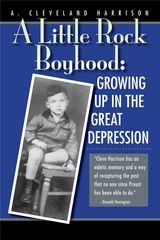 A Little Rock Boyhood: Growing Up in the Great Depression
A. Cleveland Harrison
Butler Center for Arkansas Studies, 2010 History books provide the statistics and the “big picture” of the Great Depression, but what did any of that mean for a family just trying to make it through those years? A. Cleveland Harrison’s A Little Rock Boyhood provides that viewpoint in this evocative memoir as he captures what Little Rock was like for him as a child in the 1930s. The Harrison family’s experiences and those of their extended family and neighbors bring the tough economic times down to the individual level. The youngest Harrison is an able reporter, relating the memories of an observant though naive child. All was not grim, though, if you were a kid, and Harrison describes those happy times. He remembers his life in the residential neighborhoods of downtown Little Rock when a child could grow up in difficult times without becoming difficult. This book is an insightful look back at a time, a place, and a childhood.
 Little Saigons: Staying Vietnamese in America
Karin Aguilar–San Juan
University of Minnesota Press, 2009 Karin Aguilar-San Juan examines the contradictions of Vietnamese American community and identity in two emblematic yet different locales: Little Saigon in suburban Orange County, California (widely described as the capital of Vietnamese America) and the urban "Vietnamese town" of Fields Corner in Boston, Massachusetts. Their distinctive qualities challenge assumptions about identity and space, growth amid globalization, and processes of Americanization. With a comparative and race-cognizant approach, Aguilar-San Juan shows how places like Little Saigon and Fields Corner are sites for the simultaneous preservation and redefinition of Vietnamese identity. Intervening in debates about race, ethnicity, multiculturalism, and suburbanization as a form of assimilation, this work elaborates on the significance of place as an integral element of community building and its role in defining Vietnamese American-ness. Staying Vietnamese, according to Aguilar-San Juan, is not about replicating life in Viet Nam. Rather, it involves moving toward a state of equilibrium that, though always in flux, allows refugees, immigrants, and their U.S.-born offspring to recalibrate their sense of self in order to become Vietnamese anew in places far from their presumed geographic home.
The Little Seal: An Alaska Adventure
Written and Illustrated by Ram Papish
University of Alaska Press, 2009 The northern fur seal spends most of its life in the open ocean of the North Pacific, from California up through Alaska and down to Japan. These seals travel hundreds of miles, farther than any other seal or sea lion, to reach their remote breeding grounds. Most fur seals go to the Pribilof Islands of Alaska, where, historically, several million fur seals converged annually, but the population counted in the Pribilofs in 2008 was less than one million and dropping rapidly. Ram Papish’s richly illustrated story follows these magnificent—and increasingly vulnerable—creatures through the most important part of their lives.
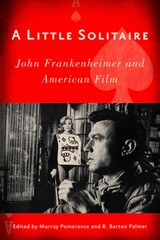 A Little Solitaire: John Frankenheimer and American Film
Pomerance, Murray
Rutgers University Press, 2011 Think about some commercially successful film masterpieces--The Manchurian Candidate. Seven Days in May. Seconds. Then consider some lesser known, yet equally compelling cinematic achievements--The Fixer. The Gypsy Moths. Path to War. These triumphs are the work of the best known and most highly regarded Hollywood director to emerge from live TV drama in the 1950s--five-time Emmy-award-winner John Frankenheimer. Although Frankenheimer was a pioneer in the genre of political thrillers who embraced the antimodernist critique of contemporary society, some of his later films did not receive the attention they deserved. Many claimed that at a midpoint in his career he had lost his touch. World-renowned film scholars put this myth to rest in A Little Solitaire, which offers the only multidisciplinary critical account of Frankenheimer's oeuvre. Especially emphasized is his deep and passionate engagement with national politics and the irrepressible need of human beings to assert their rights and individuality in the face of organizations that would reduce them to silence and anonymity.
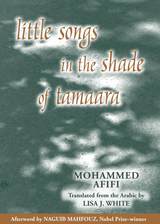 Little Songs in the Shade of Tamaara
Muhammed Afifi
University of Arkansas Press, 2000 Paradise, for the skeptic Mohammed Afifi, was just four steps down from his porch into a sunny garden. There he would sit, morning and evening, in the shadow of Tamaara, his beloved tamarhinna tree, soaking up the sights, sounds, and smells of his precious corner of the natural world. From an old yellow straw chair, Afifi would train his perceptive gaze on that garden in all its detail. Flora and fauna blessed him with honorary membership in their enchanted realm. Only the rare downpours of winter and the dust storms of spring could banish him indoors. Yet, whether inspired at the side of the heater, purring black cat on his lap, or next to the pansy bed, with ecstatic flocks of bee-eaters overhead, Afifi’s intimate, whimsical musings radiate a profound and unique sense of place. Lisa J. White’s nuanced translation of Taramiim fii Dhill Taraara captures Afifi’s impish, ironic sense of humor and his unsparing honesty. She handles Afifi’s parting gift to the world with great care and honor. Mohammed Afifi died in 1981, in winter, just after completing this fictionalized memoir. Majestic and melancholy, mysterious and magical—the essence of his world, Afifi’s extraordinary garden, is here revealed to the English-speaking world.
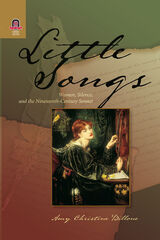 LITTLE SONGS: WOMEN, SILENCE, AND THE NINETEENTH-CENTURY SONNET
AMY CHRISTINE BILLONE
Ohio State University Press, 2002 In Little Songs: Women, Silence, and the Nineteenth-Century Sonnet, Amy Christine Billone analyzes the bond between lyric poetry and silence in women’s sonnets ranging from the late eighteenth-century works of Charlotte Smith, Helen Maria Williams, and Anna Maria Smallpiece to Victorian texts by Elizabeth Barrett, Christina Rossetti, Isabella Southern, and other, lesser-known female poets. Although scholars acknowledge that women initiated the sonnet revival in England, Little Songs is the only major study of nineteenth-century female sonneteers. Billone argues not that women’s sonnets overcame silence in favor of lyrical speech during the nineteenth-century sonnet revival, but rather that women simultaneously posited both muteness and volubility through style and theme. In opposition to criticism that stresses a modern shift from compensatory to non-consolatory poems of mourning, Billone demonstrates how women invented contemporary elegiac poetics a century in advance. Adding to critical interest in the alliance between silence and literature, this book offers a complex study of the overwhelming impact that silence makes, not only on British women’s poetry, but also on the development of modern poetry and intellectual inquiry. Ultimately, Little Songs illustrates how the turn away from the kind of silence that preoccupied nineteenth-century women poets introduced the start of twentieth-century thought.
The Little Space: Poems Selected and New, 1968–1998
Alicia Suskin Ostriker
University of Pittsburgh Press, 1998 In this selection of poems from thirty years of a distinguished writing career, we see the growth of a poet’s mind, heart, and spirit as Ostriker struggles to love “this wounded / World that we cannot heal, that is our bride.” Whether she probes the meaning of childhood, family, marriage, and motherhood, or art, history, politics, and God; whether she is celebrating sexuality or confronting mortality, the poet includes “whatever I can grasp of human experience within my art—the good and beautiful, the evil and chaotic. I tell my students that they must write what they are afraid to write; and I attempt to do so myself.”
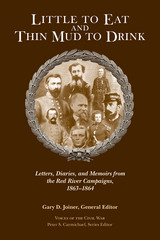 Little to Eat and Thin Mud to Drink: Letters, Diaries, and Memoirs from the Red River Campaigns, 1863–1864
Gary D. Joiner
University of Tennessee Press, 2007 Little to Eat and Thin Mud to Drink does more than just document the history of the Trans-Mississippi conflict of the Civil War. It goes much deeper, offering a profound, extended look into the innermost thoughts of the soldiers and civilians who experienced the events that took place in Louisiana, Texas, and Arkansas. Gleaning from a rich body of rare journals, diaries, and letters, this groundbreaking book demonstrates the significant impact that military operations in this region had on the local population in years between 1863 and 1865.
Readers will be introduced to the many different individuals who were touched by the campaign, both Confederate and Union. Ably edited by Joiner, a leading expert on the Trans-Mississippi conflict, and others, some of these manuscripts are witty, others somber, some written by Harvard- and Yale-educated aristocrats, others by barely literate farmers. All profoundly reflect their feelings regarding the extraordinary circumstances and events they witnessed.
In Little to Eat and Thin Mud to Drink, readers will have access to the diary of James A. Jarratt, a Confederate sergeant whose cogent narratives dispute commonly held views of the Battle of Mansfield. Representing a much different point of view is the diary of Private Julius Knapp, whose lengthy diary sheds light on the life of a Northern soldier fighting in the ill-fated Union march through Louisiana in 1864. A rare glimpse into the diary of a Southern woman is offered through the fascinating and melancholy musings of plantation belle Sidney Harding. Readers will also encounter the private letters of a French prince turned Confederate officer; of Elizabeth Jane Samford Fullilove, the angst-ridden wife of a Confederate soldier; and many others.
These first-person narratives vividly bring to life the individuals who lived through this important, but often neglected, period in Civil War history. Little to Eat and Thin Mud to Drink will engross anyone interested in exploring the human side of the Civil War.
Gary Joiner is an assistant professor of history at Louisiana State University in Shreveport and the director of the Red River Regional Studies Center at LSUS. His books include One Damn Blunder from Beginning to End: The Red River Campaign of 1864 and Union Failure in the West and Through the Howling Wilderness: The 1864 Red River Campaign and Union Failure in the West. He is also the coeditor, with Marilyn S. Joiner and Clifton D. Cardin, of another volume in the Voices of the Civil War series, No Pardons to Ask, nor Apologies to Make: The Journal of William Henry King, Gray's 28th Louisiana Infantry Battalion.
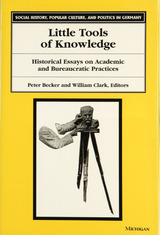 Little Tools of Knowledge: Historical Essays on Academic and Bureaucratic Practices
Peter Becker and William Clark, Editors
University of Michigan Press, 2001 This volume brings historians of science and social historians together to consider the role of "little tools"--such as tables, reports, questionnaires, dossiers, index cards--in establishing academic and bureaucratic claims to authority and objectivity. From at least the eighteenth century onward, our science and society have been planned, surveyed, examined, and judged according to particular techniques of collecting and storing knowledge. Recently, the seemingly self-evident nature of these mundane epistemic and administrative tools, as well as the prose in which they are cast, has demanded historical examination. The essays gathered here, arranged in chronological order by subject from the late seventeenth to the late twentieth century, involve close readings of primary texts and analyses of academic and bureaucratic practices as parts of material culture. The first few essays, on the early modern period, largely point to the existence of a "juridico-theological" framework for establishing authority. Later essays demonstrate the eclipse of the role of authority per se in the modern period and the emergence of the notion of "objectivity." Most of the essays here concern the German cultural space as among the best exemplars of the academic and bureaucratic practices described above. The introduction to the volume, however, is framed at a general level; the closing essays also extend the analyses beyond Germany to broader considerations on authority and objectivity in historical practice. The volume will interest scholars of European history and German studies as well as historians of science. Peter Becker is Professor of Central European History, European University Institute. William Clark is Lecturer in History and Philosophy of Science, Cambridge University.
Little Whale: A Story of the Last Tlingit War Canoe
Roy A. Peratrovich, Jr.
University of Alaska Press, 2016 Keet, a ten-year-old Tlingit Indian boy, stows away for a voyage on his father’s canoe . . . and soon finds himself caught in the middle of a wild seastorm. The story carries him far from his home village, and when he makes land, he winds up right in the middle of a dangerous dispute between two Indian clans. The story of how he copes with these surprises and extricates himself from danger is dramatic and unforgettable.
And it’s mostly true. Roy Peratrovich here builds a wonderful children’s tale on the bones of a story his own grandfather passed down. His accompanying illustrations bring the people and landscapes of Alaska—to say nothing of the adventures!—to stunning life, drawing young readers into a long-gone time when the whims of nature and man could suddenly test a boy’s courage.
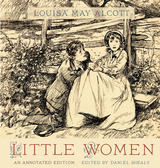 Little Women: An Annotated Edition
Louisa May Alcott
Harvard University Press, 2013 Little Women has delighted and instructed readers for generations. For many, it is a favorite book first encountered in childhood or adolescence. Championed by Gertrude Stein, Simone de Beauvoir, Theodore Roosevelt, and J. K. Rowling, it is however much more than the “girls’ book” intended by Louisa May Alcott’s first publisher. In this richly annotated, illustrated edition, Daniel Shealy illuminates the novel’s deep engagement with issues such as social equality, reform movements, the Civil War, friendship, love, loss, and of course the passage into adulthood.
The editor provides running commentary on biographical contexts (Did Alcott, like Jo, have a “mood pillow”?), social and historical contexts (When may a lady properly decline a gentleman’s invitation to dance?), literary allusions (Who is Mrs. Malaprop?), and words likely to cause difficulty to modern readers (What is a velvet snood? A pickled lime?). With Shealy as a guide, we appreciate anew the confusions and difficulties that beset the March sisters as they overcome their burdens and journey toward maturity and adulthood: beautiful, domestic-minded Meg, doomed and forever childlike Beth, selfish Amy, and irrepressible Jo. This edition examines the novel’s central question: How does one grow up well?
Little Women: An Annotated Edition offers something for everyone. It will delight both new and returning readers, young and old, male and female alike, who will want to own and treasure this beautiful edition full of color illustrations and photographs.
Little Words: Their History, Phonology, Syntax, Semantics, Pragmatics, and Acquisition
Ronald P. Leow, Héctor Campos, and Donna Lardiere, Editors
Georgetown University Press, 2009 Little Words is an interdisciplinary examination of the functions and change in the use of clitics, pronouns, determiners, conjunctions, discourse particles, auxiliary/light verbs, prepositions, and other “little words” that have played a central role in linguistic theory and in language acquisition research. Leading scholars present advanced research in phonology, morphology, syntax, semantics, discourse function, historical development, variation, and acquisition by children and adults. This unique volume integrates the views and findings of these different research areas into one professional source to be used within and across disciplines. Languages studied include English, Spanish, French, Romanian, German, Norwegian, Swedish, Slavonic, and Medieval Leonese.
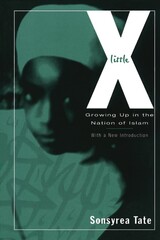 Little X: Growing Up In The Nation Of Islam
Sonsyrea Tate
University of Tennessee Press, 2004 "Instead of writing a bitter condemnation of the Nation of Islam, Tate has adroitly described its purpose as well as its shortcomings." —USA Today
"A temperate and sympathetic treatment of an African-American family's religious evolution." —Publishers Weekly
"A compelling story. It provides an honest, inside view of one of America's most controversial religious movements and perceptively points to social tensions of race, gender and religious identity." —Kirkus Reviews
"Extremely valuable. Recent literature is interested almost exclusively in male leaders. Tate's book provides a new perspective. I have used the book in a number of teaching contexts to very good results." —Judith Weisenfeld, Vassar College
In Little X, Sonsyrea Tate reveals, through the acute vision and engaging voice of a curious child, the practices and policies of the mysterious organization most know only through media portrayals of its controversial leaders Elijah Muhammad, Malcolm X, and Louis Farrakhan. First published in 1997, Little X chronicles the multigenerational experience of Tate's family, who broke from the traditional black church in the 1950s to join the radical Nation of Islam, then struggled to remain intact through disillusionment, shifting loyalties, and forays into Orthodox Islam.
Little X is also an absorbing story of a little girl whose strict Muslim education filled her with pride, confidence, and a longing for freedom, of a teenager in an ankle-length dress and headwrap struggling to fit in with non-Muslim peers, and of a young woman whose growing disillusionment with the Nation finally led to her break with the Muslim religion. Little X offers a rare glimpse into the everyday experience of the Nation of Islam, and into a little-understood part of America's history and heritage.
Sonsyrea Tate-Montgomery has been a staff writer for the Virginian Pilot, Chicago Tribune, and the Washington Post. The recipient of four coveted Echoes of Excellence awards from the National Association of Black Journalists, Tate has also worked as assistant to Congresswoman Eleanor Holmes Norton. She currently works as a political reporter for The Gazette, a Post-Newsweek publication.
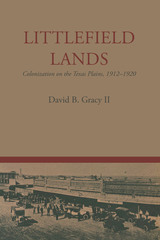 Littlefield Lands: Colonization on the Texas Plains, 1912–1920
By David B. Gracy II
University of Texas Press, 1968 The phenomenon of colonization by big land companies, common throughout the history of the United States, came late to the Panhandle-Plains of West Texas. Ranchers held sway there up into the 20th century. Then, realizing that the future followed the plow, they, joined by business owners and speculators, founded towns on their land, competed for railroad connections, provided irrigation wells and other improvements, and engaged in a variety of advertising activities to interest prospective settlers and to sell the land to farmers at a profit. Trainloads of such "prospectors" were brought in to tour the land; and salesmen of all kinds roamed all the more settled states painting enticing pictures of the fertile lands which their employers offered for sale. Major George W. Littlefield created the Littlefield Lands Company and founded the town of Littlefield, Texas, in 1912, in order to sell as farmland a part of his Yellow House Ranch. His sales manager, Arthur P. Duggan (his nephew by marriage, and grandfather of the author of this study), used many of the techniques then current to attract buyers for the Lamb County land in and around Littlefield. He dug wells and operated a demonstration farm; he planted trees, planned a park, and otherwise beautified the town; he helped to create and maintain a school, a bank, and a number of businesses; and he negotiated contracts and coordinated the activities of innumerable independent land agents. Because the role of the big land company in the settlement of the United States has not, on the whole, received the attention which it deserves, this detailed examination of the operations of one such company is of particular significance. Most of the book is devoted to the creation of the company, the steps taken to make the area attractive to potential settlers, and the problems which beset the building of the community. One chapter discusses the techniques and the difficulties of selling land through independent agents. The final chapter considers the people who moved onto the Littlefield tracts—where they came from, why they came, what their reactions were to the plains country, and how they learned to cope with their new environment. An appendix gives pertinent information about all land transactions conducted by the company between 1912 and 1920, and about each buyer. For this study the author made use of previously unknown records discovered while he was gathering information for a biography of Major Littlefield.
Little-Known Operas
Patrick Donnelly
Four Way Books, 2019 The lush, lexically gorgeous and emotionally complex poems of Little- Known Operas guide us through the terrain of love, sex, same-sex marriage, illness, death, and art.
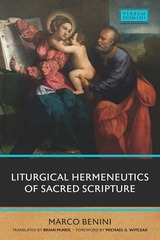 Liturgical Hermeneutics of Sacred Scripture
Marco Benini
Catholic University of America Press, 2023 The purpose of this book is to explore what a liturgical approach to the Bible looks like and what hermeneutical implications this might have: How does the liturgy celebrate, understand, and communicate Scripture? The starting point is Pope Benedict's affirmation that “a faith-filled understanding of sacred Scripture must always refer back to the liturgy” (Verbum Domini 52).
The first part of the book (based on SC 24) provides significant examples to demonstrate: The liturgical order of readings intertextually combines Old Testament and New Testament readings using manifold hermeneutical principles, specifically how the psalms show the wide range of interpretations the liturgy employs. Prayers are biblically inspired and help to appropriate Scripture personally. The hymns convey Scripture in a poetic way. Signs and actions such as foot-washing or the Ephphetha rite enact Scripture. The study considers the Mass, the sacraments and the Liturgy of the Hours.
In the second part, Benini systematically focuses on the various dimensions of liturgical hermeneutics of the Bible, which emerge from the first part. The study reflects the approaches the liturgy offers to Scripture and its liturgical reception. It explores theological aspects such as the unity of the two Testaments in Christ’s paschal mystery or the anamnesis as a central category in both Scripture and liturgy. The liturgy does not understand Scripture primarily as a document of the past, but celebrates it as a current and living “Word of the Lord,” as a medium of encounter with God: Scripture is sacramental.
Liturgical Hermeneutics of Sacred Scripture seeks to contribute not only to the comparison of the Roman, Ambrosian, and Byzantine Rite regarding the Word of God, but most of all to the overall “liturgical approach” to Scripture. As such, it promotes an interdisciplinary dialogue of liturgical and biblical studies.
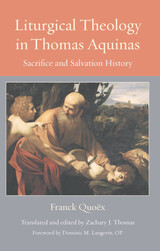 Liturgical Theology in Thomas Aquinas: Sacrifice and Salvation History
Franck Quoex
Catholic University of America Press, 2023 In this volume, Fr. Franck Quoëx responds to Joseph Ratzinger’s call for a renewed appreciation of liturgical rite. A student of Pierre Gy, OP, he brings to this study of Aquinas’s liturgical theology a rare combination of expert knowledge of liturgical sources and history and the best of modern historical-critical research guided by sound theological judgment. Fr. Quoëx frames his study with an overview of the problem of rite in modern theological-anthropological discourse, before turning to Aquinas’ theory of worship in the treatise on the virtue of religion. He then explores Aquinas’ doctrine on the cultic dimensions of the Eucharist and other sacraments in his sacramental theology more broadly, finishing with a close study of the mass commentary of the Tertia Pars.
Although there has been increasing attention to Thomas’s treatment of religion as a virtue, none have approached him from an anthropological angle with a focus on the nature of liturgical rite, or fully exploited the perspectives of liturgical scholarship to shed light on sacramental theology. Quoëx’s work, as the work of a Thomist, liturgist, and medievalist well versed in medieval liturgical development and in the genre of often-allegorical liturgical commentary, opens up this crucial but neglected facet of Aquinas’ theological synthesis. Few books have been published on Aquinas’s liturgical theology. Now that interest in Aquinas’s virtue theory and sacramental theology is growing rapidly, Quoëx’s studies are an invitation to further reflection on the topic of Aquinas’s liturgical theology with its manifold ramifications for and connections with other theological topics in his Summa, including his theological anthropology, his soteriology, his treatment of the Old and New Laws, and his account of the virtue of religion in connection with the other virtues.
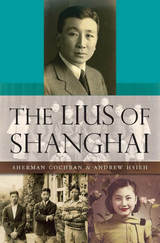 The Lius of Shanghai
Sherman Cochran and Andrew Hsieh
Harvard University Press, 2013 From the Sino-Japanese War to the Communist Revolution, the onrushing narrative of modern China can drown out the stories of the people who lived it. Yet a remarkable cache of letters from one of China’s most prominent and influential families, the Lius of Shanghai, sheds new light on this tumultuous era. Sherman Cochran and Andrew Hsieh take us inside the Lius’ world to explore how the family laid the foundation for a business dynasty before the war and then confronted the challenges of war, civil unrest, and social upheaval.
Cochran and Hsieh gained access to a rare collection containing a lifetime of letters exchanged by the patriarch, Liu Hongsheng, his wife, Ye Suzhen, and their twelve children. Their correspondence offers a fascinating look at how a powerful family navigated the treacherous politics of the period. They discuss sensitive issues—should the family collaborate with the Japanese occupiers? should it flee after the communist takeover?—as well as intimate domestic matters like marital infidelity. They also describe the agonies of wartime separation, protracted battles for control of the family firm, and the parents’ struggle to maintain authority in the face of swiftly changing values.
Through it all, the distinctive voices of the Lius shine through. Cochran and Hsieh’s engaging prose reveals how each member of the family felt the ties that bound them together. More than simply a portrait of a memorable family, The Lius of Shanghai tells the saga of modern China from the inside out.
 Live and Be Well: A Celebration of Yiddish Culture in America
Vicki Gold Levi
Rutgers University Press, 2000 Like a warm family album, this lively book heralds and documents the rich and vibrant traditions of Yiddish-speaking immigrants and their children in “the golden land,” from the first arrivals to the Second World War. Meet the famous, the infamous, and the unknown—from hotelier Jenny Grossinger to mobster Jake “Greasy Thumb” Guzik to Moses Solomon, the would-be “Jewish Babe Ruth;” from anarchist Emma Goldman to entertainer Eddie Cantor. Share the struggles and the triumphs of the labor unions, of Yiddish playwrights and poets. Enter the sweatshops of New York’s Lower East Side and the first Jewish settlements in Los Angeles and Chicago. Taste pastrami from Canter’s Deli in Los Angeles, knishes from Yonah Shimmel’s in New York City, and the famous “smookmit” of the Montreal ghetto. Lavishly illustrated with photos, cartoons, theater posters, and song sheets, here is a book to delight and inform. It is a joyous celebration of life.
Live and Remember
Valentin Rasputin
Northwestern University Press, 1992 First published in Russian in 1974, Live and Remember was immediately hailed by Soviet critics as a superb if atypical example of war literature and a moving depiction of the degradation and ultimate damnation of a frontline deserter. The novel tells the story of a Siberian peasant who makes a tragic miscalculation by deserting in the last year of the war, and of the loyal wife who embraces his fate as her own.
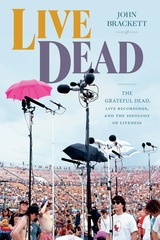 Live Dead: The Grateful Dead, Live Recordings, and the Ideology of Liveness
John Brackett
Duke University Press, 2023 The Grateful Dead were one of the most successful live acts of the rock era. Performing more than 2,300 shows between 1965 and 1995, the Grateful Dead’s reputation as a “live band” was—and continues to be—sustained by thousands of live concert recordings from every era of the group’s long and colorful career. In Live Dead, musicologist John Brackett examines how live recordings—from the group’s official releases to fan-produced tapes, bootlegs to “Betty Boards,” and Dick’s Picks to From the Vault—have shaped the general history and popular mythology of the Grateful Dead for more than fifty years. Drawing on a diverse array of materials and documents contained in the Grateful Dead Archive, Live Dead details how live recordings became meaningful among the band and their fans not only as sonic souvenirs of past musical performances but also as expressions of assorted ideals, including notions of “liveness,” authenticity, and the power of recorded sound.
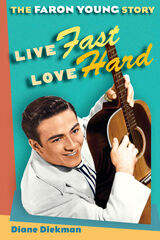 Live Fast, Love Hard: The Faron Young Story
Diane Diekman
University of Illinois Press, 2012 As one of the best-known honky tonkers to appear in the wake of Hank Williams’s death, Faron Young was a popular presence on Nashville’s music scene for more than four decades. The Singing Sheriff produced a string of Top Ten hits, placed over eighty songs on the country music charts, and founded the long-running country music periodical Music City News in 1963. Flamboyant, impulsive, and generous, he helped and encouraged a new generation of talented songwriter-performers that included Willie Nelson and Bill Anderson. In 2000, four years after his untimely death, Faron was inducted into the Country Music Hall of Fame. Presenting the first detailed portrayal of this lively and unpredictable country music star, Diane Diekman masterfully draws on extensive interviews with Young’s family, band members, and colleagues. Impeccably researched, Diekman’s narrative also weaves anecdotes from Louisiana Hayride and other old radio shows with ones from Young’s business associates, including Ralph Emery. Her unique insider’s look into Young’s career adds to an understanding of the burgeoning country music entertainment industry during the key years from 1950 to 1980, when the music expanded beyond its original rural roots and blossomed into a national (ultimately, international) enterprise. Echoing Young’s characteristic ability to entertain and surprise fans, Diekman combines an account of his public career with a revealing, intimate portrait of his personal life.
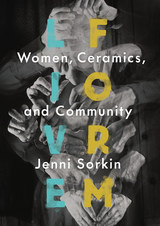 Live Form: Women, Ceramics, and Community
Jenni Sorkin
University of Chicago Press, 2016 Ceramics had a far-reaching impact in the second half of the twentieth century, as its artists worked through the same ideas regarding abstraction and form as those for other creative mediums. Live Form shines new light on the relation of ceramics to the artistic avant-garde by looking at the central role of women in the field: potters who popularized ceramics as they worked with or taught male counterparts like John Cage, Peter Voulkos, and Ken Price.
Sorkin focuses on three Americans who promoted ceramics as an advanced artistic medium: Marguerite Wildenhain, a Bauhaus-trained potter and writer; Mary Caroline (M. C.) Richards, who renounced formalism at Black Mountain College to pursue new performative methods; and Susan Peterson, best known for her live throwing demonstrations on public television. Together, these women pioneered a hands-on teaching style and led educational and therapeutic activities for war veterans, students, the elderly, and many others. Far from being an isolated field, ceramics offered a sense of community and social engagement, which, Sorkin argues, crucially set the stage for later participatory forms of art and feminist collectivism.
Live from Atlantic City: The Miss America Pageant Before, After, and In Spite of Television
A. R. Riverol
University of Wisconsin Press, 1992 A great American institution; the bane of feminist ideology; a cornucopia of corn—few are neutral about the Miss America Pageant. Live from Atlantic City traces the pageant’s history from its birth as pseudo-event in 1920 through its emergence as American popular culture icon.
A. R. Riverol takes the reader to times and places where no television camera has focused. Drawing upon (and sometimes debating with) primary and secondary sources, the author paints a vivid picture of life in Atlantic City during pageant week—whether that week be in 1944 or 1984. More than just chronicling events, the author also presents two opposing perspectives on the pageant: the pageant as celebration and idealization of American womanhood and the pageant as sexist, exploitative anachronism.
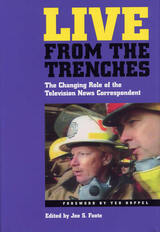 Live From the Trenches: The Changing Role of the Television News Correspondent
Edited by Joe S. Foote. Foreword by Ted Koppel
Southern Illinois University Press, 1998
From Edward R. Murrow to "Sixty Minutes" and CNN, the television news correspondent has become a fixture of American journalism in the latter half of the twentieth century. The correspondent's role has changed, however, as centralized control, changing technology, "infotainment," and profit margin have influenced the way that television networks operate and television news is reported.
In spite of the flood of literature dealing with the American television networks, the evening anchors, and prime-time personalities, little has been written about the "the foot soldier of network news." Live from the Trenches fills that gap, providing the first examination of television news correspondents and their work, with much of the analysis coming from the correspondents themselves.
The correspondents:
Jim Bittermann, a former ABC Paris correspondent, has been the CNN Paris correspondent since 1996. He received a National News Emmy for his coverage of the 1988 Sudan famine.
Chris Bury, correspondent for "Nightline" since 1993, has covered foreign and domestic stories from Waco to Whitewater.
Michael Murrie, after a dozen years in television news at KSDK in St. Louis, is an associate professor and director of the Telecommunications Master's Program for the Department of Radio-Television at Southern Illinois University at Carbondale.
Roger O'Neil, NBC News Denver bureau chief and correspondent since 1983, was the lead reporter for NBC during the Oklahoma City bombing trial of Timothy McVeigh.
Walter C. Rodgers, bureau chief and correspondent in Jerusalem, joined CNN in 1993 as the Berlin correspondent. Prior to joining CNN, he worked for ABC for twelve years.
Marlene Sanders broke barriers for women throughout her career and has won three Emmies. As a correspondent at ABC News in 1964, she was the first woman to anchor a prime-time network newscast.
George Strait is the primary ABC News correspondent for medical and health news. Among his many awards are the Alfred I. duPont Award and Gold Medal Award from the National Association of Black Journalists.
Ed Turner is CNN's first editor-at-large. Based in Washington, he represents the CNN News Group globally.
Garrick Utley joined CNN in 1997 after thirty years covering more than seventy countries for ABC.
Live Nude Girl: My Life as an Object
Kathleen Rooney
University of Arkansas Press, 2008 Live Nude Girl: My Life as an Object is a lively meditation on the profession of art modeling as it has been practiced in history and as it is practiced today. Kathleen Rooney draws on her own experiences working as an artist's model, as well as the famous, notorious, and mysterious artists and models through the ages. Through a combination of personal perspective, historical anecdote, and witty prose, Live Nude Girl reveals that both the appeal of posing nude for artists and the appeal of drawing the naked figure lie in our deeply human responses to beauty, sex, love, and death.
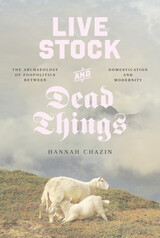 Live Stock and Dead Things: The Archaeology of Zoopolitics between Domestication and Modernity
Hannah Chazin
University of Chicago Press, 2024 Reconceptualizes human-animal relationships and their political significance in ancient and modern societies.
In Live Stock and Dead Things, Hannah Chazin combines zooarchaeology and anthropology to challenge familiar narratives about the role of nonhuman animals in the rise of modern societies. Conventional views of this process tend to see a mostly linear development from hunter-gatherer societies, to horticultural and pastoral ones, to large-scale agricultural ones, and then industrial ones. Along the way, traditional accounts argue that owning livestock as property, along with land and other valuable commodities, introduced social inequality and stratification. Against this, Chazin raises a provocative question: What if domestication wasn’t the origin of instrumentalizing nonhuman animals after all?
Chazin argues that these conventional narratives are inherited from conjectural histories and ignore the archaeological data. In her view, the category of “domestication” flattens the more complex dimensions of humans’ relationship to herd animals. In the book’s first half, Chazin offers a new understanding of the political possibilities of pastoralism, one that recognizes the powerful role herd animals have played in shaping human notions of power and authority. In the second half, she takes readers into her archaeological fieldwork in the South Caucasus, which sheds further light on herd animals’ transformative effect on the economy, social life, and ritual. Appealing to anthropologists and archaeologists alike, this daring book offers a reconceptualization of human-animal relationships and their political significance.
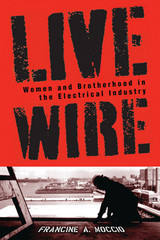 Live Wire: Women and Brotherhood in the Electrical Industry
Authored by Fran Moccio
Temple University Press, 2010 Belonging to a union can bring higher wages, fringe benefits, greater job security and, sometimes, training. But unions—still known as "brotherhoods"—often remain rigidly segregated by gender, despite the fact that sexual harassment and discrimination in employment are illegal. Live Wire is an in-depth case study of Local 3 of the International Brotherhood of Electrical Workers, arguably the most powerful and influential building trades local in the United States. Francine Moccio brings to life forty years of public policy failure that has resulted in restricted opportunities for women in skilled blue-collar jobs. Live Wire is a unique foray into the gender dynamics of one trade and one union in historical depth, based on extensive primary, secondary, and archival research. It contributes much-needed research about sex segregation in blue-collar occupations, particularly in unions and fraternal organizations. And it provides important insights into complex interactions of work, union, and family life.
The Live-Action Animated Film
Kyle Meikle
Rutgers University Press, 2026 Since cinema’s beginning, live actors and cartoon characters have traded places and invaded each other’s spaces, with real people getting animated and animated character getting real. The Live-Action Animated Film looks at the long history of movies that combine live action with 2D, stop-motion, and 3D animation to hallucinogenic effect. This survey suggests that the experimental and idiosyncratic mixed pics of the twentieth century set the template for the mainstream blockbusters of the twenty-first. Covering everything from Technicolor musicals and creature features to contemporary remakes and reboots, The Live-Action Animated Film brings this significant, boundary-blurring genre into sharper focus. In retrospect, the introduction of cartoons into live action looks as central to film history as the coming of sound or color.
Lived Diversities: Space, Place and Identities in the Multi-Ethnic City
Charles Husband, Yunis Alam, Jörg Hüttermann, and Joanna Fomina
Bristol University Press, 2014 This timely book investigates the interactions of multiple ethnic groups in the contemporary inner city. Focusing in particular on Muslim communities, and the discrimination they have faced, it addresses difficult issues of integration and identity, while offering a detailed exploration of the politics and practice of multicultural coexistence. It will be essential reading for urban policy scholars and those studying ethnic diversity and the politics of space and place.
 The Lived Experience of Improvisation: In Music, Learning and Life
Simon Rose
Intellect Books, 2017 Improvisation is crucial to a wide range of artistic activities—most prominently, perhaps, in music, but extending to other fields of experience such as literature and pedagogy. Yet it gets short shrift in both appreciation and analysis of art within education. This is in no small part due to our tendency to view the world in fixed categories and structures that belie our ability to generate creative, groundbreaking responses within and between those structures.
The Lived Experience of Improvisation draws on an analysis of interviews with highly regarded improvisers, including Roscoe Mitchell, Pauline Oliveros, and George Lewis. Simon Rose also exploits his own experience as a musician and teacher, making a compelling case for bringing back improvisation from the margins. He argues that improvisation is a pervasive aspect of being human and that it should be at the heart of our teaching and understanding of the world.
A Lived Practice
Edited by Mary Jane Jacob and Kate Zeller
School of the Art Institute of Chicago, 2015 A Lived Practice examines the reciprocal relationship of art and life: Artist-practitioners are shaped by their experiences, and they in turn create and enhance the experience of others. Based on a symposium held at the School of the Art Institute of Chicago in 2014, this volume is intended to spur new thinking in the field of socially engaged art practice. Contributors, including Lewis Hyde, Ernesto Pujol, Crispin Sartwell, and Wolfgang Zumdick, address essential questions about what is art and who is the artist, and also explore how artists can lead meaningful lives.
Lived Time: Phenomenological and Psychopathological Studies
Eugène Minkowski; translated by Nancy Metzel; with a new foreword by Dan Zahavi
Northwestern University Press, 2019 Eugène Minkowski’s Lived Time articulates a phenomenology of time that is as inspired by the philosophical writings of Henri Bergson and Edmund Husserl as it is by the psychiatric descriptions of Eugen Bleuler. After providing a phenomenological description of the experience of time in normal life, Minkowski considers a number of mental illnesses, including schizophrenia, manic depression, and dementia, and he attempts to show that these pathological cases can be characterized in terms of a distortion of lived time and space.
First published in French in 1933 as Le temps vécu, this edition of this classic work of phenomenological psychiatry and psychopathology includes a new foreword by Dan Zahavi that presents some of Minkowski’s main ideas and discusses his contemporary relevance.
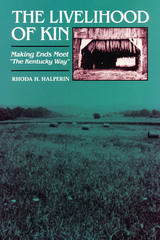 The Livelihood of Kin: Making Ends Meet "The Kentucky Way"
By Rhoda H. Halperin
University of Texas Press, 1990 Rural Appalachians in Kentucky call it "The Kentucky Way"—making a living by doing many kinds of paid and unpaid work and sharing their resources within extended family networks. In fact, these strategies are practiced by rural people in many parts of the world, but they have not been studied extensively in the United States. In The Livelihood of Kin, Rhoda Halperin undertakes a detailed exploration of this complex, family-oriented economy, showing how it promotes economic well-being and a sense of identity for the people who follow it. Using actual life and work histories, Halperin shows how people make a living "in between" the cash economy of the city and the agricultural subsistence economy of the country. In regionally based, three-generation kin networks, family members work individually and jointly at many tasks: small-scale agricultural production, food processing and storage, odd jobs, selling used and new goods in marketplaces, and wage labor, much of which is temporary. People can make ends meet even in the face of job layoffs and declining crop subsidies. With these strategies people win a considerable degree of autonomy and control over their lives. Halperin also examines how such multiple livelihood strategies define individual identity by emphasizing a person’s role in the family network over an occupation. She reveals, through psychiatric case histories, what damage can result when individuals leave the family network for wage employment in the cities, as increasing urbanization has forced many people to do. While certainly of interest to scholars of Appalachian studies, this lively and readable study will also be important for economic anthropologists and urban and rural sociologists.
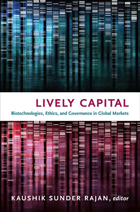 Lively Capital: Biotechnologies, Ethics, and Governance in Global Markets
Kaushik Sunder Rajan, ed.
Duke University Press, 2012 Lively Capital is an urgent and important collection of essays addressing the reconfigured relations between the life sciences and the market. Exploring the ground where social and cultural anthropology intersect with science and technology studies, prominent scholars investigate the relationship of biotechnology to ethics, governance, and markets, as well as the new legal, social, cultural, and institutional mechanisms emerging to regulate biotechnology. The contributors examine genomics, pharmaceutical marketing, intellectual property, environmental science, clinical trials, patient advocacy, and other such matters as they are playing out in North and South America, Europe, Africa, and Asia. Lively Capital is not only about the commercialization of the life sciences, but their institutional histories, epistemic formations, and systems of valuation. It is also about the lively affects—the emotions and desires—involved when technologies and research impinge on experiences of embodiment, kinship, identity, disability, citizenship, accumulation, and dispossession. At stake in the commodification of the life sciences are opportunities to intervene in and adjudicate matters of health, life, and death. Contributors. Timothy Choy, Joseph Dumit, Michael M. J. Fischer, Kim Fortun, Mike Fortun, Donna Haraway, Sheila Jasanoff, Wen-Hua Kuo, Andrew Lakoff, Kristin Peterson, Chloe Silverman, Elta Smith, Kaushik Sunder Rajan, Travis J. Tanner
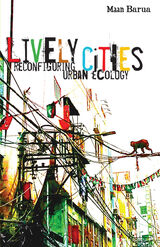 Lively Cities: Reconfiguring Urban Ecology
Maan Barua
University of Minnesota Press, 2023 A journey through unexplored spaces that foreground new ways of inhabiting the urban
One of the fundamental dimensions of urbanization is its radical transformation of nature. Today domestic animals make up more than twice the biomass of people on the planet, and cities are replete with nonhuman life. Yet current accounts of the urban remain resolutely anthropocentric. Lively Cities departs from conventions of urban studies to argue that cities are lived achievements forged by a multitude of entities, drawing attention to a suite of beings—human and nonhuman—that make up the material politics of city making. From macaques and cattle in Delhi to the invasive parakeet colonies in London, Maan Barua examines the rhythms, paths, and agency of nonhumans across the city. He reconceptualizes several key themes in urban thought, including infrastructure, the built environment, design, habitation, and everyday practices of dwelling and provides a critical intervention in animal and urban studies. Generating fresh conversations between posthumanism, postcolonialism, and political economy, Barua reveals how human and nonhuman actors shape, integrate, subsume, and relate to urban space in fascinating ways. Through novel combinations of ethnography and ethology, and focusing on interlocutors that are not the usual suspects animating urban theory, Barua’s work considers nonhuman lifeworlds and the differences they make in understanding urbanicity. Lively Cities is an agenda-setting intervention, ultimately proposing a new grammar of urban life.
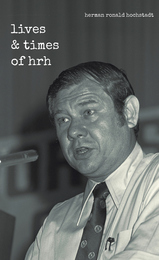 the lives & times of hrh
Herman Hochstadt
National University of Singapore Press, 2020 Herman Hochstadt, or hrh, as he is better known, joined Singapore’s civil service in 1960, rising quickly to the position of principal secretary for Prime Minister Lee Kuan Yew, and later serving as Permanent Secretary in key ministries like Finance and Defense. hrh had an unusual ability to inspire those working for him, and his signature wit and charm are on display in this winning memoir, which deftly weaves together stories of his career and some of the key moments of Singapore’s development. He begins with his Eurasian family’s history in Singapore, including that of his grandfather, John Hochstadt, who founded the Singapore Casket Company. He continues through his childhood, detailing an education that was interrupted by the Japanese occupation, before moving on to his working life, which included influential positions throughout the public and private sectors. Full of warmth and humor, the lives and times of hrh traces a life dedicated to public service in Singapore, from its time as a crown colony through its evolution to the Republic of Singapore.
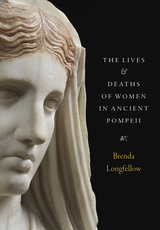 The Lives and Deaths of Women in Ancient Pompeii
Brenda Longfellow
University of Texas Press, 2025 A study of women’s lives in the public sphere of the ancient city of Pompeii. Pompeii’s well-preserved remains provide a unique opportunity for the close study of ancient lives. Drawing on statues, inscriptions, graffiti, wall paintings, and the architecture of tombs, sanctuaries, houses, and public spaces, The Lives and Deaths of Women in Ancient Pompeii examines the public lives of women in Pompeii. Art historian Brenda Longfellow explores how historical women of all social backgrounds acted in public and exerted agency on behalf of themselves and others, ultimately finding that female initiatives in Pompeii were not only accepted but desired by the community to a greater extent than has previously been recognized. Longfellow centers her study on a few key women—including the city’s most notable female patron, Eumachia—and uses them to examine female roles in postmortem commemorations, civic patronage and benefactions, commerce, the priesthood, and the home. By following these individuals, Longfellow examines women’s lives in Pompeii in both abstract and concrete ways, allowing readers to better understand their importance to the city and society. The result is a groundbreaking book that foregrounds the agency of women in everyday Pompeii.
Lives and Legends of the Christmas Tree Ships
Fred Neuschel
University of Michigan Press, 2007 Lives and Legends of the Christmas Tree Ships brings the maritime heritage of the Great Lakes to life, using the tragic story of the schooner Rouse Simmons as a porthole into the robust but often forgotten communities that thrived along Lake Michigan from the Civil War to World War I. Memorialized in songs, poems, fiction, and even a musical, the infamous ship that went down in a Thanksgiving storm while delivering Christmas trees to Chicago has long been shrouded in myth and legend. As a result, the larger story of the captain, crew, and affected communities has often been overlooked. Fred Neuschel delves into this everyday life of camaraderie, drudgery, ambition, and adventure—with tales of the Midwest’s burgeoning immigrant groups and rapid industrialization—to create a true story that is even more fascinating than the celebrated legends.
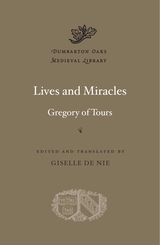 Lives and Miracles
Gregory of Tours
Harvard University Press, 2015 Gregory of Tours served as bishop of Tours, then a city in the Frankish kingdom, from 573 to 594. Acclaimed by the French as “the father of our history” on account of his History of the Franks, he also wrote stories about holy men and women and about wondrous events he experienced, witnessed, or knew as miracles. In our times many people deny the existence of miracles, while others use the term so loosely that it becomes almost meaningless. Must a true miracle transcend “natural laws”?
Gregory’s lively stories relate what he regarded as the visible results of holy power, direct or mediated, and its role in the lives of his contemporaries. His conversational narratives, which are largely without self-conscious stylistic effects, present unique, often moving, glimpses into his world. For Gregory, the frontiers between interior and exterior, God and matter, word or gesture and its referent, remained fluid.
Lives and Miracles includes the texts of The Life of the Fathers, The Miracles of the Martyr Julian, and The Miracles of Bishop Martin.
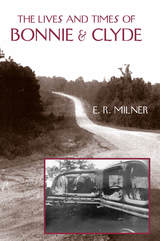 The Lives and Times of Bonnie & Clyde
E. R. Milner
Southern Illinois University Press, 2003
Relying on primary sources— oral history interviews, personal memoirs, newspaper articles, official records, diaries, and letters— E. R. Milner cuts through myth and legend to create this startling portrait of the real Bonnie and Clyde.
In his prologue, Milner introduces Bonnie Parker and Clyde Barrow, showing them as they drive along a rural Louisiana lane toward the ambush that would put a dramatic end to their turbulent lives of crime. Milner then traces their backgrounds, noting the events that bring the two outlaws together. The ensuing adventures of Bonnie and Clyde featured gun battles, narrow escapes and captures, frequent moves, and, of necessity, several shifts in personnel over a short period of time. It was a life of wild action, betrayal, and sometimes even gallantry. In the abstract, an aura of romance surrounded this violent pair.
Although the mythology surrounding Bonnie and Clyde is charged with drama and fascination, Milner reveals the truth behind the bloody legend, carefully gleaning materials from obscure locally published accounts, previously untapped court records, and archived but unpublished oral history accounts from some sixty victims, neighbors, relatives, and police who were involved in the exploits of the infamous duo. And the truth proves to be sufficiently exciting. Romance aside, the Barrow gang carved a grisly swath through Texas, Arkansas, Oklahoma, and Missouri. The string of deaths was long— and real: Akota, Oklahoma, sheriff severely wounded, deputy killed; Sherman, Texas, grocery clerk killed; Temple, Texas, man killed as gang attempts to steal his car; Joplin, Missouri, two officers killed; Alma, Arkansas, police officer killed; Crockette, Texas, prison guard killed; Miami, Oklahoma, police officer killed.
Milner traces this violent path until 23 May 1934, when Bonnie and Clyde die in an ambush. Even dead, they draw crowds and are buried in a circus-like atmosphere. In death they continue to intrigue us in ways few criminals had before or have since.
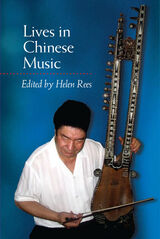 Lives in Chinese Music
Edited by Helen Rees
University of Illinois Press, 2008 Until recently, most scholarly work on Chinese music in both Chinese and Western languages has focused on genres, musical structure, and general history and concepts, rather than on the musicians themselves. This volume breaks new ground by focusing on individual musicians active in different amateur and professional music scenes in mainland China, Hong Kong, and Chinese communities in Europe. Using biography to deepen understanding of Chinese music, contributors present richly contextualized portraits of rural folk singers, urban opera singers, literati, and musicians on both geographic and cultural frontiers. The topics investigated by these authors provide fresh insights into issues such as the urban-rural divide, the position of ethnic minorities within the People's Republic of China, the adaptation of performing arts to modernizing trends of the twentieth century, and the use of the arts for propaganda and commercial purposes. The social and political history of China serves as a backdrop to these discussions of music and culture, as the lives chronicled here illuminate experiences from the pre-Communist period through the Cultural Revolution to the present. Showcasing multiple facets of Chinese musical life, this collection is especially effective in taking advantage of the liberalization of mainland China that has permitted researchers to work closely with artists and to discuss the interactions of life and local and national histories in musicians' experiences. Contributors are Nimrod Baranovitch, Rachel Harris, Frank Kouwenhoven, Tong Soon Lee, Peter Micic, Helen Rees, Antoinet Schimmelpenninck, Shao Binsun, Jonathan P. J. Stock, and Bell Yung.
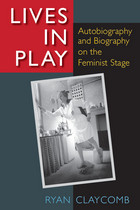 Lives in Play: Autobiography and Biography on the Feminist Stage
Ryan Claycomb
University of Michigan Press, 2014 Lives in Play explores the centrality of life narratives to women's drama and performance from the 1970s to the present moment. In the early days of second-wave feminism, the slogan was "The personal is the political." These autobiographical and biographical "true stories" have the political impact of the real and have also helped a range of feminists tease out the more complicated aspects of gender, sex, and sexuality in a Western culture that now imagines itself to be "postfeminist." The book covers a broad range of texts and performances, from performance artists like Karen Finley, Holly Hughes, and Bobby Baker to playwrights like Suzan-Lori Parks, Maria Irene Fornes, and Sarah Kane. The book examines biography and autobiography together to link their narrative tactics and theatrical approaches and show the persistent and important uses of life writing strategies for theater artists committed to advancing women's rights and remaking women's representations. Lives in Play argues that these writers and artists have not only responded to the vibrant conversations in feminist theory but also have anticipated and advanced these ideas, theorizing gender onstage for specific ends. Ryan Claycomb demonstrates how these performances work through tensions between performative identity and the essentialized body, between the truth value of life stories and the constructed nature of gender and narrative alike, and between writing and performing as modes of feminist representation. The book will appeal to scholars in performance studies, women's studies, and literature, including those in the growing field of auto/biography studies.
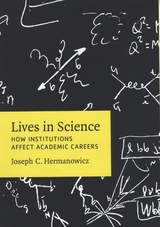 Lives in Science: How Institutions Affect Academic Careers
Joseph C. Hermanowicz
University of Chicago Press, 2009 What can we learn when we follow people over the years and across the course of their professional lives? Joseph C. Hermanowicz asks this question specifically about scientists and answers it here by tracking fifty-five physicists through different stages of their careers at a variety of universities across the country. He explores these scientists’ shifting perceptions of their jobs to uncover the meanings they invest in their work, when and where they find satisfaction, how they succeed and fail, and how the rhythms of their work change as they age. His candid interviews with his subjects, meanwhile, shed light on the ways career goals are and are not met, on the frustrations of the academic profession, and on how one deals with the boredom and stagnation that can set in once one is established. An in-depth study of American higher education professionals eloquently told through their own words, Hermanowicz’s keen analysis of how institutions shape careers will appeal to anyone interested in life in academia.
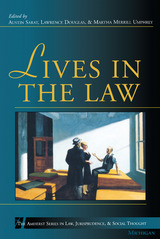 Lives in the Law
Austin Sarat, Lawrence Douglas, and Martha Merrill Umphrey, Editors
University of Michigan Press, 2002 The essays look at the consequences that legal practice has on the lives of its practitioners as well as on the individual legal subject and on the shape of shared identities. These essays challenge liberal and communitarian notions of what it means to live the law.
In the first of the essays, Pnina Lahav presents a study of the Chicago Seven Trial to paint a picture of the law's power to serve as a site for the definition of a collective group identity. In contrast, Sarah Gordon focuses on the experience of an individual legal subject, namely, the defendant in the Hester Vaughn trial, a notorious nineteenth-century case of infanticide. Frank Munger looks at how law constructs the identity of women and explores the strategies by which poor women resist the law's construction of their dependency. In the fourth essay, Vicki Schultz offers a moral vision of equality that straddles the liberal and communitarian positions with her articulation of the concept of a "life's work." Lastly, Annette Wieviorka examines the recent trial of Maurice Papon for complicity in crimes against humanity to reveal how the very identity of a nation--in this case, France--can be defined through juridical and legal acts.
Austin Sarat is William Nelson Cromell Professor of Jurisprudence and Political Science and Professor of Law, Jurisprudence and Social Thought, Amherst College. Lawrence Douglas is Associate Professor of Law, Jurisprudence and Social Thought, Amherst College. Martha Umphrey is Assistant Professor of Law, Jurisprudence and Social Thought, Amherst College.
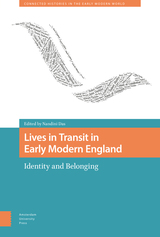 Lives in Transit in Early Modern England: Identity and Belonging
Nandini Das
Amsterdam University Press, 2022 What did it mean to be a 'go-between' in the early modern world? How were such figures perceived in sixteenth and seventeenth century England? And what effect did their movement between languages, countries, religions and social spaces – whether enforced or voluntary – have on the ways in which people navigated questions of identity and belonging? Lives in Transit in Early Modern England is a work of interdisciplinary scholarship which examines how questions of mobility and transculturality were negotiated in practice in the early modern world. Edited by Nandini Das, the twenty-four essays by João Vicente Melo, Tom Roberts, Haig Smith, Emily Stevenson, and Lauren Working cover a wide range of figures from different walks of life and corners of the globe, ranging from ambassadors to Amazons, monarchs to missionaries, translators to theologians. Together, the essays in this volume provide an invaluable resource for readers interested in questions of race, belonging, and human identity.
Lives in Two Languages: An Exploration of Identity and Culture
Linda Watkins-Goffman
University of Michigan Press, 2001 Lives in Two Languages explores identity and multiculturalism through readings that aim to help teachers-in-training gain better insight into their students' lives.
Lives in Two Languages focuses on the experience of multicultural authors--like Richard Rodriguez, Amy Tan, Eva Hoffman, Chang-rae Lee, and Julia Alvarez--whose experiences can be related to anyone who has moved from one culture or subculture to another. As such, this text is an excellent comprehensive introduction to the multicultural experience for teachers and educators in all disciplines, as well as of interest to anyone interested in language culture and psychological process of identity.
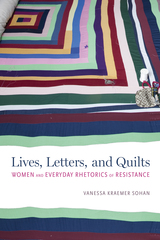 Lives, Letters, and Quilts: Women and Everyday Rhetorics of Resistance
Vanessa Kraemer Sohan
University of Alabama Press, 2020 How writers, activists, and artists without power resist dominant social, cultural, and political structures through the deployment of unconventional means and materials
In Lives, Letters, and Quilts: Women and Everyday Rhetorics of Resistance, Vanessa Kraemer Sohan applies a translingual and transmodal framework informed by feminist rhetorical practice to three distinct case studies that demonstrate women using unique and effective rhetorical strategies in political, religious, and artistic contexts. These case studies highlight a diverse set of actors uniquely situated by their race, gender, class, or religion, but who are nevertheless connected by their capacity to envision and recontextualize the seemingly ordinary means and materials available to them in order to effectively persuade others.
The Great Depression provides the backdrop for the first case study, a movement whereby thousands of elderly citizens proselytized and fundraised for a monthly pension plan dreamt up by a California doctor in the hopes of lifting themselves out of poverty. Sohan investigates how the Townsend Plan’s elderly supporters—the Townsendites—worked within and across language, genre, mode, and media to enable them for the first time to be recognized by others, and themselves, as a viable political constituency.
Next, Sohan recounts the story of Quaker minister Eliza P. Kirkbride Gurney who met President Abraham Lincoln in 1862. Their subsequent epistolary exchanges concerning conscientious objectors made such an impression on him that one of her letters was rumored to be in his pocket the night of his assassination. Their exchanges and Gurney’s own accounts of her transnational ministry in her memoir provide useful examples of how, throughout history, women rhetors have adopted and transformed typically underappreciated forms of rhetoric—such as the epideictic—for their particular purposes.
The final example focuses on the Gee’s Bend quiltmakers—a group of African American women living in rural Alabama who repurpose discarded work clothes and other cast-off fabrics into the extraordinary quilts for which they are known. By drawing on the means and materials at hand to create celebrated works of art in conditions of extreme poverty, these women show how marginalized artisans can operate both within and outside the bounds of established aesthetic traditions and communicate the particulars of their experience across cultural and economic divides.
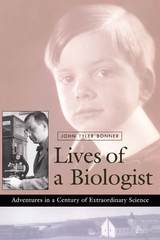 Lives of a Biologist: Adventures in a Century of Extraordinary Science
John Tyler Bonner
Harvard University Press, 2002 Beginning with the discovery of genes on chromosomes and culminating with the unmasking of the most minute genetic mysteries, the twentieth century saw astounding and unprecedented progress in the science of biology. In an illustrious career that spanned most of the century, biologist John Bonner witnessed many of these advances firsthand. Part autobiography, part history of the extraordinary transformation of biology in his time, Bonner’s book is truly a life in science, the story of what it is to be a biologist observing the unfolding of the intricacies of life itself.
Bonner’s scientific interests are nearly as varied as the concerns of biology, ranging from animal culture to evolution, from life cycles to the development of slime molds. And the extraordinary cast of characters he introduces is equally diverse, among them Julian Huxley, J. B. S. Haldane, Leon Trotsky, and Evelyn Waugh. Writing with a charm and freshness that bring the most subtle nuances of science to life, he pursues these interests through the hundred years that gave us the discovery of embryonic induction; the interpretation of evolution in terms of changes in gene frequency in a population; growth in understanding of the biochemistry of the cell; the beginning of molecular genetics; remarkable insights into animal behavior; the emergence of sociobiology; and the simplification of ecological and evolutionary principles by means of mathematical models. In this panoramic view, we see both the sweep of world events and scientific progress and the animating details, the personal observations and experiences, of a career conducted in their midst.
In Bonner’s view, biology is essentially the study of life cycles. His book, marking the cycles of a life in biology, is a fitting reflection of this study, with its infinite, and infinitesimal, permutations.
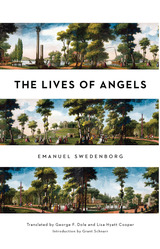 The Lives of Angels
Emanuel Swedenborg
Swedenborg Foundation Publishers, 2013 Until his mid-fifties, Emanuel Swedenborg (1688–1772) was merely a genius. As a young man, he traveled extensively throughout Europe to study the cutting-edge science of his time. Upon returning to his native Sweden, he went to work for the board of mines, where he introduced technical advances and gained an international reputation for his understanding of mechanics and metallurgy. In his spare time, he published studies in mathematics, astronomy, economic theory, and anatomy.
As his professional career was winding to a close, a remarkable spiritual awakening changed the course of his life. He believed that God allowed him to journey in spirit form to the afterlife and talk to angels, devils, and the spirits of the departed—not just once, but continuously, for decades—and he spent the rest of his life recording what he saw.
The Lives of Angels is a collection of Swedenborg’s most striking insights about life in heaven, with vivid descriptions of angels’ homes, their language, their communities, and even their romantic relationships. He tells us that angels are with us throughout our lives, guiding and supporting us, and that any person on earth can become an angel after death if he or she is loving and selfless. The introduction by Grant Schnarr gives readers a modern framework for understanding Swedenborg’s compelling vision of the spiritual world.
 The Lives of Cato the Younger from Ancient Rome to Modern America
Thomas E. Strunk
University of Michigan Press, 2026 The Lives of Cato the Younger from Ancient Rome to Modern America traces the reception and influence of Cato from his suicide at the fall of the Roman Republic to the twenty-first century. In preferring death to Julius Caesar’s dictatorship, Cato became a symbol of resistance to tyrannical rulers during the Roman Empire. In the years that followed, three interpretations of Cato became predominant: Cato lived and died with the resolve of a philosopher; he was a traitor to Caesar’s legitimate rule; or he was a republican statesman defending liberty. Beginning with these interpretations, Thomas E. Strunk explores Cato’s reception in antiquity with chapters on Tacitus and Plutarch; and he later discusses medieval Christian writers such as Augustine, who considered Cato’s suicide sinful, and Dante, who made him the noble guardian of Purgatory. In Europe, playwrights composed dramas on Cato’s death that ignited the revolutionary spirit of the age, later inspiring American general George Washington and his soldiers. Abolitionists such as Frederick Douglass invoked Cato and his revolutionary spirit, yet after the Civil War, Cato’s name was appropriated as a symbol of allegiance for Confederates and their descendants, and lines memorializing Cato were inscribed on the Confederate Memorial at Arlington Cemetery. As the first book to provide an in-depth study of Cato and his lasting influence, Strunk’s study seeks to explore the contemporary nature of his principles and their influence on present-day American politics.
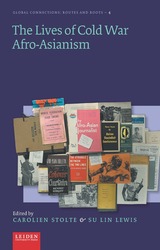 The Lives of Cold War Afro-Asianism
Carolien Stolte
Amsterdam University Press, 2022 The Afro-Asianism of the early Cold War has long remained buried under the narrative of Bandung, homogenising and subverting the different visions of post-colonial worldmaking that co-existed alongside the Bandung project. This book turns the lens on these other visions, and the transnational interactions which emerged from various other gatherings of the 1950s and 1960s that existed beyond the realm of high diplomacy, while blurring the lines between state and non-state projects. It examines how Afro-Asianism was lived by activists, intellectuals, cultural figures, as well as political leaders in building a post-imperial world – particularly women. As a whole, this collection of essays examines the diversity of Afro-Asian ideals that emerged through such movements, untangling the personal relationships, political competition, racial hierarchies, and solidarities that shaped them. By visualising political Afro-Asianism and its proponents as a living network, a fuller picture of decolonization and the Cold War is brought into view.
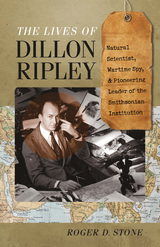 The Lives of Dillon Ripley: Natural Scientist, Wartime Spy, and Pioneering Leader of the Smithsonian Institution
Roger D. Stone
University Press of New England, 2017 A Yale-educated Renaissance man, S. Dillon Ripley was a “courtly, determined, hugely ambitious, energetic, funny, and colorful ornithologist, conservationist, and cultural standard-bearer” who led the Smithsonian Institution for twenty years, during its greatest period of growth. During his watch, from 1964 to 1984, the SI added eight new museums and seven new research centers and began publication of the Smithsonian magazine. It was Ripley’s vision that transformed “the nation’s attic” from a dusty archive to a vibrant educational and cultural institution, just as he had transformed Yale’s Peabody museum before it. Prior to his career at the SI, and running parallel with it for the rest of his life, was Ripley’s work as an ornithologist, begun in New Guinea in the 1930s, continued through his PhD from Harvard in 1943, and culminating in his landmark thirty-year project documenting the bird life of India. His lifelong passion for ornithology led him to positions of leadership in worldwide nature conservation. In the midst of these endeavors he was recruited in 1944 to the Office of Strategic Services, a Yalie club at the outset that became the forerunner of the modern CIA. Posted to Ceylon, he recruited and ran agents who reported from and infiltrated Japanese-held Southeast Asia. Roger D. Stone worked with Ripley on the board of the World Wildlife Fund. He has access to the Ripley family’s archives and photos, as well as to the voluminous archives at the Smithsonian and the National Archives, and to over forty hours of transcribed interviews, conducted with Ripley at the Smithsonian.
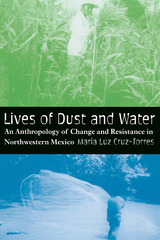 Lives of Dust and Water: An Anthropology of Change and Resistance in Northwestern Mexico
María Luz Cruz-Torres
University of Arizona Press, 2004 Along the coast of northwestern Mexico, "pink gold" may mean wealth for some, but the new global economy has imposed terrible burdens on many sectors of the population. State and regional economic development policies have supported the use of natural resources for commercial export, resulting in the rapid growth of agriculture and shrimp aquaculture. Environmental pressures have contributed to the degradation of marine ecosystems, and once self-reliant rural populations have been driven to wage and subsistence labor in order to survive. This book eloquently explains how contemporary rural communities in southern Sinaloa have responded to economic and ecological changes affecting the entire nation.
A political ecology of human survival in one of the most important ecological regions of Mexico, it describes how these communities contest environmental degradation and economic impoverishment arising from political and economic forces beyond their control. María Luz Cruz-Torres evokes the rich and varied experiences of the people who live in the villages of Celaya and El Cerro, showing how they invent and utilize their own social capital to emerge as whole persons in the face of globalization. She traces the histories of the two villages to illustrate the complex variation involved in community formation and to show how people respond to and utilize Mexican law and reform. Surrounded by limited resources, poverty, illness, sudden death, and daily oppression, these men and women create innovative social and cultural forms that mitigate these impacts.
Cruz-Torres reveals not only how they manage to survive in the midst of horrendous circumstances but also how they transcend those impediments with dignity. She details the participation of household members in the subsistence, formal, and informal sectors of the economy, and how women use a variety of resources to guarantee their families’ survival. A sometimes tragic but ultimately vibrant story of human resistance, Lives of Dust and Water offers an important look at a little-studied but dynamically developing region of Mexico. It contributes to a more precise understanding of how rural coastal communities in Mexico emerged and continue to develop and adjust to the uncertainties of the globalizing world.
Lives of Eminent Korean Monks: The Haedong Kosung Chon
Peter H. Lee
Harvard University Press Lives of Eminent Korean Monks is an important source for literary and religious history and the general political and cultural development of Korea. Lost for almost seven centuries after it was completed in 1215 by the abbot Kakhun and rediscovered only in 1910, it is one of the earliest extant texts of Korean authorship. This volume is the first study of the Lives in any language, including Korean. The translation is based on a collation of four versions of the text and is extensively annotated.
Lives of Eminent Philosophers, Volume I: Books 1–5
Diogenes Laertius
Harvard University Press Examined lives.
Diogenes Laertius, author of a work on Greek philosophy, lived probably in the earlier half of the third century, his ancestry and birthplace being unknown. He was an Epicurean philosopher, but his work is not philosophical. The title is History of Philosophy or On the Lives, Opinions, and Sayings of Famous Philosophers; the work, in ten books, is divided unscientifically into two “Successions” or sections: “Ionian” from Anaximander to Theophrastus and Chrysippus, including the Socratic schools; “Italian” from Pythagoras to Epicurus (who fills all the last book), including the Eleatics and Sceptics. It is a collection of quotations and facts, and is of very great value.
The Loeb Classical Library edition of Diogenes Laertius is in two volumes.
Lives of Eminent Philosophers, Volume II: Books 6–10
Diogenes Laertius
Harvard University Press Examined lives.
Diogenes Laertius, author of a work on Greek philosophy, lived probably in the earlier half of the third century, his ancestry and birthplace being unknown. He was an Epicurean philosopher, but his work is not philosophical. The title is History of Philosophy or On the Lives, Opinions, and Sayings of Famous Philosophers; the work, in ten books, is divided unscientifically into two “Successions” or sections: “Ionian” from Anaximander to Theophrastus and Chrysippus, including the Socratic schools; “Italian” from Pythagoras to Epicurus (who fills all the last book), including the Eleatics and Sceptics. It is a collection of quotations and facts, and is of very great value.
The Loeb Classical Library edition of Diogenes Laertius is in two volumes.
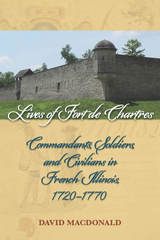 Lives of Fort de Chartres: Commandants, Soldiers, and Civilians in French Illinois, 1720–1770
David MacDonald
Southern Illinois University Press, 2016 Winner, ISHS Annual Award for a Scholarly Publication, 2017
Fort de Chartres, built in 1719-1720 in the heart of what would become the American Midwest, embodied French colonial power for half a century. Lives of Fort de Chartres, by David MacDonald, details the French colonial experience in Illinois from 1720 to 1770 through vivid depictions of the places, people, and events around the fort and its neighboring villages.
In the first section, MacDonald explores the fascinating history of French Illinois and the role of Fort de Chartres in this history, focusing on native peoples, settlers, slaves, soldiers, villages, trade routes, military administration, and the decline of French rule in Illinois. The second section profiles the fort’s twelve distinctive and often colorful commandants, who also served as administrative heads of French Illinois. These men’s strong personalities served them well when dealing simultaneously with troops, civilians, and Indians and their multifaceted cultures. In the third section, MacDonald presents ten thought-provoking biographies of people whose lives intersected with Fort de Chartres in various ways, from a Kaskaskia Indian woman known as “the Mother of French Illinois” to an ill-fated chicken thief and a European aristocrat. Subjects treated in the book include French–Native American relations, the fur trade, early Illinois agriculture, and tensions among different religious orders. Together, the biographies and historical narrative in the volume illuminate the challenges that shaped the French colonies in America.
The site of Fort de Chartres, recognized as a National Historic Landmark in 1966, still exists today as a testament to the ways in which French, British, Spanish, and American histories have intertwined. Both informative and entertaining, Lives of Fort de Chartres contributes to a more complete understanding of the French colonial experience in the Midwest and portrays a vital and vigorous community well worth our appreciation.
 The Lives of Frederick Douglass
Robert S. Levine
Harvard University Press, 2016 Frederick Douglass’s fluid, changeable sense of his own life story is reflected in the many conflicting accounts he gave of key events and relationships during his journey from slavery to freedom. Nevertheless, when these differing self-presentations are put side by side and consideration is given individually to their rhetorical strategies and historical moment, what emerges is a fascinating collage of Robert S. Levine’s elusive subject. The Lives of Frederick Douglass is revisionist biography at its best, offering new perspectives on Douglass the social reformer, orator, and writer.
Out of print for a hundred years when it was reissued in 1960, The Narrative of the Life of Frederick Douglass (1845) has since become part of the canon of American literature and the primary lens through which scholars see Douglass’s life and work. Levine argues that the disproportionate attention paid to the Narrative has distorted Douglass’s larger autobiographical project. The Lives of Frederick Douglass focuses on a wide range of writings from the 1840s to the 1890s, particularly the neglected Life and Times of Frederick Douglass (1881, 1892), revised and expanded only three years before Douglass’s death. Levine provides fresh insights into Douglass’s relationships with John Brown, Abraham Lincoln, William Lloyd Garrison, and his former slave master Thomas Auld, and highlights Douglass’s evolving positions on race, violence, and nation. Levine’s portrait reveals that Douglass could be every bit as pragmatic as Lincoln—of whom he was sometimes fiercely critical—when it came to promoting his own work and goals.
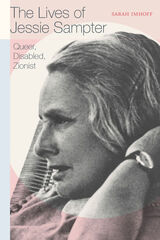 The Lives of Jessie Sampter: Queer, Disabled, Zionist
Sarah Imhoff
Duke University Press, 2022 In The Lives of Jessie Sampter, Sarah Imhoff tells the story of an individual full of contradictions. Jessie Sampter (1883–1938) was best known for her Course in Zionism (1915), an American primer for understanding support of a Jewish state in Palestine. In 1919, Sampter packed a trousseau, declared herself “married to Palestine,” and immigrated there. Yet Sampter’s own life and body hardly matched typical Zionist ideals. Although she identified with Judaism, Sampter took up and experimented with spiritual practices from various religions. While Zionism celebrated the strong and healthy body, she spoke of herself as “crippled” from polio and plagued by sickness her whole life. While Zionism applauded reproductive women’s bodies, Sampter never married or bore children; in fact, she wrote of homoerotic longings and had same-sex relationships. By charting how Sampter’s life did not neatly line up with her own religious and political ideals, Imhoff highlights the complicated and at times conflicting connections between the body, queerness, disability, religion, and nationalism.
 The Lives of Latin Texts: Papers Presented to Richard J. Tarrant
Lauren Curtis
Harvard University Press, 2021 The papers in this volume are based on a 2018 conference in the Department of the Classics at Harvard University in honor of Richard Tarrant, Pope Professor of the Latin Language and Literature, on the occasion of his retirement.
The breadth of authors, genres, periods, and topics addressed in The Lives of Latin Texts is testament to Richard Tarrant’s wide-ranging influence on the fields of Latin literary studies and textual criticism. Contributions on stylistic, dramatic, metapoetic, and philosophical issues in Latin literature (including authors from Virgil, Horace, and Seneca to Ovid, Terence, Statius, Caesar, and Martial) sit alongside contributions on the history of textual transmission and textual editing. Other chapters treat the musical reception of Latin literature. Taken together, the volume reflects on the impact of Richard Tarrant’s scholarship by addressing the expressive scope and the long history of the Latin language.
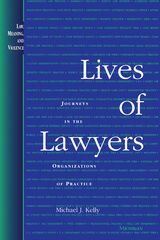 Lives of Lawyers: Journeys in the Organizations of Practice
Michael Kelly
University of Michigan Press, 1994 America has long enjoyed a love/hate relationship with its attorneys; jokes equating lawyers with vermin abound at the same time that our love of litigation is reflected in a doubling of the ranks of lawyers since the 1960s. Though we often see the lawyer as a crusading lone wolf of justice, the illuminating Lives of Lawyers demonstrates that the integrity of individual lawyers is fundamentally influenced by the nature of the legal organizations that have come to dominate the field. In fleshing out these agencies of legal expertise, Kelly offers important insights into the personal ideals of lawyers, the struggle to clarify professionalism as interpreted by the legal origination, and the effects of these factors on society's perceptions of law and lawyering.
Lives of Lawyers paints an intimate portrait of five legal entities: two corporate firms, an in-house corporate counsel's office, and a public interest agency. Each is viewed through a kaleidoscope of client/colleague relationships, connections to civic and community life, income levels and career satisfaction of attorneys, the social status of the organization, and the character of the particular law practiced. These detailed portrayals vividly reveal the diversity inherent to the profession and the wealth of responses to the question of what shapes the values of today's legal practices. The author's deft use of narrative and debt to the discipline of biography and sociology make his five stores a first-rate read.
Kelly gets into the trenches with lawyers comprising these organizations; they don't mince words in passing judgment on themselves, their employers, or the state of the profession--particularly its growing commercialism. Nonetheless, Lives of Lawyers reminds us of the constantly renewed dedication by lawyers to the principles of legal professionalism.
Michael J. Kelly is University Vice President and Professor of Law, Georgetown University.
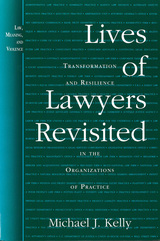 Lives of Lawyers Revisited: Transformation and Resilience in the Organizations of Practice
Michael J. Kelly
University of Michigan Press, 2009 The past two decades have seen profound changes in the legal profession. Lives of Lawyers Revisited extends Michael Kelly’s work in the original Lives of Lawyers, offering unique insights into the nature of these changes, examined through stories of five extraordinarily varied law practices. By placing the spotlight on organizations as phenomena that generate their own logic and tensions, Lives of Lawyers Revisited speaks to the experience of many lawyers and anticipates important issues on the professional horizon. "Michael Kelly has done it again! His Lives of Lawyers Revisited is a very easy read about some very difficult notions like 'litigation blindness' and law as a business. It presents some fascinating perspectives on our profession."
—J. Michael McWilliams, Past President, American Bar Association "The best single book about the American realities and possibilities of the American legal profession, combining an empathic and insightful account of law practice with a penetrating analysis of the wider context of professional work."
—Marc Galanter, University of Wisconsin "Michael Kelly believes that professional values and conduct are not realized in codes, but in the experiences of practice, and that practice draws its routines and ideals from organizations. Through his studies of lawyers in various firms, closely observed and sympathetically described, Kelly reveals how differently organizations adapt to the intense pressures of today's practice environment. His method of linking individual life-experiences to organizational strategies and the external constraints of competition and client demands infuses realism and richness into the concept of professionalism and makes this one of the most interesting and original books on professions and professionalism to appear in years."
—Robert W. Gordon, Yale Law School "In his two volumes of Lives of Lawyers, Michael Kelly explores legal ethics in an unusual, and unusually rewarding, way. Rather than focusing on rules or arguments, Kelly looks at the kind of lives lawyers lead. Ethics, Socrates thought, is about how to live one's life, and Kelly takes the Socratic question to heart. He explores the institutions lawyers work in and the choices they make. He writes with intelligence, great insight, and above all with heart. This is a superb book." —David Luban, Georgetown University Michael J. Kelly is President and Chairman of the Board of the National Senior Citizens Law Center, an advocacy group for older Americans of limited means.
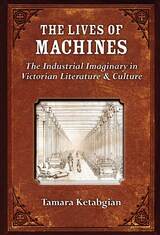 The Lives of Machines: The Industrial Imaginary in Victorian Literature and Culture
Tamara Ketabgian
University of Michigan Press, 2011 "The Lives of Machines is intelligent, closely argued, and persuasive, and puts forth a contention that will unsettle the current consensus about Victorian attitudes toward the machine."
---Jay Clayton, Vanderbilt University Today we commonly describe ourselves as machines that "let off steam" or feel "under pressure." The Lives of Machines investigates how Victorian technoculture came to shape this language of human emotion so pervasively and irrevocably and argues that nothing is more intensely human and affecting than the nonhuman. Tamara Ketabgian explores the emergence of a modern and more mechanical view of human nature in Victorian literature and culture. Treating British literature from the 1830s to the 1870s, this study examines forms of feeling and community that combine the vital and the mechanical, the human and the nonhuman, in surprisingly hybrid and productive alliances. Challenging accounts of industrial alienation that still persist, the author defines mechanical character and feeling not as erasures or negations of self, but as robust and nuanced entities in their own right. The Lives of Machines thus offers an alternate cultural history that traces sympathies between humans, animals, and machines in novels and nonfiction about factory work as well as in other unexpected literary sites and genres, whether domestic, scientific, musical, or philosophical. Ketabgian historicizes a model of affect and community that continues to inform recent theories of technology, psychology, and the posthuman. The Lives of Machines will be of interest to students of British literature and history, history of science and of technology, novel studies, psychoanalysis, and postmodern cultural studies. Cover image: "Power Loom Factory of Thomas Robinson," from Andrew Ure, The Philosophy of Manufactures (London: Charles Knight, 1835), frontispiece. DIGITALCULTUREBOOKS: a collaborative imprint of the University of Michigan Press and the University of Michigan Library
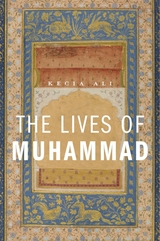 The Lives of Muhammad
Kecia Ali
Harvard University Press, 2014 Recent outbursts sparked by a viral video and controversial cartoons powerfully illustrate the passions and sensitivities that continue to surround the depiction of the seventh-century founder of Islam. The Lives of Muhammad delves into the many ways the Prophet’s life story has been told from the earliest days of Islam to the present, by both Muslims and non-Muslims. Emphasizing the major transformations since the nineteenth century, Kecia Ali shows that far from being mutually opposed, these various perspectives have become increasingly interdependent.
Since the nineteenth century, two separate streams of writing, one hagiographic and the other polemical, have merged into a single, contentious story about the life of Muhammad. Protestant missionaries, European Orientalists, Indian and Egyptian modernists, and American voices across the spectrum, including preachers, scholars, Islamophobes, journalists, academics, and new-age gurus, debated Muhammad’s character and the facts of his life. In the process, texts written symbolically came to be read literally. Muhammad’s accomplishments as a religious and political leader, his military encounters with Meccans and Medinan Jews, and—a subject of perennial interest—his relationships with women, including his young wife Aisha, are among the key subjects writers engaged, repurposing early materials for new circumstances.
Many of the ideas about Muhammad that Muslims embrace today—Muhammad the social reformer, Muhammad the consummate leader, Muhammad the ideal husband—arose in tandem and in tension with Western depictions. These were in turn shaped by new ideas about religion, sexuality, and human accomplishments.
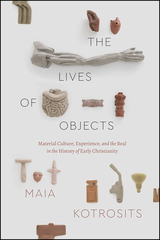 The Lives of Objects: Material Culture, Experience, and the Real in the History of Early Christianity
Maia Kotrosits
University of Chicago Press, 2020 Our lives are filled with objects—ones that we carry with us, that define our homes, that serve practical purposes, and that hold sentimental value. When they are broken, lost, left behind, or removed from their context, they can feel alien, take on a different use, or become trash. The lives of objects change when our relationships to them change.
Maia Kotrosits offers a fresh perspective on objects, looking beyond physical material to consider how collective imagination shapes the formation of objects and the experience of reality. Bringing a psychoanalytic approach to the analysis of material culture, she examines objects of attachment—relationships, ideas, and beliefs that live on in the psyche—and illustrates how people across time have anchored value systems to the materiality of life. Engaging with classical studies, history, anthropology, and literary, gender, and queer studies, Kotrosits shows how these disciplines address historical knowledge and how an expanded definition of materiality can help us make connections between antiquity and the contemporary world.
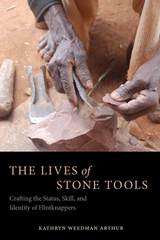 The Lives of Stone Tools: Crafting the Status, Skill, and Identity of Flintknappers
Kathryn Weedman Arthur
University of Arizona Press, 2018 The Lives of Stone Tools gives voice to the Indigenous Gamo lithic practitioners of southern Ethiopia. For the Gamo, their stone tools are alive, and their work in flintknapping is interwoven with status, skill, and the life histories of their stone tools.
Anthropologist Kathryn Weedman Arthur offers insights from her more than twenty years working with the Gamo. She deftly addresses historical and present-day experiences and practices, privileging the Gamo’s perspectives. Providing a rich, detailed look into the world of lithic technology, Arthur urges us to follow her into a world that recognizes Indigenous theories of material culture as valid alternatives to academic theories. In so doing, she subverts long-held Western perspectives concerning gender, skill, and lifeless status of inorganic matter.
The book offers the perspectives that, contrary to long-held Western views, stone tools are living beings with a life course, and lithic technology is a reproductive process that should ideally include both male and female participation. Only individuals of particular lineages knowledgeable in the lives of stones may work with stone technology. Knappers acquire skill and status through incremental guided instruction corresponding to their own phases of maturation. The tools’ lives parallel those of their knappers from birth (procurement), circumcision (knapping), maturation (use), seclusion (storage), and death (discardment).
Given current expectations that the Gamo’s lithic technology may disappear with the next generation, The Lives of Stone Tools is a work of vital importance and possibly one of the last contemporaneous books about a population that engages with the craft daily.
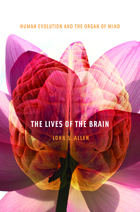 The Lives of the Brain: Human Evolution and the Organ of Mind
John S. Allen
Harvard University Press, 2009 Though we have other distinguishing characteristics (walking on two legs, for instance, and relative hairlessness), the brain and the behavior it produces are what truly set us apart from the other apes and primates. And how this three-pound organ composed of water, fat, and protein turned a mammal species into the dominant animal on earth today is the story John S. Allen seeks to tell.
Adopting what he calls a “bottom-up” approach to the evolution of human behavior, Allen considers the brain as a biological organ; a collection of genes, cells, and tissues that grows, eats, and ages, and is subject to the direct effects of natural selection and the phylogenetic constraints of its ancestry. An exploration of the evolution of this critical organ based on recent work in paleoanthropology, brain anatomy and neuroimaging, molecular genetics, life history theory, and related fields, his book shows us the brain as a product of the contexts in which it evolved: phylogenetic, somatic, genetic, ecological, demographic, and ultimately, cultural-linguistic. Throughout, Allen focuses on the foundations of brain evolution rather than the evolution of behavior or cognition. This perspective demonstrates how, just as some aspects of our behavior emerge in unexpected ways from the development of certain cognitive capacities, a more nuanced understanding of behavioral evolution might develop from a clearer picture of brain evolution.
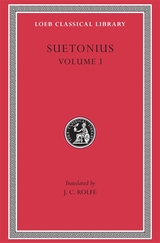 Lives of the Caesars, Volume I: The Deified Julius. The Deified Augustus. Tiberius. Gaius Caligula
Suetonius
Harvard University Press, 1997 Antiquity’s imperial biographer par excellence.
Suetonius (C. Suetonius Tranquillus, born ca. AD 70), son of a military tribune, was at first an advocate and a teacher of rhetoric, but later became the emperor Hadrian’s private secretary, 119–121. He dedicated to C. Septicius Clarus, prefect of the praetorian guard, his Lives of the Caesars. After the dismissal of both men for some breach of court etiquette, Suetonius apparently retired and probably continued his writing. His other works, many known by title, are now lost except for part of the Lives of Illustrious Men (of letters).
Friend of Pliny the Younger, Suetonius was a studious and careful collector of facts, so that the extant lives of the emperors (including Julius Caesar the dictator) to Domitian are invaluable. His plan in Lives of the Caesars is the emperor’s family and early years; public and private life; death. We find many anecdotes, much gossip of the imperial court, and various details of character and personal appearance. Suetonius’ account of Nero’s death is justly famous.
The Loeb Classical Library edition of Suetonius is in two volumes.
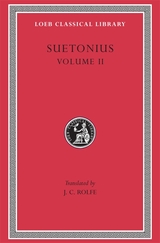 Lives of the Caesars, Volume II: The Deified Claudius. Nero. Galba, Otho, Vitellius. Vespasian, Titus, Domitian. Lives of Illustrious Men
Suetonius
Harvard University Press, 1997 Antiquity’s imperial biographer par excellence.
Suetonius (C. Suetonius Tranquillus, born ca. AD 70), son of a military tribune, was at first an advocate and a teacher of rhetoric, but later became the emperor Hadrian’s private secretary, 119–121. He dedicated to C. Septicius Clarus, prefect of the praetorian guard, his Lives of the Caesars. After the dismissal of both men for some breach of court etiquette, Suetonius apparently retired and probably continued his writing. His other works, many known by title, are now lost except for part of the Lives of Illustrious Men (of letters).
Friend of Pliny the Younger, Suetonius was a studious and careful collector of facts, so that the extant lives of the emperors (including Julius Caesar the dictator) to Domitian are invaluable. His plan in Lives of the Caesars is the emperor’s family and early years; public and private life; death. We find many anecdotes, much gossip of the imperial court, and various details of character and personal appearance. Suetonius’ account of Nero’s death is justly famous.
The Loeb Classical Library edition of Suetonius is in two volumes.
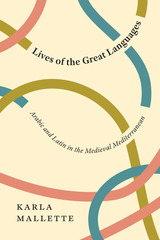 Lives of the Great Languages: Arabic and Latin in the Medieval Mediterranean
Karla Mallette
University of Chicago Press, 2021 The story of how Latin and Arabic spread across the Mediterranean to create a cosmopolitan world of letters.
In this ambitious book, Karla Mallette studies the nature and behaviors of the medieval cosmopolitan languages of learning—classical Arabic and medieval Latin—as they crossed the Mediterranean. Through anecdotes of relationships among writers, compilers, translators, commentators, and copyists, Mallette tells a complex story about the transmission of knowledge in the period before the emergence of a national language system in the late Middle Ages and early modernity.
Mallette shows how the elite languages of learning and culture were only tenuously related to the languages of everyday life. These languages took years of study to master, marking the passage from intellectual childhood to maturity. In a coda to the book, Mallette speculates on the afterlife of cosmopolitan languages in the twenty-first century, the perils of monolingualism, and the ethics of language choice. The book offers insight for anyone interested in rethinking linguistic and literary tradition, the transmission of ideas, and cultural expression in an increasingly multilingual world.
 Lives of the Imaginary Artists in Cold War California
Monica Steinberg
University of Chicago Press, 2025 How artists created fictionalized identities to realize works that resisted political overreach and art historical conventions.
This book explores how a group of real California artists created imaginary artists, engaging with the political climate of the Cold War era and frustrating the discipline of art history. They employed pseudonymity, obfuscation, anonymity, (auto)biografiction, imaginary portraiture, heteronymity, role-playing, doubling, and alter ego. Often laced with humor, these exploits facilitated stylistic experimentation, provoking reactions from art viewers and governing authorities alike, and disrupting reliance on documentation and attribution within art history.
In the 1950s and early 1960s, Ed Kienholz, Walter Hopps, Robert Alexander, Wally Hedrick, George Herms, and Wallace Berman activated imagined and secret identities, provoking reactions within a conservative environment gripped by communist paranoia. As political concerns shifted in the 1960s and 1970s to movements for peace and equality, artists including Billy Al Bengston, Ed Ruscha, Joe Goode, Lynda Benglis, Larry Bell, Judy Chicago, Lowell Darling, and Eleanor Antin redirected these tactics to probe the rise of celebrity culture and the administrative state. These practices also became the precursor for later interventions by Bruce Conner, Asco, Allen Ruppersberg, Senga Nengudi, and others.
Considering a compelling range of visual material, including paintings, sculptures, and performed intrusions as well as publications, postcards, and advertisements, Monica Steinberg examines why these imaginary artists appeared when and where they did—and to what ends.
Lives of the Milanese Tyrants
Pier Candido Decembrio
Harvard University Press, 2019 Lives of the Milanese Tyrants brings together two biographies by the most important Milanese humanist of the early fifteenth century. Pier Candido Decembrio (1399–1477) served as secretary and envoy to the bizarre and powerful Filippo Maria Visconti, Duke of Milan. As a member of the duke’s inner circle, Decembrio was in a privileged position to write what historians agree is a unique masterpiece of Renaissance biography, based on his decades of direct experience. Also included in this volume is a work of homage to Visconti’s successor, Decembrio’s flattering account of the deeds of the most successful mercenary captain of the Renaissance, Francesco Sforza, who secured for himself and his heirs the disputed position of Duke of Milan through guile, force, and willpower. Both works are translated into English here for the first time from new Latin texts prepared specially for this edition.
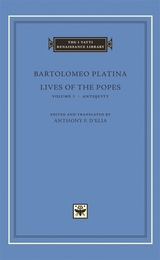 Lives of the Popes
Bartolomeo PlatinaEdited and translated by Anthony F. D'Elia
Harvard University Press, 2008 Bartolomeo Platina (1421–1481), historian, political theorist, and author of a best-selling cookbook, began life as a mercenary soldier and ended it as the head of the Vatican Library. A papal official under the humanist Pope Pius II, he was a member of the humanist academies of Cardinal Bessarion and Pomponio Leto, and was twice imprisoned for conspiring against Pope Paul II. Returning to favor under Pope Sixtus IV, he composed his most famous work, a biographical compendium of the Roman popes from St. Peter down to his own time. The work critically synthesized a wide range of sources and became the standard reference work on papal history for early modern Europe, reprinted dozens of times and translated into a number of languages. A characteristic work of Renaissance humanism, it used Christian antiquity as a standard against which to criticize modern churchmen. This edition contains the first complete translation into English and an improved Latin text. Volume 1, the first of a projected four, covers the period from the founding of the church through ad 461.
 Lives of the Psychics: The Shared Worlds of Science and Mysticism
Fred M. Frohock
University of Chicago Press, 2000 The daughter of a man about to leave on a trip wakes up crying during the night. She has just had a nightmare that his plane will crash. The father flies without incident to Spain, but the next day, the plane he has taken to Spain crashes and burns outside Malaga on its return trip to New York. Was the dream a premonition? Many people experience similar phenomena, ranging from extra-sensory perceptions all the way to near-death experiences on operating tables. Are these events evidence of the paranormal, or are they mere coincidences or hallucinations? How should we regard such claims of supernatural experiences?
Lives of the Psychics, a journey through the terrain of psychic phenomena, tries to answer these questions through interviews with practicing psychics, a survey of the heroic attempts of researchers to test psychic abilities in controlled experiments, and an exploration of out-of-body, near-death, and mystical experiences. Fred M. Frohock brings together a wide variety of psychic claims and examines them with a rich set of materials—interviews, critical anecdotes, history, multiple theories of the paranormal—that allows him to use whatever tools are necessary to illuminate beliefs in the supernatural. He relates real-life events to scientific studies, so the reader is a party not only to fantastic experiences and first-hand stories of the paranormal but also to the rationales for these experiences proposed by scientists. There is no more rewarding guide to the limits and powers of science in explaining psychic phenomena.
To a field filled with uncertainty and suspicion, Frohock brings a discerning eye, a critical sensibility, and a fundamental sense of curiosity about the role of mysticism in science. Even skeptics will be intrigued.
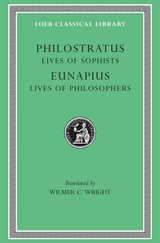 Lives of the Sophists. Eunapius: Lives of the Philosophers and Sophists
Philostratus and Eunapius
Harvard University Press Of the distinguished Lemnian family of Philostrati, Flavius Philostratus 'the Athenian', ca. 170205 CE, was a Greek sophist who studied at Athens and later lived in Rome. He was author of the admirable Life of Apollonius of Tyana (Loeb nos. 16 and 17) and of Lives of the Sophists, a treasury of information about notable sophists. Philostratus's sketches of sophists in action yield a fascinating picture of the predominant influence of Sophistic in the educational, social, and political life of the Empire in the second and third centuries.
The Greek sophist and historian Eunapius was born at Sardis in 347 CE, but went to Athens to study and lived much of his life there teaching rhetoric and possibly medicine. He was initiated into the mysteries and was hostile to Christians. His Lives of Philosophers and Sophists (mainly contemporary with himself) is our only source for knowledge of Neo-Platonism in the latter part of the fourth century.
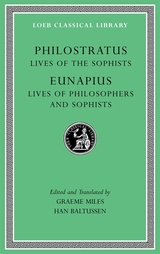 Lives of the Sophists. Lives of Philosophers and Sophists
Philostratus. Eunapius
Harvard University Press, 2023 Two sophists on the history of sophistry.
Flavius Philostratus, known as “the Elder” or “the Athenian,” was born to a distinguished family with close ties to Lesbos in the later second century, and died around the middle of the third. A sophist who studied at Athens and later lived in Rome, Philostratus provides in Lives of the Sophists a treasury of information about notable practitioners. His sketches of sophists in action paint a fascinating picture of their predominant influence in the educational, social, and political life of the Empire in his time. He is almost certainly the author also of the Life of Apollonius of Tyana (LCL 16, 17, 458) and Heroicus and Gymnasticus (LCL 521).
Eunapius (ca. 345–415) was born in Sardis but studied and spent much of his life in Athens as a sophist and historian. His Lives of Philosophers and Sophists covers figures of personal or intellectual significance to him in the period from Plotinus (ca. 250) to Chrystanthus (ca. 380), including one remarkable woman, Sosipatra, and then focuses on Iamblichus and his students. The work’s underlying rationale combines personal devotion to teachers and colleagues with a broader attempt to rehabilitate Hellenic cultural icons against the rise of Christianity and the influence of its representatives.
This edition of Philostratus and Eunapius thoroughly revises the original edition by Wilmer C. Wright (1921) in light of modern scholarship.
Lives of Their Own: Blacks, Italians, and Poles in Pittsburgh, 1900-1960
John Bodnar, Roger Simon, and Michael P. Weber
University of Illinois Press, 1982 Lives of Their Own depicts the strikingly different lives of black, Italian, and Polish immigrants in Pittsburgh. Within a comparative framework, the book focuses on the migration process itself, job procurement, and occupational mobility, family structure, home-ownership, and neighborhood institutions. By blending oral histories with quantitative data, the authors have created a convincing multilayered portrait of working-class life in one of our great industrial cities.
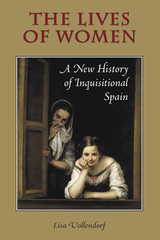 The Lives of Women: A New History of Inquisitional Spain
Lisa Vollendorf
Vanderbilt University Press, 2007 Recovering voices long relegated to silence, The Lives of Women deciphers the responses of women to the culture of control in seventeenth-century Spain. In this new history of Inquisitional Spain, Lisa Vollendorf incorporates convent texts, Inquisition cases, biographies, and women's literature to reveal a previously unrecognized boom in women's writing between 1580 and 1700.
During this period, more women wrote for the public book market and participated in literary culture than ever before. In addition, the rise in convents and female education contributed to a marked increase in texts produced by and about women in religious orders. Vollendorf argues that, in conjunction with Inquisition and legal documents, this wealth of writing offers unprecedented access to women's perspectives on life in early modern Spain, and that those perspectives encompass diverse ethnic backgrounds and class differences. Many of the documents touch on issues of sex and intimacy; others provide new ways of understanding religious practice in the period. Perhaps most important, these writings give a richly textured view of how women reacted to the dominant culture's attempts to define, limit, and contain femininity. Vollendorf shows that the texts reflect a shared preoccupation with redefining gender and creating legitimate spaces for women.
As The Lives of Women vividly illustrates, hundreds, if not thousands, of women's stories await rediscovery in archives. The book provides a roadmap for understanding the experiences and concerns of wives, widows, sisters, and daughters who lived in a key moment in the development of the Spanish nation and the Hispanic world. At its core, The Lives of Women argues for a reconceptualization of history, one that will rely on the experiences of women and minorities as much as on the words and actions of kings and conquistadors.
Lives on the Edge: Single Mothers and Their Children in the Other America
Valerie Polakow
University of Chicago Press, 1994 One out of five children, and one out of two single mothers, lives in destitution in America today. The feminization and "infantilization" of poverty have made the United States one of the most dangerous democracies for poor mothers and their children to inhabit. Why then, Valerie Polakow asks, is poverty seen as a private issue, and how can public policy fail to take responsibility for the consequences of our politics of distribution? Written by a committed child advocate, Lives on the Edge draws on social, historical, feminist, and public policy perspectives to develop an informed, wide-ranging critique of American educational and social policy. Stark, penetrating, and unflinching in its first-hand portraits of single mothers in America today, this work challenges basic myths about justice and democracy.
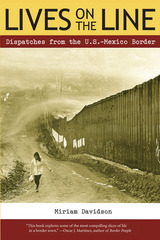 Lives on the Line: Dispatches from the U.S.-Mexico Border
Miriam Davidson
University of Arizona Press, 2000 Straddling an international border, the twin cities of Nogales, Arizona, and Nogales, Sonora, are in many ways one community. For years the border was less distinct, with Mexicans crossing one way to visit family and friends and tourists crossing the other to roam the curio shops. But as times change, so do places like Nogales. The maquiladora industry has brought jobs, population growth, and environmental degradation to the Mexican side. A crackdown against undocumented immigrants has brought hundreds of Border Patrol agents and a 14-foot-tall steel wall to the U.S. side. Drug smuggling has brought violence to both sides. Neither Nogales will ever be the same.
In Lives on the Line, Miriam Davidson tells five true stories from these border cities to show the real-life effects that the maquiladora boom and the law enforcement crackdown have had on the people of "Ambos (Both) Nogales." Readers will meet Yolanda Sánchez, a single mother who came to work in the factories; Jimmy Teyechea, a cancer victim who became an outspoken environmental activist; Dario Miranda Valenzuela, an undocumented immigrant who was shot and killed by a U.S. Border Patrol agent; Cristina, a "tunnel kid" who aspired to flee the gang lifestyle; and Hope Torres and Tom Higgins, maquiladora managers who have made unique contributions to the community.
In sharing these stories of people transformed by love and faith, by pain and loss, Davidson relates their experiences to larger issues and shows that, although life on the border is tough, it is not without hope.
Lives on the Line is an impassioned look at the changes that have swept the U.S.-Mexico border: the rising tension concerning free trade and militarization, the growing disparity between the affluent and the impoverished. At the same time, the book highlights the positive aspects of change, revealing challenges and opportunities not only for the people who live on the border but for all Americans.
 Lives Per Gallon: The True Cost of Our Oil Addiction
Terry Tamminen
Island Press, 2008 How much would you pay for a gallon of gas? $4.00? $10.00? Would you pay with the health of your lungs or with years taken from your lifespan?
The infamous "pain at the pump" runs much deeper than our wallets, argues Terry Tamminen, former Secretary of the California Environmental Protection Agency and current Special Advisor to California Governor Arnold Schwarzenegger. Petroleum may power our cars and heat our homes, but it also contributes to birth defects and disorders like asthma and emphysema, not to mention cancer. In Lives Per Gallon, Tamminen takes a hard look at these and other health, environmental, and national security costs hidden in every barrel of oil.
While the petroleum industry is raking in huge profits, Tamminen shows, it is studiously avoiding measures that would lessen the hazards of its products. Using the successful lawsuits by state governments against big tobacco as a model, the author sets forth a bold strategy to hold oil and auto companies accountable and force industry reform. He also offers a blueprint for developing alternative energy sources based on California's real world experiences.
Certain to be controversial, Lives Per Gallon is an unblinking assessment of the true price of petroleum and a prescription for change. The choice is clear: continuing paying with our health, or kick our addiction and evolve beyond an oil-dependent economy.
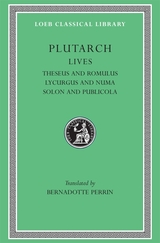 Lives, Volume I: Theseus and Romulus. Lycurgus and Numa. Solon and Publicola
Plutarch
Harvard University Press Comparative biographies of distinguished Greeks and Romans.
Plutarch (Plutarchus), ca. AD 45–120, was born at Chaeronea in Boeotia in central Greece, studied philosophy at Athens, and, after coming to Rome as a teacher in philosophy, was given consular rank by the emperor Trajan and a procuratorship in Greece by Hadrian. He was married and the father of one daughter and four sons. He appears as a man of kindly character and independent thought, studious and learned.
Plutarch wrote on many subjects. Most popular have always been the forty-six Parallel Lives, biographies planned to be ethical examples in pairs (in each pair, one Greek figure and one similar Roman), though the last four lives are single. All are invaluable sources of our knowledge of the lives and characters of Greek and Roman statesmen, soldiers, and orators. Plutarch’s many other varied extant works, about sixty in number, are known as Moralia or Moral Essays. They are of high literary value, besides being of great use to people interested in philosophy, ethics, and religion.
The Loeb Classical Library edition of the Lives is in eleven volumes.
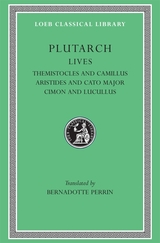 Lives, Volume II: Themistocles and Camillus. Aristides and Cato Major. Cimon and Lucullus
Plutarch
Harvard University Press Comparative biographies of distinguished Greeks and Romans.
Plutarch (Plutarchus), ca. AD 45–120, was born at Chaeronea in Boeotia in central Greece, studied philosophy at Athens, and, after coming to Rome as a teacher in philosophy, was given consular rank by the emperor Trajan and a procuratorship in Greece by Hadrian. He was married and the father of one daughter and four sons. He appears as a man of kindly character and independent thought, studious and learned.
Plutarch wrote on many subjects. Most popular have always been the forty-six Parallel Lives, biographies planned to be ethical examples in pairs (in each pair, one Greek figure and one similar Roman), though the last four lives are single. All are invaluable sources of our knowledge of the lives and characters of Greek and Roman statesmen, soldiers, and orators. Plutarch’s many other varied extant works, about sixty in number, are known as Moralia or Moral Essays. They are of high literary value, besides being of great use to people interested in philosophy, ethics, and religion.
The Loeb Classical Library edition of the Lives is in eleven volumes.
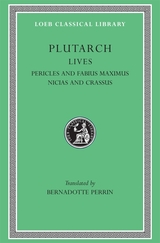 Lives, Volume III: Pericles and Fabius Maximus. Nicias and Crassus
Plutarch
Harvard University Press Comparative biographies of distinguished Greeks and Romans.
Plutarch (Plutarchus), ca. AD 45–120, was born at Chaeronea in Boeotia in central Greece, studied philosophy at Athens, and, after coming to Rome as a teacher in philosophy, was given consular rank by the emperor Trajan and a procuratorship in Greece by Hadrian. He was married and the father of one daughter and four sons. He appears as a man of kindly character and independent thought, studious and learned.
Plutarch wrote on many subjects. Most popular have always been the forty-six Parallel Lives, biographies planned to be ethical examples in pairs (in each pair, one Greek figure and one similar Roman), though the last four lives are single. All are invaluable sources of our knowledge of the lives and characters of Greek and Roman statesmen, soldiers, and orators. Plutarch’s many other varied extant works, about sixty in number, are known as Moralia or Moral Essays. They are of high literary value, besides being of great use to people interested in philosophy, ethics, and religion.
The Loeb Classical Library edition of the Lives is in eleven volumes.
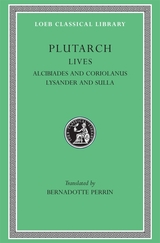 Lives, Volume IV: Alcibiades and Coriolanus. Lysander and Sulla
Plutarch
Harvard University Press Comparative biographies of distinguished Greeks and Romans.
Plutarch (Plutarchus), ca. AD 45–120, was born at Chaeronea in Boeotia in central Greece, studied philosophy at Athens, and, after coming to Rome as a teacher in philosophy, was given consular rank by the emperor Trajan and a procuratorship in Greece by Hadrian. He was married and the father of one daughter and four sons. He appears as a man of kindly character and independent thought, studious and learned.
Plutarch wrote on many subjects. Most popular have always been the forty-six Parallel Lives, biographies planned to be ethical examples in pairs (in each pair, one Greek figure and one similar Roman), though the last four lives are single. All are invaluable sources of our knowledge of the lives and characters of Greek and Roman statesmen, soldiers, and orators. Plutarch’s many other varied extant works, about sixty in number, are known as Moralia or Moral Essays. They are of high literary value, besides being of great use to people interested in philosophy, ethics, and religion.
The Loeb Classical Library edition of the Lives is in eleven volumes.
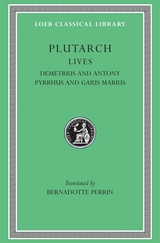 Lives, Volume IX: Demetrius and Antony. Pyrrhus and Gaius Marius
Plutarch
Harvard University Press Comparative biographies of distinguished Greeks and Romans.
Plutarch (Plutarchus), ca. AD 45–120, was born at Chaeronea in Boeotia in central Greece, studied philosophy at Athens, and, after coming to Rome as a teacher in philosophy, was given consular rank by the emperor Trajan and a procuratorship in Greece by Hadrian. He was married and the father of one daughter and four sons. He appears as a man of kindly character and independent thought, studious and learned.
Plutarch wrote on many subjects. Most popular have always been the forty-six Parallel Lives, biographies planned to be ethical examples in pairs (in each pair, one Greek figure and one similar Roman), though the last four lives are single. All are invaluable sources of our knowledge of the lives and characters of Greek and Roman statesmen, soldiers, and orators. Plutarch’s many other varied extant works, about sixty in number, are known as Moralia or Moral Essays. They are of high literary value, besides being of great use to people interested in philosophy, ethics, and religion.
The Loeb Classical Library edition of the Lives is in eleven volumes.
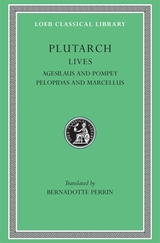 Lives, Volume V: Agesilaus and Pompey. Pelopidas and Marcellus
Plutarch
Harvard University Press Comparative biographies of distinguished Greeks and Romans.
Plutarch (Plutarchus), ca. AD 45–120, was born at Chaeronea in Boeotia in central Greece, studied philosophy at Athens, and, after coming to Rome as a teacher in philosophy, was given consular rank by the emperor Trajan and a procuratorship in Greece by Hadrian. He was married and the father of one daughter and four sons. He appears as a man of kindly character and independent thought, studious and learned.
Plutarch wrote on many subjects. Most popular have always been the forty-six Parallel Lives, biographies planned to be ethical examples in pairs (in each pair, one Greek figure and one similar Roman), though the last four lives are single. All are invaluable sources of our knowledge of the lives and characters of Greek and Roman statesmen, soldiers, and orators. Plutarch’s many other varied extant works, about sixty in number, are known as Moralia or Moral Essays. They are of high literary value, besides being of great use to people interested in philosophy, ethics, and religion.
The Loeb Classical Library edition of the Lives is in eleven volumes.
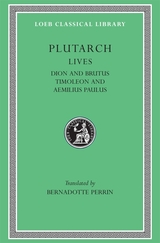 Lives, Volume VI: Dion and Brutus. Timoleon and Aemilius Paulus
Plutarch
Harvard University Press Comparative biographies of distinguished Greeks and Romans.
Plutarch (Plutarchus), ca. AD 45–120, was born at Chaeronea in Boeotia in central Greece, studied philosophy at Athens, and, after coming to Rome as a teacher in philosophy, was given consular rank by the emperor Trajan and a procuratorship in Greece by Hadrian. He was married and the father of one daughter and four sons. He appears as a man of kindly character and independent thought, studious and learned.
Plutarch wrote on many subjects. Most popular have always been the forty-six Parallel Lives, biographies planned to be ethical examples in pairs (in each pair, one Greek figure and one similar Roman), though the last four lives are single. All are invaluable sources of our knowledge of the lives and characters of Greek and Roman statesmen, soldiers, and orators. Plutarch’s many other varied extant works, about sixty in number, are known as Moralia or Moral Essays. They are of high literary value, besides being of great use to people interested in philosophy, ethics, and religion.
The Loeb Classical Library edition of the Lives is in eleven volumes.
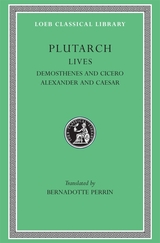 Lives, Volume VII: Demosthenes and Cicero. Alexander and Caesar
Plutarch
Harvard University Press Comparative biographies of distinguished Greeks and Romans.
Plutarch (Plutarchus), ca. AD 45–120, was born at Chaeronea in Boeotia in central Greece, studied philosophy at Athens, and, after coming to Rome as a teacher in philosophy, was given consular rank by the emperor Trajan and a procuratorship in Greece by Hadrian. He was married and the father of one daughter and four sons. He appears as a man of kindly character and independent thought, studious and learned.
Plutarch wrote on many subjects. Most popular have always been the forty-six Parallel Lives, biographies planned to be ethical examples in pairs (in each pair, one Greek figure and one similar Roman), though the last four lives are single. All are invaluable sources of our knowledge of the lives and characters of Greek and Roman statesmen, soldiers, and orators. Plutarch’s many other varied extant works, about sixty in number, are known as Moralia or Moral Essays. They are of high literary value, besides being of great use to people interested in philosophy, ethics, and religion.
The Loeb Classical Library edition of the Lives is in eleven volumes.
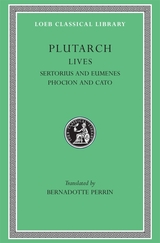 Lives, Volume VIII: Sertorius and Eumenes. Phocion and Cato
Plutarch
Harvard University Press Comparative biographies of distinguished Greeks and Romans.
Plutarch (Plutarchus), ca. AD 45–120, was born at Chaeronea in Boeotia in central Greece, studied philosophy at Athens, and, after coming to Rome as a teacher in philosophy, was given consular rank by the emperor Trajan and a procuratorship in Greece by Hadrian. He was married and the father of one daughter and four sons. He appears as a man of kindly character and independent thought, studious and learned.
Plutarch wrote on many subjects. Most popular have always been the forty-six Parallel Lives, biographies planned to be ethical examples in pairs (in each pair, one Greek figure and one similar Roman), though the last four lives are single. All are invaluable sources of our knowledge of the lives and characters of Greek and Roman statesmen, soldiers, and orators. Plutarch’s many other varied extant works, about sixty in number, are known as Moralia or Moral Essays. They are of high literary value, besides being of great use to people interested in philosophy, ethics, and religion.
The Loeb Classical Library edition of the Lives is in eleven volumes.
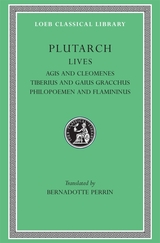 Lives, Volume X: Agis and Cleomenes. Tiberius and Gaius Gracchus. Philopoemen and Flamininus
Plutarch
Harvard University Press Comparative biographies of distinguished Greeks and Romans.
Plutarch (Plutarchus), ca. AD 45–120, was born at Chaeronea in Boeotia in central Greece, studied philosophy at Athens, and, after coming to Rome as a teacher in philosophy, was given consular rank by the emperor Trajan and a procuratorship in Greece by Hadrian. He was married and the father of one daughter and four sons. He appears as a man of kindly character and independent thought, studious and learned.
Plutarch wrote on many subjects. Most popular have always been the forty-six Parallel Lives, biographies planned to be ethical examples in pairs (in each pair, one Greek figure and one similar Roman), though the last four lives are single. All are invaluable sources of our knowledge of the lives and characters of Greek and Roman statesmen, soldiers, and orators. Plutarch’s many other varied extant works, about sixty in number, are known as Moralia or Moral Essays. They are of high literary value, besides being of great use to people interested in philosophy, ethics, and religion.
The Loeb Classical Library edition of the Lives is in eleven volumes.
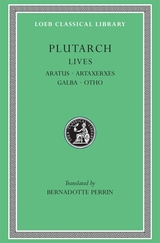 Lives, Volume XI: Aratus. Artaxerxes. Galba. Otho
Plutarch
Harvard University Press Comparative biographies of distinguished Greeks and Romans.
Plutarch (Plutarchus), ca. AD 45–120, was born at Chaeronea in Boeotia in central Greece, studied philosophy at Athens, and, after coming to Rome as a teacher in philosophy, was given consular rank by the emperor Trajan and a procuratorship in Greece by Hadrian. He was married and the father of one daughter and four sons. He appears as a man of kindly character and independent thought, studious and learned.
Plutarch wrote on many subjects. Most popular have always been the forty-six Parallel Lives, biographies planned to be ethical examples in pairs (in each pair, one Greek figure and one similar Roman), though the last four lives are single. All are invaluable sources of our knowledge of the lives and characters of Greek and Roman statesmen, soldiers, and orators. Plutarch’s many other varied extant works, about sixty in number, are known as Moralia or Moral Essays. They are of high literary value, besides being of great use to people interested in philosophy, ethics, and religion.
The Loeb Classical Library edition of the Lives is in eleven volumes.
Livestock for Sale: Animal Husbandry in a Roman Frontier Zone
Maaike Groot
Amsterdam University Press, 2016 The civitas Batavorum was a settlement on the north-western frontier of the Roman Empire, and it is now the site of numerous archaeological excavations. This book offers the most up-to-date look yet at what has been discovered, using the newest archaeological techniques, about the town and its economy, its military importance, and the religious and domestic buildings it held. It will be essential reading for anyone studying the economy of the Roman provincial countryside or the details of food supply for the Roman army and town.
 Livestock in a Changing Landscape, Volume 1: Drivers, Consequences, and Responses
Edited by Henning Steinfeld, Harold A. Mooney, Fritz Schneider, and Laurie E. Neville
Island Press, 2010 The rapidly changing nature of animal production systems, especially increasing intensification and globalization, is playing out in complex ways around the world. Over the last century, livestock keeping evolved from a means of harnessing marginal resources to produce items for local consumption to a key component of global food chains. Livestock in a Changing Landscape offers a comprehensive examination of these important and far-reaching trends.
The books are an outgrowth of a collaborative effort involving international nongovernmental organizations including the United Nations Food and Agriculture Organization (UN FAO), the International Livestock Research Institute (ILRI), the Swiss College of Agriculture (SHL), the French Agricultural Research Centre for International Development (CIRAD), and the Scientific Committee for Problems of the Environment (SCOPE).
Volume 1 examines the forces shaping change in livestock production and management; the resulting impacts on landscapes, land use, and social systems; and potential policy and management responses.
Volume 2 explores needs and draws experience from region-specific contexts and detailed case studies. The case studies describe how drivers and consequences of change play out in specific geographical areas, and how public and private responses are shaped and implemented.
Together, the volumes present new, sustainable approaches to the challenges created by fundamental shifts in livestock management and production, and represent an essential resource for policy makers, industry managers, and academics involved with this issue.
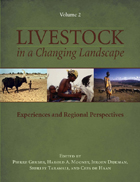 Livestock in a Changing Landscape, Volume 2: Experiences and Regional Perspectives
Edited by Pierre Gerber, Harold A. Mooney, Jeroen Dijkman, Shirley Tarawali, and Cees de Haan
Island Press, 2010 The rapidly changing nature of animal production systems, especially increasing intensification and globalization, is playing out in complex ways around the world. Over the last century, livestock keeping evolved from a means of harnessing marginal resources to produce items for local consumption to a key component of global food chains. Livestock in a Changing Landscape offers a comprehensive examination of these important and far-reaching trends.
The books are an outgrowth of a collaborative effort involving international nongovernmental organizations including the United Nations Food and Agriculture Organization (UN FAO), the International Livestock Research Institute (ILRI), the Swiss College of Agriculture (SHL), the French Agricultural Research Centre for International Development (CIRAD), and the Scientific Committee for Problems of the Environment (SCOPE).
Volume 1 examines the forces shaping change in livestock production and management; the resulting impacts on landscapes, land use, and social systems; and potential policy and management responses.
Volume 2 explores needs and draws experience from region-specific contexts and detailed case studies. The case studies describe how drivers and consequences of change play out in specific geographical areas, and how public and private responses are shaped and implemented.
Together, the volumes present new, sustainable approaches to the challenges created by fundamental shifts in livestock management and production, and represent an essential resource for policy makers, industry managers, and academics involved with this issue
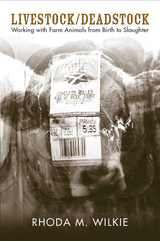 Livestock/Deadstock: Working with Farm Animals from Birth to Slaughter
Authored by Rhoda M. Wilkie
Temple University Press, 2010 The connection between people and companion animals has received considerable attention from scholars. In her original and provocative ethnography Livestock/Deadstock, sociologist Rhoda Wilkie asks, how do the men and women who work on farms, in livestock auction markets, and slaughterhouses, interact with—or disengage from—the animals they encounter in their jobs? Wilkie provides a nuanced appreciation of how those men and women who breed, rear, show, fatten, market, medically treat, and slaughter livestock, make sense of their interactions with the animals that constitute the focus of their work lives. Using a sociologically informed perspective, Wilkie explores their attitudes and behaviors to explain how agricultural workers think, feel, and relate to food animals. Livestock/Deadstock looks at both people and animals in the division of labor and shows how commercial and hobby productive contexts provide male and female handlers with varying opportunities to bond with and/or distance themselves from livestock. Exploring the experiences of stockpeople, hobby farmers, auction workers, vets and slaughterers, she offers timely insight into the multifaceted, gendered, and contradictory nature of human roles in food animal production.
Livestreaming: An Aesthetics and Ethics of Technical Encounter
EL Putnam
University of Minnesota Press, 2024 An inquiry into how livestreaming can help us meaningfully connect
Livestreaming is ubiquitous in our Covid-19-inflected era. In this book, EL Putnam takes up the implications of this technology, arguing that livestreamed internet broadcasts perform aesthetic and ethical encounters that invite distinctive means of relating to others. Treating humans and technologies as inherently relational, Putnam considers how livestreaming constitutes new patterns of being together that are complex, ambivalent, and transformative. Understood in such a way, we see how livestreaming exceeds quantifying and calculating metrics, challenges emphasis on content generation, and introduces an entirely new—and dynamic—means of social engagement.
 Livin' the Blues: Memoirs of a Black Journalist and Poet
Frank Marshall Davis
University of Wisconsin Press, 1993 Frank Marshall Davis was a prominent poet, journalist, jazz critic, and civil rights activist on the Chicago and Atlanta scene from the 1920s through 1940s. He was an intimate of Langston Hughes and Richard Wright and an influential editor at the Chicago Evening Bulletin, the Chicago Whip, the Chicago Star, and the Atlanta World. He renounced his writing career in 1948 and moved to Hawaii, forgotten until the Black Arts Movement rediscovered him in the 1960s.
Because of his early self-exile from the literary limelight, Davis's life and work have been shrouded in mystery. Livin' the Blues offers us a chance to rediscover this talented poet and writer and stands as an important example of black autobiography, similar in form, style, and message to those of Langston Hughes and Richard Wright.
"Both a social commentary and intellectual exploration into African American life in the twentieth century."—Charles Vincent, Atlanta History
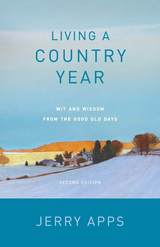 Living a Country Year: Wit and Wisdom from the Good Old Days
Jerry Apps
Wisconsin Historical Society Press, 2018 Jerry App’s farm stories open the barn door to understanding life in the country.
“Even with the all the hard work, we had more time (perhaps we took more time) to enjoy what was all around us: nights filled with starlight, days with clear blue skies and puffy clouds. Wonderful smells everywhere—fresh mown hay, wildflowers, and apple blossoms. Interesting sounds—the rumble of distant thunder, an owl calling in the woods, a flock of Canada geese winging over in the fall.”
In this paperback edition of a beloved Jerry Apps classic, the rural historian tells stories from his childhood days on a small central Wisconsin dairy farm in the 1930s and 1950s. From a January morning memory of pancakes piled high after chores, to a June day spent learning to ride a pony named Ginger, Jerry moves through the turn of the seasons and teaches gentle lessons about life on the farm. With recipes associated with each month and a new introduction exclusive to this 2nd edition, Living a Country Year celebrates the rhythms of rural life with warmth and humor.
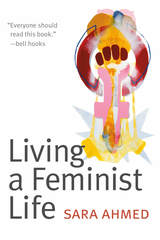 Living a Feminist Life
Sara Ahmed
Duke University Press, 2017 In Living a Feminist Life Sara Ahmed shows how feminist theory is generated from everyday life and the ordinary experiences of being a feminist at home and at work. Building on legacies of feminist of color scholarship in particular, Ahmed offers a poetic and personal meditation on how feminists become estranged from worlds they critique—often by naming and calling attention to problems—and how feminists learn about worlds from their efforts to transform them. Ahmed also provides her most sustained commentary on the figure of the feminist killjoy introduced in her earlier work while showing how feminists create inventive solutions—such as forming support systems—to survive the shattering experiences of facing the walls of racism and sexism. The killjoy survival kit and killjoy manifesto, with which the book concludes, supply practical tools for how to live a feminist life, thereby strengthening the ties between the inventive creation of feminist theory and living a life that sustains it.
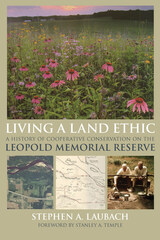 Living a Land Ethic: A History of Cooperative Conservation on the Leopold Memorial Reserve
Stephen A. Laubach
University of Wisconsin Press, 2014 In 1935, in the midst of relentless drought, Aldo Leopold purchased an abandoned farm along the Wisconsin River near Baraboo, Wisconsin. An old chicken coop, later to become famous as the Leopold "Shack," was the property's only intact structure. The Leopold family embraced this spent farm as a new kind of laboratory—a place to experiment on restoring health to an ailing piece of land. Here, Leopold found inspiration for writing A Sand County Almanac, his influential book of essays on conservation and ethics.
Living a Land Ethic chronicles the formation of the 1,600-acre reserve surrounding the Shack. When the Leopold Memorial Reserve was founded in 1967, five neighboring families signed an innovative agreement to jointly care for their properties in ways that honored Aldo Leopold's legacy. In the ensuing years, the Reserve's Coleman and Leopold families formed the Sand County Foundation and the Aldo Leopold Foundation. These organizations have been the primary stewards of the Reserve, carrying on a tradition of ecological restoration and cooperative conservation. Author Stephen A. Laubach draws from the archives of both foundations, including articles of incorporation, correspondence, photos, managers' notes, and interviews to share with readers the Reserve's untold history and its important place in the American conservation movement.
 Living and Dying in São Paulo: Immigrants, Health, and the Built Environment in Brazil
Jeffrey Lesser
Duke University Press, 2025 There is a saying in Brazil: “Mosquitoes are democratic: they bite the rich and the poor alike.” Why then is bad health---from violence to respiratory disease, from malaria to dengue---dispersed unevenly across different social and national groups? In Living and Dying in São Paulo, Jeffrey Lesser focuses on the Bom Retiro neighborhood to explore such questions by examining the competing visions of well-being in Brazil among racialized immigrants and policymakers and health officials. He analyzes the fraught relationship between Bom Retiro residents and the state and health care agencies that have overseen community sanitation efforts since the mid-nineteenth century, drawing out the connected systems of the built environment, public health laws and practices, and citizenship. Lesser employs the concept of “residues” to outline how continuing historical material, legislative, and social legacies structure contemporary daily life and health outcomes in the neighborhood. In so doing, Lesser creates a dialogue between the past and the present, showing how the relationship between culture and disease is both layered and interconnected.
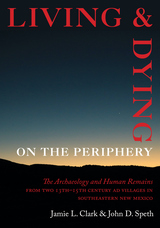 Living and Dying on the Periphery: The Archaeology and Human Remains from Two 13th-15th Century AD Villages in Southeastern New Mexico
Jamie L. Clark and John D. Speth
University of Utah Press, 2022 The phrase "southwestern US/northwestern Mexico archaeology" tends to evoke images of multistoried villages and cliff dwellings. But on the eastern periphery of the Southwest, where mesas and mountains give way to vast grasslands, other types of villages once thrived. In this volume, archaeologists Jamie Clark and John Speth document the lives and lifeways of the people who inhabited two of these villages: Henderson and Bloom Mound. The villagers hunted bison on the plains and exchanged meat and hides with Puebloan peoples for pottery, turquoise, marine shells, and other goods. The origins of these close social and economic ties between bison hunters and village farmers, often referred to as “Plains-Pueblo interaction,” have intrigued anthropologists for generations. The excavations at Henderson and Bloom Mound provide fascinating new insights into when, how, and why these relationships came about.
Summarizing results from eight seasons of research, Clark and Speth document human burials and associated grave offerings from the two sites. They discuss evidence for pathologies and trauma, raising questions about the nature and causes of violence that led to the demise of Henderson and Bloom Mound, and the abandonment of many other farming-hunting communities in the surrounding region.
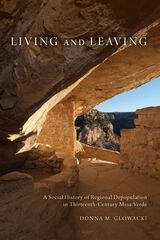 Living and Leaving: A Social History of Regional Depopulation in Thirteenth-Century Mesa Verde
Donna M. Glowacki
University of Arizona Press, 2015 The Mesa Verde migrations in the thirteenth century were an integral part of a transformative period that forever changed the course of Pueblo history. For more than seven hundred years, Pueblo people lived in the Northern San Juan region of the U.S. Southwest. Yet by the end of the 1200s, tens of thousands of Pueblo people had left the region. Understanding how it happened and where they went are enduring questions central to Southwestern archaeology.
Much of the focus on this topic has been directed at understanding the role of climate change, drought, violence, and population pressure. The role of social factors, particularly religious change and sociopolitical organization, are less well understood. Bringing together multiple lines of evidence, including settlement patterns, pottery exchange networks, and changes in ceremonial and civic architecture, this book takes a historical perspective that naturally forefronts the social factors underlying the depopulation of Mesa Verde.
Author Donna M. Glowacki shows how “living and leaving” were experienced across the region and what role differing stressors and enablers had in causing emigration. The author’s analysis explains how different histories and contingencies—which were shaped by deeply rooted eastern and western identities, a broad-reaching Aztec-Chaco ideology, and the McElmo Intensification—converged, prompting everyone to leave the region. This book will be of interest to southwestern specialists and anyone interested in societal collapse, transformation, and resilience.
 Living and Sustaining a Creative Life: Essays by 40 Working Artists
Edited by Sharon Louden
Intellect Books, 2013 In this day and age, when art has become more of a commodity and art school graduates are convinced that they can only make a living from their work by attaining gallery representation, it is more important than ever to show the reality of how a professional, contemporary artist sustains a creative practice over time. The forty essays collected in Living and Sustaining a Creative Life are written in the artists’ own voices and take the form of narratives, statements, and interviews. Each story is different and unique, but the common thread is an ongoing commitment to creativity, inside and outside the studio. Both day-to-day and big picture details are revealed, showing how it is possible to sustain a creative practice that contributes to the ongoing dialogue in contemporary art. These stories will inform and inspire any student, young artist, and art enthusiast and will help redefine what "success" means to a professional artist.
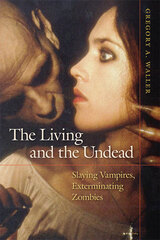 The Living and the Undead: Slaying Vampires, Exterminating Zombies
Gregory A. Waller
University of Illinois Press, 2010 With a legacy stretching back into legend and folklore, the vampire in all its guises haunts the film and fiction of the twentieth century and remains the most enduring of all the monstrous threats that roam the landscapes of horror. In The Living and the Undead, Gregory A. Waller shows why this creature continues to fascinate us and why every generation reshapes the story of the violent confrontation between the living and the undead to fit new times. Examining a broad range of novels, stories, plays, films, and made-for-television movies, Waller focuses upon a series of interrelated texts: Bram Stoker's Dracula (1897); several film adaptations of Stoker's novel; F. W. Murnau's Nosferatu, A Symphony of Horror (1922); Richard Matheson's I Am Legend (1954); Stephen King's 'Salem's Lot (1975); Werner Herzog's Nosferatu the Vampyre (1979); and George Romero's Night of the Living Dead (1968) and Dawn of the Dead (1979). All of these works, Waller argues, speak to our understanding and fear of evil and chaos, of desire and egotism, of slavish dependence and masterful control. This paperback edition of The Living and the Undead features a new preface in which Waller positions his analysis in relation to the explosion of vampire and zombie films, fiction, and criticism in the past twenty-five years.
Living as Equals: How Three White Communities Struggled to Make Interracial Connections During the Civil Rights Era
Phyllis Palmer
Vanderbilt University Press, 2008 Using interviews with leaders and participants, as well as historical archives, the author documents three interracial sites where white Americans put themselves into unprecedented relationships with African Americans, Mexican Americans, and Asian Americans. In teen summer camps in the New York City and Los Angeles areas, students from largely segregated schools worked and played together; in Washington, DC, families fought blockbusting and white flight to build an integrated neighborhood; and in San Antonio, white community activists joined in coalition with Mexican American groups to advocate for power in a city government monopolized by Anglos. Women often took the lead in organizations that were upsetting patterns of men's protective authority at the same time as white people's racial dominance.
 Living at Micro Scale: The Unexpected Physics of Being Small
David B. Dusenbery
Harvard University Press, 2011 Kermit the Frog famously said that it isn’t easy being green, and in Living at Micro Scale David Dusenbery shows that it isn’t easy being small—existing at the size of, say, a rotifer, a tiny multicellular animal just at the boundary between the visible and the microscopic. “Imagine,” he writes, “stepping off a curb and waiting a week for your foot to hit the ground.” At that scale, we would be small enough to swim inside the letter O in the word “rotifer.” What are the physical consequences of life at this scale? How do such organisms move, identify prey and predators and (if they’re so inclined) mates, signal to one another, and orient themselves?
In clear and engaging prose, Dusenbery uses straightforward physics to demonstrate the constraints on the size, shape, and behavior of tiny organisms. While recounting the historical development of the basic concepts, he unearths a corner of microbiology rich in history, and full of lessons about how science does or does not progress. Marshalling findings from different fields to show why tiny organisms have some of the properties they are found to have, Dusenbery shows a science that doesn’t always move triumphantly forward, and is dependent to a great extent on accident and contingency.
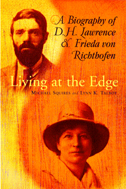 Living At The Edge: Biography Of D H Lawrence & Frieda Von Richthofen
Michael Squires
University of Wisconsin Press, 2002 Dashingly told and meticulously researched, this double biography of D. H. Lawrence and his wife Frieda von Richthofen is the first to draw fully on Frieda’s unpublished letters and on interviews with people who knew her well. It explores their collision with an industrial world they hated and chronicles the stormy relationship between husband and wife. The strong sexual vitality that inspired Lawrence’s art brought both joy and anguish to his marriage. Here, the Lawrences emerge as proud but not conceited in their unconventional lives, staunch in the face of fierce opposition from a conformist society.
Living at the Edge follows the separate lives of Lawrence and Frieda up to their first meeting in 1912. Tracing their new life together, it depicts their grateful escape from the English Midlands; their discovery of exotic places where they made temporary homes—Italy, Cornwall, Australia, New Mexico, and Mexico; Lawrence’s courageous battle against illness; and, after his death in 1930, Frieda’s success in recreating the simple life on ranches near Taos, New Mexico, where she died in 1956.
At the center of their story is Lawrence’s literary career. Biographers Squires and Talbot see Lawrence’s major novels—The Rainbow, Women in Love, Lady Chatterley’s Lover—as a fresh way to understand his turbulent and conflicted life. They reveal the extreme care with which he rewrote his personal experience to satisfy his deepest needs, and they introduce the many influential people who entered the Lawrences’ lives and work. The rich materials from Frieda’s letters reveal a different Lawrence—more difficult as a man but more interesting as an artist; they also reveal a different Frieda—more vibrant as a woman, more substantial as a companion. This superb biography gives both Lawrence and Frieda striking new dimensions.
Living at the End of Time: Two Years in a Tiny House
John Hanson Mitchell
University Press of New England, 2014 In this second book in his Scratch Flat Chronicles, John Hanson Mitchell tells how he set out to recreate Henry David Thoreau’s two years at Walden Pond in a replica of Thoreau’s cabin. Mitchell lived off the grid, without running water or electricity, in a tiny house not half a mile from a major highway and in the shadow of a massive new computer company. Nevertheless, his contact with wildlife, the changing seasons, and the natural world equaled and even surpassed Thoreau’s. Hugely popular with the international community of Thoreau followers when it was first published, this book will now be essential reading for the growing community of people who are interested in living in a tiny house, fully experiencing the natural world, or finding self-sufficiency in an increasingly plugged-in society.
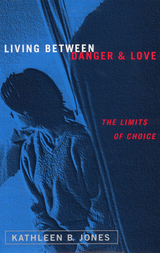 Living Between Danger and Love: The Limits of Choice
Jones, Kathleen B.
Rutgers University Press, 1999 Andrea O'Donnell did not fit what criminal justice experts call the "victim profile." The twenty-seven-year old women's studies major at San Diego State University was the director of the campus Women's Resource Center and a self-defense instructor. Nevertheless, in the early morning hours of November 5, 1994, she was brutally murdered. Her decomposed body was discovered in the apartment that she shared with her boyfriend, Andres English-Howard. In August 1995, he was convicted of first-degree murder. The night before he was scheduled to appear in court for sentencing, English-Howard hanged himself in his jail cell. Author Kathleen B. Jones, one of O'Donnell's professors, was particularly shaken by her death. In Living Between Danger and Love, she examines O'Donnell's death and what it has to say to all of us. She provokes readers to consider the irony that our ideas about choice might prevent us from imagining and discovering social relationships of intimacy where love and power are not in conflict
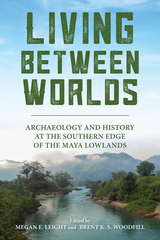 Living between Worlds: Archaeology and History at the Southern Edge of the Maya Lowlands
Edited by Megan E. Leight and Brent K. S. Woodfill
University of Alabama Press, 2026 The first in-depth exploration of the narrow but vital region between the pre-Columbian Maya highlands and lowlands in Guatemala called the Northern Transversal Strip. Living between Worlds: Archaeology and History at the Southern Edge of the Maya Lowlands is the first in-depth exploration of the narrow but vital region between the pre-Columbian Maya highlands and lowlands in Guatemala. This groundbreaking volume brings together the results of a twenty-five-year, multidisciplinary collaboration that reshapes our understanding of Maya civilization. Long overlooked due to the absence of towering monuments and stone cities, the Northern Transversal Strip was nevertheless a hub of commerce, culture, and political interaction. Spanning multiple Classic Maya city-states, conquest-era ethnic groups, and modern geopolitical boundaries, the region played a crucial role as a transportation corridor and resource center. Archaeologists, art historians, ethnohistorians, biologists, and paleoecologists join forces in this volume to reconstruct its complex past, uncovering its deep connections to the broader Maya world. From its role in the trade of cacao, salt, and quetzal feathers to its enduring significance through the Spanish conquest and modern conflicts, the Northern Transversal Strip emerges as a dynamic and pivotal region. Through detailed analyses of ceramics, figurines, obsidian exchange networks, and settlement patterns, this volume reveals the intricate web of interregional ties that defined the Maya civilization. With cutting-edge research and fresh perspectives, Living Between Worlds offers a comprehensive synthesis of archaeological discoveries, historical insights, and environmental studies. By literally and metaphorically bridging the highland-lowland divide, this volume transforms how scholars and readers alike perceive this once-marginalized but essential part of the Maya world.
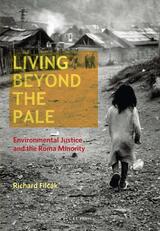 Living beyond the Pale: Environmental Justice and the Roma Minority
Richard Filcák
Central European University Press, 2012 We find Roma settlements on the outskirts of villages, separated from the majority population by roads, railways or other barriers, disconnected from water pipelines and sewage treatment. Why are some people (or groups) better off than others when it comes to the distribution of environmental benefits? In order to understand the present situation and identify ways to address the impacts of these inequalities we must understand the past and mechanisms related to the differentiated treatment. The situation and discrimination of the Roma ethnic minority in Slovakia is examined from the perspective of environmental conditions and injustice. There is no simple answer as to why there is environmental injustice. Environmental conditions in Roma settlements are just one of the indicators of failures of policies addressing the problem of poverty and social exclusion in marginalized groups, structural discrimination, and internal Roma problems. Environmental injustice is not an outcome of the "historical determination" of the Roma population to live in environmentally problematic places.
Living Black: Social Life in an African American Neighborhood
Mark S. Fleisher
University of Wisconsin Press, 2015 Living Black breaks the stereotype of poor African American neighborhoods as dysfunctional ghettos of helpless and hopeless people. Despite real and enduring poverty, the community described here—the historic North End of Champaign, Illinois—has a vibrant social life and strong ties among generations. But it operates on its own nonjudgmental terms—teen moms aren’t derided, school dropouts aren’t ridiculed, and parolees and ex-cons aren’t scorned.
Mark S. Fleisher offers a window into daily life in this neighborhood, particularly through the stories of Mo and Memphis Washington, who fight to sustain a stable home for their children, and of Burpee, a local man who has returned to the North End to rebuild his life after years of crime and punishment in Chicago.
“Outstanding” books for public & secondary school libraries from university presses, American Library Association
 Living by the Rules of the Sea
David M. Bush, Orrin H. Pilkey and William J. Neal
Duke University Press, 1996 Living by the Rules of the Sea is a primer for people living along the nation's coastlines, those considering moving to the coast, or those who want a greater understanding of the risks and dangers posed by living at the seacoast. Published as part of Duke University Press's Living with the Shore series, but without a direct focus on the coastline of one particular state, this book is intended as an overall guide to coastal physical processes, risk assessment of potential property damage from coastal natural hazards, and property damage mitigation. Over the past twenty years, the authors have mapped and studied most of the barrier islands in the United States and have experienced coastal processes such as storms and shoreline retreat at close range. They represent a coastal geology/oceanographic perspective that is decidedly in favor of preserving the natural protective capabilities of the native coastal environment. While strongly anti-engineering in outlook, Living by the Rules of the Sea does provide a review of coastal engineering techniques. It also examines methods of repairing damage to the natural environment that lessen the prospect of further property damage. Finally, it employs a more inclusive "coastal zone" approach rather than simply concentrating on a more narrowly defined shoreline. Barrier islands are viewed as part of a larger system in which changes in one part of the system—for example, the mining of sand dunes or dredging offshore for beach replenishment sand—can have profound effects on another part of the system, predictable effects even though they may not be visible for years or decades. A comprehensive handbook with references to recent storms including hurricanes Andrew, Gilbert, Hugo, Emily, and Opal, Living by the Rules of the Sea is designed to help people make better and more informed choices about where or if to live at the coast.
 Living Cargo: How Black Britain Performs Its Past
Steven Blevins
University of Minnesota Press, 2016 Offering a wide-ranging study of contemporary literature, film, visual art, and performance by writers and artists who live and work in the United Kingdom but also maintain strong ties to postcolonial Africa and the Caribbean, Living Cargo explores how contemporary black British culture makers have engaged with the institutional archives of colonialism and the Atlantic slave trade in order to reimagine blackness in British history and to make claims for social and political redress. Steven Blevins calls this reimagining “unhousing history”—an aesthetic and political practice that animates and improvises on the institutional archive, repurposing it toward different ends and new possibilities. He discusses the work of novelists, including Caryl Phillips, Fred D’Aguiar, David Dabydeen, and Bernardine Evaristo; filmmakers Isaac Julien and Inge Blackman; performance poet Dorothea Smartt; fashion designer Ozwald Boateng; artists Hew Locke and Yinka Shonibare; and the urban redevelopment of Bristol, England, which unfolded alongside the public demand to remember the city’s slave-trading past. Living Cargo argues that the colonial archive is neither static nor residual but emergent. By reassembling historical fragments and traces consolidated in the archive, these artists not only perform a kind of counter-historiography, they also imagine future worlds that might offer amends for the atrocities of the past.
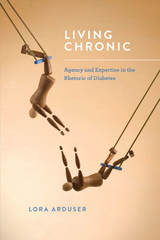 Living Chronic: Agency and Expertise in the Rhetoric of Diabetes
Lora Arduser
Ohio State University Press, 2017 Diabetes, referred to as an epidemic for more than a decade, remains one of our most significant health issues in the twenty-first century. Because self-management is an important component of living with the disease, the biomedical concept of patient agency has long stressed notions of individual responsibility and autonomy. However, dramatic shifts in both health care and cultural practices call for a reassessment of traditional definitions of patient agency. Lora Arduser’s Living Chronic: Agency and Expertise in the Rhetoric of Diabetes answers this call with a unique rhetorical examination of one of the most critical issues in contemporary health: how we live and work with being chronic. Through her perceptive analysis of the discourse of both people with diabetes and health care providers, Arduser presents a new model for patient agency—one that advocates for a relational, fluid concept of agency that blurs the boundaries between medical experts and patients. Her thought-provoking use of bodily and rhetorical plasticity crafts a multidimensional picture of patient agency that profoundly affects how rhetorical scholars, people living with chronic illness, and health care providers can forge patient-centered discourse and practices.
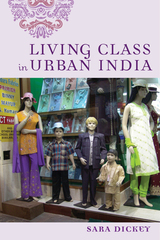 Living Class in Urban India
Dickey, Sara
Rutgers University Press, 2016 Honorable mention, 2018 Ananda Kentish Coomaraswamy Book Prize from the South Asia Council of the Association for Asian Studies
Many Americans still envision India as rigidly caste-bound, locked in traditions that inhibit social mobility. In reality, class mobility has long been an ideal, and today globalization is radically transforming how India’s citizens perceive class. Living Class in Urban India examines a nation in flux, bombarded with media images of middle-class consumers, while navigating the currents of late capitalism and the surges of inequality they can produce. Anthropologist Sara Dickey puts a human face on the issue of class in India, introducing four people who live in the “second-tier” city of Madurai: an auto-rickshaw driver, a graphic designer, a teacher of high-status English, and a domestic worker. Drawing from over thirty years of fieldwork, she considers how class is determined by both subjective perceptions and objective conditions, documenting Madurai residents’ palpable day-to-day experiences of class while also tracking their long-term impacts. By analyzing the intertwined symbolic and economic importance of phenomena like wedding ceremonies, religious practices, philanthropy, and loan arrangements, Dickey’s study reveals the material consequences of local class identities. Simultaneously, this gracefully written book highlights the poignant drive for dignity in the face of moralizing class stereotypes. Through extensive interviews, Dickey scrutinizes the idioms and commonplaces used by residents to justify class inequality and, occasionally, to subvert it. Along the way, Living Class in Urban India reveals the myriad ways that class status is interpreted and performed, embedded in everything from cell phone usage to religious worship.
This book is also freely available online as an open-access digital edition, published with the support of the National Endowment for the Humanities.
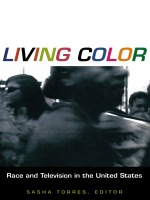 Living Color: Race and Television in the United States
Sasha Torres, ed.
Duke University Press, 1998 Recent media events like the confirmation hearings for Clarence Thomas, the beating of Rodney King and its aftermath, and the murder trial of O.J. Simpson have trained our collective eye on the televised spectacle of race. Living Color combines media studies, cultural studies, and critical race theory to investigate the representation of race on American TV.
Ranging across television genres, historical periods, and racial formations, Living Color—as it positions race as a key element of television’s cultural influence—moves the discussion out of a black-and-white binary and illustrates how class, gender, and sexuality interact with images of race. In addition to essays on representations of "Oriental" performers and African Americans in the early years of television, this collection also examines how the celebrity of the late MTV star Pedro Zamora countered racist and homophobic discourses; reveals how news coverage on drug use shifted from the white middle-class cocaine user in the early 1980s to the black "crack mother" of the 1990s; and takes on TV coverage of the Rodney King beating and the subsequent unrest in Los Angeles. Other essays consider O.J. Simpson’s murder trial, comparing television’s treatment of Simpson to that of Michael Jackson, Magic Johnson, Michael Jordan, and Clarence Thomas and look at the racism directed at Asian Americans by the recurring "Dancing Itos" on Jay Leno’s Tonight Show.
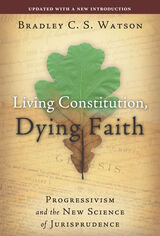 Living Constitution, Dying Faith: Progressivism and the New Science of Jurisprudence
Bradley C.S. Watson
Intercollegiate Studies Institute, 2009 “Watson is dead on in his analysis of the Living Constitution.”
—Matthew Spalding, Hillsdale College
“Watson does an impressive job of analyzing how, exactly, . . . [the judiciary transformed] into an activist legislator of social change.”
—National Review
A “living” Constitution. Runaway courts. Legislating from the bench.
These phrases come up a lot in the national political debate. They raise the ire of many Americans.
But where did the ideas come from? Why do courts play a role so alien to the one the American Founders outlined? And how did unelected judges gain so much power in our democratic republic?
Political scientist and legal philosopher Bradley C. S. Watson provides the answers in this important book.
To understand why courts today rule the way they do, Watson shows, you must go back more than a century. You’ll find the philosophical and historical roots of judicial activism in the late nineteenth century. Watson traces a line from social Darwinism and pragmatism, through the rise of Progressivism, to our situation today.
Living Constitution, Dying Faith reveals a radical transformation of American political thought.
This paperback edition features a new introduction examining the latest developments—which only highlight the prescience of Watson’s arguments.
 Living Dangerously: On the Margins in Medieval and Early Modern Europe
Barbara A. Hanawalt
University of Notre Dame Press, 2007
The essays in Living Dangerously, written by some of the leading scholars in the fields of history and literature, examine the lives of those who lived on the margins of medieval and early modern European society. While some essays explore obvious marginalized classes, such as criminals, gypsies, and prostitutes, others challenge traditional understandings of the margin by showing that female mystics, speculators in the Dutch mercantile empire, and writers of satire, for example, could fall into the margins. These essays reveal the symbiotic relationship that exists between the marginalized and the social establishment: the dominant culture needs its margins.
This well-written and lively collection covers a wide geographical area, including England, Spain, Germany, Italy, France, and the Netherlands, making it an ideal resource for a broad range of courses in European history and literature.
“Living Dangerously: On the Margins in Medieval and Early Modern Europe is an engrossing, learned collection of articles by recognized historians and literary scholars. Drawing on legal, archival, and literary evidence, they introduce us to real characters—in both senses—who transgressed boundaries and norms. Whether the lines crossed are social, financial, sexual, or spiritual, we learn that those on the margins are central to our understanding of these eras.” —Marjorie Curry Woods, The University of Texas at Austin
“The essays in this volume take the reader on an intellectual voyage of adventure across space and time in pre-modern Europe, stopping off in Germany, the Low Countries, England, Spain, and France. They lucidly explore those messy, contradictory, and fascinating realms of life and thought (marriage, theology, commerce, gender, sexuality, law) where transgression and convention intersect. Thought-provoking. A must-read.” —Ann Marie Rasmussen, Duke University
“This collection breaks new ground in its attention to the marginalized and rascalous members of medieval and renaissance society. First, it rightly treats as permeable the artificial boundary between ‘medieval’ and ‘renaissance’ cultures, seeing them synoptically rather than independently. Second, it boldly incorporates as contiguous both European and New World cultures, seeing them as related rather than discontinuous. These interdisciplinary essays are first rate.” —Daniel T. Kline, University of Alaska Anchorage
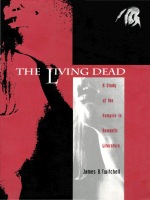 The Living Dead: A Study of the Vampire in Romantic Literature
James B. Twitchell
Duke University Press, 1981 In his Preface to The Living Dead: A Study of the Vampire in Romantic Literature, James Twitchell writes that he is not interested in the current generation of vampires, which he finds "rude, boring and hopelessly adolescent. However, they have not always been this way. In fact, a century ago they were often quite sophisticated, used by artists varied as Blake, Poe, Coleridge, the Brontes, Shelley, and Keats, to explain aspects of interpersonal relations. However vulgar the vampire has since become, it is important to remember that along with the Frankenstein monster, the vampire is one of the major mythic figures bequeathed to us by the English Romantics. Simply in terms of cultural influence and currency, the vampire is far more important than any other nineteenth-century archetypes; in fact, he is probably the most enduring and prolific mythic figure we have. This book traces the vampire out of folklore into serious art until he stabilizes early in this century into the character we all too easily recognize.
 Living Ethnomusicology: Paths and Practices
Margaret Sarkissian and Ted Solís
University of Illinois Press, 2019 Ethnomusicologists have journeyed from Bali to Morocco to the depths of Amazonia to chronicle humanity's relationship with music. Margaret Sarkissian and Ted Solís guide us into the field's last great undiscovered country: ethnomusicology itself. Drawing on fieldwork based on person-to-person interaction, the authors provide a first-ever ethnography of the discipline. The unique collaborations produce an ambitious exploration of ethnomusicology's formation, evolution, practice, and unique identity. In particular, the subjects discuss their early lives and influences and trace their varied career trajectories. They also draw on their own experiences to offer reflections on all aspects of the field. Pursuing practitioners not only from diverse backgrounds and specialties but from different eras, Sarkissian and Solís illuminate the many trails ethnomusicologists have blazed in the pursuit of knowledge. A bountiful resource on history and practice, Living Ethnomusicology is an enlightening intellectual exploration of an exotic academic culture.
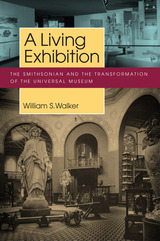 A Living Exhibition: The Smithsonian and the Transformation of the Universal Museum
William S. Walker
University of Massachusetts Press, 2013 Since its founding in 1846 "for the increase and diffusion of knowledge," the Smithsonian Institution has been an important feature of the American cultural landscape. In A Living Exhibition, William S. Walker examines the tangled history of cultural exhibition at the Smithsonian from its early years to the chartering of the National Museum of the American Indian in 1989. He tracks the transformation of the institution from its original ideal as a "universal museum" intended to present the totality of human experience to the variegated museum and research complex of today.
Walker pays particular attention to the half century following World War II, when the Smithsonian significantly expanded. Focusing on its exhibitions of cultural history, cultural anthropology, and folk life, he places the Smithsonian within the larger context of Cold War America and the social movements of the 1960s, '70s, and '80s. Organized chronologically, the book uses the lens of the Smithsonian's changing exhibitions to show how institutional decisions become intertwined with broader public debates about pluralism, multiculturalism, and decolonization.
Yet if a trend toward more culturally specific museums and exhibitions characterized the postwar history of the institution, its leaders and curators did not abandon the vision of the universal museum. Instead, Walker shows, even as the Smithsonian evolved into an extensive complex of museums, galleries, and research centers, it continued to negotiate the imperatives of cultural convergence as well as divergence, embodying both a desire to put everything together and a need to take it all apart.
 The Living Eye
Jean Starobinski
Harvard University Press, 1989 Physician, literary critic, art historian, Jean Starobinski has been involved in a profound lifelong discourse on literature, and this book provides an unparalleled opportunity for learning about his ideas. As a close reader, Starobinski has much to teach us not only about Rousseau, Stendhal, Shakespeare, and Freud, but also about the techniques of interpretation—the craft of reading sensibly.
At the heart of the book is Starobinski’s fellow Genevan, Jean-Jacques Rousseau, who best embodies Starobinski’s concerns with masks, appearance, and reality, deception, and subjectivity. Starobinski takes a fresh approach to Rousseau’s work and other texts that speak about individuals looking at one another or at themselves, and shows readers in the English-speaking world the central significance of Rousseau today. The second great theme is the relationship between literature and psychoanalysis and the role ascribed in intellectual history to self-reflection and imagination.
All these essays except for the preface, which was written especially for this translation of his writings, appeared in Starobinski’s two major collections, L’Oeil Vivant and La Relation Critique. These are among his best and most renowned essays and the book will give instruction and pleasure to students and general readers interested in nondoctrinaire, down-to-earth approaches to literary style, author biography and psychoanalysis.
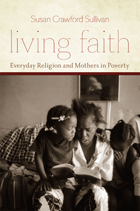 Living Faith: Everyday Religion and Mothers in Poverty
Susan Crawford Sullivan
University of Chicago Press, 2012 Scholars have made urban mothers living in poverty a focus of their research for decades. These women’s lives can be difficult as they go about searching for housing and decent jobs and struggling to care for their children while surviving on welfare or working at low-wage service jobs and sometimes facing physical or mental health problems. But until now little attention has been paid to an important force in these women’s lives: religion. Based on in-depth interviews with women and pastors, Susan Crawford Sullivan presents poor mothers’ often overlooked views. Recruited from a variety of social service programs, most of the women do not attend religious services, due to logistical challenges or because they feel stigmatized and unwanted at church. Yet, she discovers, religious faith often plays a strong role in their lives as they contend with and try to make sense of the challenges they face. Supportive religious congregations prove important for women who are involved, she finds, but understanding everyday religion entails exploring beyond formal religious organizations. Offering a sophisticated analysis of how faith both motivates and at times constrains poor mothers’ actions, Living Faith reveals the ways it serves as a lens through which many view and interpret their worlds.
Living Folklore, 2nd Edition: An Introduction to the Study of People and Their Traditions
Martha Sims and Martine Stephens
Utah State University Press, 2011 Living Folklore is a comprehensive, straightforward introduction to folklore as it is lived, shared and practiced in contemporary settings. Drawing on examples from diverse American groups and experiences, this text gives the student a strong foundation—from the field's history and major terms to theories and interpretive approaches.
Living Folklore moves beyond genres and classifications, and encourages students who are new to the field to see the study of folklore as a unique approach to understanding people, communities, and day-to-day artistic communication. This revised edition incorporates new examples, research, and theory along with added discussion of digital and online folklore.
Living Folklore: Introduction to the Study of People and their Traditions
Martha Sims and Martine Stephens
Utah State University Press, 2005 Living Folklore is a comprehensive, straightforward introduction to folklore as it is lived, shared and practiced in contemporary settings. Drawing on examples from diverse American groups and experiences, this text gives the student a strong foundation—from the field’s history and major terms to theories, interpretive approaches, and fieldwork. Many teachers of undergraduates find the available folklore textbooks too complex or unwieldy for an introductory level course. It is precisely this criticism that Living Folklore addresses; while comprehensive and rigorous, the book is specifically intended to meet the needs of those students who are just beginning their study of the discipline. Its real strength lies in how it combines carefully articulated foundational concepts with relevant examples and a student-oriented teaching philosophy.
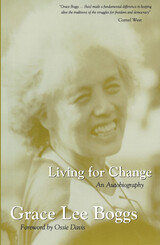 Living For Change: An Autobiography
Grace Lee Boggs
University of Minnesota Press, 1998 "Grace Lee Boggs has made a fundamental difference in keeping alive the traditions of the struggles for freedom and democracy." Cornel West
"More than a deeply moving memoir, this is a book of revelation. Grace Lee Boggs, Chinese American, middle class, highly educated, discovers through her encounters with remarkable rebels, blue collars as well as philosophers, where the body is buried: who is doing what to whom in our society. It is an adventure that is truly liberating." Studs Terkel
"It seems to me that the life of Grace Lee Boggs has been an exercise of will. Through sheer will, without waiting for social conditions to come around and without waiting to explore her identity, she turned her back on who she was and barged into new territories. She was a woman who barged into men's territory; she was a Chinese who barged into black territory; she was an intellectual who barged into workers territory." from a letter from Louis Tsen
"Throught these pages walk causes, gatherings, confrontations, movements, and the men and women who made them: workers, and students, and committees of the People; Christians, Black Muslims, Black Panthers, Labor Unions; C.L.R. James. Rev. Cleage, Rev. Cleveland, Coleman Young, Malcolm and Martin; artists, musicians, poets, actors, strikers, and seekers of revolution." from the foreword by Ossie Davis
Living for Change is a sweeping account of the life of an untraditional radical from the end of the thirties, through the cold war, the civil rights era, and the rise of Black Power, the Nation of Islam, and the Black Panthers to the present efforts to rebuild our crumbling urban communities. This fascinating autobiography traces the story of a woman who transcended class and racial boundaries to pursue her passionate belief in a better society.
Grace Lee Boggs was raised in New York City during a time when her father was not allowed to buy land for their home because he was Chinese. Educated at Barnard and Bryn Mawr, Boggs was in her twenties when radical politics beckoned, and she was inspired to become a revolutionary focusing on the black community.
During her early years as an activist in New York, Boggs began a twenty-year friendship and collaboration with C. L. R. James, the brilliant and influential West Indian Marxist to whom she devotes a revelatory chapter of this book. In 1953, she moved to Detroit where, she writes, "radical history had been made and could be made again." It was also the home of James Boggs, an African American auto worker (and later author and revolutionary theoretician) who would become one of the movement's freshest and most persuasive voices, as well as Grace's husband. Beginning with their work together on the newsletter Correspondence, Grace and James formed the core of a network that over the years would include Malcolm X, Lyman Paine, Ping Ferry, Ossie Davis and Ruby Dee, Kwame Nkrumah, Stokely Carmichael, and inner-city youth.
Rich in the personalities and anecdotes of twentieth-century progressive activism, Living for Change is an involving and inspiring look at a remarkable woman who continues to dedicate her life to social justice.
Grace Lee Boggs is a first-generation Chinese American who has been a speaker, writer, and movement activist in the African American community for fifty-five years.
Living for Change: An Autobiography
Grace Lee Boggs
University of Minnesota Press, 2016 No one can tell in advance what form a movement will take. Grace Lee Boggs’s fascinating autobiography traces the story of a woman who transcended class and racial boundaries to pursue her passionate belief in a better society. Now with a new foreword by Robin D. G. Kelley, Living for Change is a sweeping account of a legendary human rights activist whose network included Malcolm X and C. L. R. James. From the end of the 1930s, through the Cold War, the Civil Rights era, and the rise of the Black Panthers to later efforts to rebuild crumbling urban communities, Living for Change is an exhilarating look at a remarkable woman who dedicated her life to social justice.
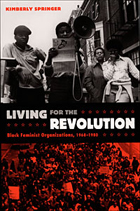 Living for the Revolution: Black Feminist Organizations, 1968–1980
Kimberly Springer
Duke University Press, 2005 The first in-depth analysis of the black feminist movement, Living for the Revolution fills in a crucial but overlooked chapter in African American, women’s, and social movement history. Through original oral history interviews with key activists and analysis of previously unexamined organizational records, Kimberly Springer traces the emergence, life, and decline of several black feminist organizations: the Third World Women’s Alliance, Black Women Organized for Action, the National Black Feminist Organization, the National Alliance of Black Feminists, and the Combahee River Collective. The first of these to form was founded in 1968; all five were defunct by 1980. Springer demonstrates that these organizations led the way in articulating an activist vision formed by the intersections of race, gender, class, and sexuality. The organizations that Springer examines were the first to explicitly use feminist theory to further the work of previous black women’s organizations. As she describes, they emerged in response to marginalization in the civil rights and women’s movements, stereotyping in popular culture, and misrepresentation in public policy. Springer compares the organizations’ ideologies, goals, activities, memberships, leadership styles, finances, and communication strategies. Reflecting on the conflicts, lack of resources, and burnout that led to the demise of these groups, she considers the future of black feminist organizing, particularly at the national level. Living for the Revolution is an essential reference: it provides the history of a movement that influenced black feminist theory and civil rights activism for decades to come.
Living Histories: Global Conversations in Art Education
Edited by Dustin Garnet and Anita Sinner
Intellect Books, 2022 New perspectives on art education from around the world.
Art education historians are not passive collectors of the past, but scholars engaged in new ways of doing history. The discipline is predicated on cultivating stories that move beyond representation to attend to aesthetic dimensions that bridge historiography, material culture, and teacher education. To keep pace with the movements of art and society, this edited collection considers that art education requires more inclusive and holistic versions of history from perspectives that break down barriers and cross borders in the pursuit of more informed and diverse understandings of the field. Living Histories is a collection of scholarship that explores the histories of art education through a series of international contexts, with contributions from more than thirty scholars based in eighteen countries.
 Living Icons: Persons of Faith in the Eastern Church
Michael Plekon
University of Notre Dame Press, 2002 "Living Icons masterfully profiles figures that belong to a brilliant group of émigré Russians in Paris. This book makes a substantial and original contribution to cultural and social history. It will enormously enhance our still limited knowledge of what one may call ‘the modern Russian theological Renaissance.' I found Living Icons richly rewarding, always enlightening, and occasionally moving." --Anthony P. Gythiel, professor of history, Wichita State University
Living Icons presents an intimate portrait of holiness as exemplified in the lives and thoughts of ten people of faith in the Eastern Orthodox Church. In this inspiring volume, Michael Plekon introduces readers to a diverse and unusual group of men and women who strove to put the Gospel of Christ into action in their lives.
The "living icons" Plekon describes were, among other things, priests, theologians, writers, and caregivers to the homeless and poor. One was an artist who became the greatest icon painter in this century; another was assassinated for his teachings in post-Soviet Russia. These remarkable people of faith lived through times of great suffering: forced emigration, the Great Depression, World War II, and the Cold War. Many of them were criticized, if not condemned, by ecclesiastical opponents and authorities. Yet each demonstrate a unique pattern for holiness, illustrating that the path to sainthood is open to all.
With the fall of state socialism, Eastern Orthodox churches and monasteries are being reopened and receiving renewed interest from believers and nonbelievers alike. Plekon calls to our attention people like Saint Seraphim of Sarov (1759-1832), a monk, mystic, counselor, healer, and visionary; Father Alexander Men (1935-1990), a Russian whose writings after Glasnost ultimately led to his tragic assassination; Mother Maria Skobtsova (1891-1945), a painter, poet, and political activist who was killed in a concentration camp for hiding her Jewish neighbors; and Father Lev Gillet (1893-1980), one of the twentieth century's greatest spiritual teachers.
Living Icons, which includes a foreword by Lawrence S. Cunningham, brings to life the beautiful, and often unfamiliar, spirituality of the Eastern Orthodox Church through some of its most remarkable members. It shows with simplicity and clarity that Christ and the Gospel are often manifested in extraordinary ways in the lives of ordinary people.
MICHAEL PLEKON is a professor in the department of sociology/anthropology and the program in religion and culture at Baruch College, City University of New York. He is also an ordained priest in the Orthodox Church in America.
----------
"In this volume Michael Plekon shows us the lives of ten men and women who were translucent vessels of the light of Christ. If we are all called to be ‘living icons,' this volume is a great encouragement that such a transformation is possible."--Frederica Mathewes-Green, NPR commentator, Beliefnet.com columnist, and author of The Illumined Heart: The Ancient Christian Path of Transformation
"‘The Church must again breathe with both its lungs, East and West,' John Paul II has repeatedly said. In telling the stories of these remarkable lives, Michael Plekon invites us to breathe deeply the Spirit's movement in living Orthodoxy. It is an invitation that should not be declined." --Richard John Neuhaus, editor-in-chief, First Things
"Western Christians, Protestant as well as Catholic, tend to think of the Eastern church as a tradition that has been frozen since the fall of Byzantium. In this book Michael Plekon demonstrates how Eastern spirituality is a living reality in our time, having produced the extraordinary individuals whose lives and thought he recounts." --Peter L. Berger, director, Institute on Religion and World Affairs, Boston University
"Christians of all traditions have reason to be grateful to Michael Plekon for his wise and eloquent reflections on these remarkable people of faith. These ‘living icons' draw us closer to the mystery of God and remind us of the qualities of holiness most needed in our age." --Robert Ellsberg, author of All Saints
"In Living Icons Michael Plekon shows us how diverse, wide-ranging, and surprising the paths of Russian Orthodox faith and theology have been in modern times. Combining the virtues of a fine scholar and a good priest, he challenges simplifications and stereotypes about the meaning of Orthodoxy. Plekon's portraits are as colorful, probing and alive in the Spirit as the icons on which he models them." --Paul Valliere, McGregor Professor in the Humanities, Butler University
"The author provides fetching profiles of ten Orthodox figures. Telling the story through these lives, Father Plekon also provides an inviting introduction to an Orthodox world of piety, reflection, and radical devotion that is too little known in the West." --First Things
"Living Icons offers profiles of ten Orthodox Christians, and there is a fearlessness that characterizes all of them, and an openness that contrasts refreshingly with the attitude of those we might call neotraditionalists." --Commonweal
"Fascinating, uplifting, and evenhanded in its study of characters, foibles, and faith, as well as highly recommended for students of Orthodox Christian History, Living Icons is a profound testimony to the path set by just a few among many amidst constantly changing and conflicting headwaters of religious belief worldwide." --Midwest Book Review
"This is an important resource for anyone interested in Orthodox tradition. The men and women profiled in these pages are saints in the understanding of those whose vocation is to be very similar to God." --Spirituality & Health
"This work offers a precious treasure, a presentation of the lives, work and engagements of these [living icons] presented in a remarkable spirit of sympathy and synthesis. This is a beautiful and important book." --Contacts
"His honest and open style is refreshing and reflective of many of the theologians he writes about. Catechists at all levels will be nourished by Living Icons and encouraged in their own struggles with people who are ‘literalists' or exclusive in their understanding of Christ's Gospel. Plekon's Living Icons has a vision that is within its tradition yet beyond it. Those who believe that church unity is an important issue will find openness, willingness, and a creativity to find resolutions through dialogue about similarities."--Living Light
"timely" --The Catholic Hearld
"[A]n intimate portrait of ten Eastern Orthodox personalities.... The book is based on sound research of literary sources as well as numerous personal resources, such as conversations with those who knew or were familiar with these figures and visits to sites where these figures either lived or else are remembered."--Pro Ecclesia
"[I]t is heartening to encounter a significant new study by an Orthodox scholar and priest that hearkens back to a time when Orthodoxy infused creativity and inspiration, to the whole of the Christian Church. Plekon reflects the profound and perennial relevance of Eastern Christianity by examining the life and thought of [10] individuals of the twentieth century whose lives, rooted in the Orthodox faith, reveal a vibrant, living faith that is catholic and orthodox in the best sense of those terms."--Cistercian Studies Quarterly
"The author of this engaging book traces the spiritual journey of some of the most striking personalities of Orthodoxy of our time. . . . Through these witnesses, through their lives and work, this study reveals the true face of Orthodoxy and is at the same time an urgent appeal to today's churches. . . [a] very beautiful book, full of spirit." --Irenikon
"Living Icons is a well-written, well-researched book that gives a moving portrayal of the lives of these ten people without sentimentalizing them. It is essential reading for Orthodox Christians...."--The Russian Review
"Plekon's... assessment of Russian theologians who have played a leading role on the American church stage is illuminating and challenging. Fr. Plekon's aim is to show the relevance of Orthodoxy as a living faith in the west, as well as in Russia and in this he succeeds to an exciting degree. Here is a book which contains strong theological argument, presented in a readable and stimulating way."--Journal of Ecclesiastical History
"...what Plekon has written is of great value. It introduces the reader to some outstanding men and women of the Eastern Church who have had an impact on the Western Church as well. Each chapter contains a wealth of information and insight, a richness which can be fully appreciated only by reading the book."--American Benedictine Review
"Written in nontechnical language and composed of chapters that can be appreciated individually, the book is an excellent choice for use in undergraduate as well as graduate courses dealing with modern Orthodoxy and modern Christianity generally. Theologically Plekon's book is a signal contribution to a broader vision of Orthodoxy."--Slavic Review
"…what he has to say is most always worth listening to, filled with anecdotes and pithy observations in which one catches something of his warm love for the church. And portraits of notable figures of the Eastern Orthodox Church in the twentieth century are interwoven with sage observations and insightful commentary on the state of Orthodoxy in the world and in America today. I think he has produced a splendid work…."--Theology Today
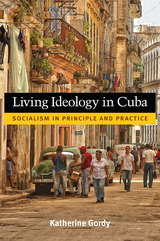 Living Ideology in Cuba: Socialism in Principle and Practice
Katherine A. Gordy
University of Michigan Press, 2015 In Living Ideology in Cuba, Katherine Gordy demonstrates how the Cuban state and its people engage in an ongoing negotiation that produces a “living ideology.” In contrast to official slogans and fiats, Cuba’s living ideology is a decentralized phenomenon, continually adapting, informing, and responding to daily life, without losing sight of the fundamental national principles of socioeconomic equality, unified leadership, and inclusive nationalism. Tracing Cuba’s ideological history, Gordy first looks at the ways in which the 19th century wars of independence and the 1959 revolution were used as the basis for both challenging and legitimizing Cuban socialism. Following the embrace of a pure socialist ideology in the 1960s, state policies of the 1970s became more accommodating of market imperatives, while still holding on to the principles articulated by Che Guevara and Karl Marx. In the 1990s, the Cuban people themselves pushed back against further economic reforms, reasserting the value of socioeconomic equality. Gordy also examines ideological debates among intellectuals, from the controversy sparked by Fidel Castro’s “Words to the Intellectuals” speech to the demand in the 1990s for a separation between academia and the state—not to safeguard academia from politics, but to ensure that academics as such could contribute to the political dialogue.
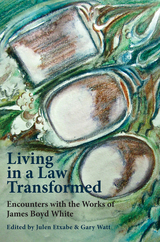 Living in a Law Transformed: Encounters with the Works of James Boyd White
Julen Etxabe and Gary Watt, eds.
Michigan Publishing, 2014 In 2013, an international group of jurists gathered in London to mark the 40th anniversary of the publication of James Boyd White’s The Legal Imagination, the book that is widely credited with instigating and inspiring the modern “law and literature” and “law and humanities” movements in university teaching and research. The authors of each of the twelve essays in this collection offer a personal reflection on teaching, researching, and practicing law in the light of White’s invitation to reimagine the law and our own relationship with it. Each is therefore a personal response to the challenge of bringing legal work to life and life to legal work. Topics covered range from rhetoric to human rights, from silence to slow reading, from film to material culture, and from the natural world to the realm of religious experience. This book hopes to make life in the law more meaningful for the scholar, the judge, the attorney, and the student, following the sometimes hard path that James Boyd White set for himself to follow.
Living in a Lean-To: Philippine Negrito Foragers in Transition
Navin K. Rai with a foreword by Karl L. Hutterer
University of Michigan Press, 1990 In this ethnographic study of the Agta, hunter-gatherers in the tropical rain forest of northeastern Luzon in the Philippines, Navin K. Rai documents a traditional society struggling to survive as their forest home is destroyed by outside forces. Foreword by Karl L. Hutterer.
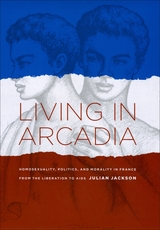 Living in Arcadia: Homosexuality, Politics, and Morality in France from the Liberation to AIDS
Julian Jackson
University of Chicago Press, 2009 In Paris in 1954, a young man named André Baudry founded Arcadie, an organization for “homophiles” that would become the largest of its kind that has ever existed in France, lasting nearly thirty years. In addition to acting as the only public voice for French gays prior to the explosion of radicalism of 1968, Arcadie—with its club and review—was a social and intellectual hub, attracting support from individuals as diverse as Jean Cocteau and Michel Foucault and offering support and solidarity to thousands of isolated individuals. Yet despite its huge importance, Arcadie has largely disappeared from the historical record. The main cause of this neglect, Julian Jackson explains in Living in Arcadia, is that during the post-Stonewall era of queer activism, Baudry’s organization fell into disfavor, dismissed as conservative, conformist, and closeted. Through extensive archival research and numerous interviews with the reclusive Baudry, Jackson challenges this reductive view, uncovering Arcadie’s pioneering efforts to educate the European public about homosexuality in an era of renewed repression. In the course of relating this absorbing history, Jackson offers a startlingly original account of the history of homosexuality in modern France.
Living in Harmony: A Legacy of Love
Sue Cato Gennings
Parkhurst Brothers, Inc., 2017 Sue Cato Gennings’ first novel traces two young immigrant brothers from early adulthood in Tidewater Virginia to successful entrepreneurship in northern Georgia during the late Nineteenth and early Twentieth Centuries. Penniless but energetic, the brothers struggle to refine and realize their dreams of family and business success. Their paths explore themes of family, ambition, honor, and maturation, finding resolutions as distinct as their characters.
Living in Problematicity
Jan Patocka
Karolinum Press, 2020 Spanning his entire career, this selection of texts by influential philosopher Jan Patočka illustrates his thoughts on the appropriate manner of being and engagement in the world. The writings assembled in Living in Problematicity examine the role of the philosopher in the world, how the world constrains us through ideology, and how freedom is possible through the recognition of our human condition in the problems of the world. These views outline Patočka’s political philosophy and how his later engagement in the political sphere with the human rights initiative Charter 77 corresponds with the ideas he maintained throughout his life. This short and engaging book—published in conjunction with the prestigious philosophy press OIKOYMENH—is an ideal English-language introduction to the most significant Czech philosopher in recent history.
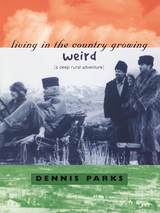 Living In The Country Growing Weird: A Deep Rural Adventure
Dennis Parks
University of Nevada Press, 2001 In 1972, Dennis Parks, a young potter with a promising academic career ahead of him, decided to move to Tuscarora, a near-abandoned mining town in remote northeastern Nevada. Parks and his wife were attracted to Tuscarora's isolation and beautiful setting, and they believed that it might be a healthy environment in which to raise their two small sons. This is Parks' account of his family's life in Tuscarora, a tiny settlement whose population even forty years later numbers fewer than twenty permanent residents. Parks created a pottery school that attracts students from around the world and developed for himself an international reputation as the creator of powerful, innovative works in clay. Meanwhile, he and his family had to master the skills required of those who choose to live in the back country--growing and hunting their own food, renovating or building from scratch the structures they needed for residences or studios, resolving conflicts with neighbors, inventing their own amusements. The transformation from middle-class urbanity to small-town simplicity is, as Parks reveals, a lurching and sometimes hilarious process, and the achievement of self-sufficiency is similarly fraught with unexpected challenges.
 Living in the Crossfire: Favela Residents, Drug Dealers, and Police Violence in Rio de Janeiro
Authored by Maria Helena Moreira Alves and Philip Evanson
Temple University Press, 2011 For all of Brazil's efforts to reduce poverty-and its progress-the favelas in Rio de Janeiro still house one-third of the city's poor, and violence permeates every aspect of the city. As urban drug gangs and police wage war in the streets, favela residents who are especially vulnerable live in fear of being caught in the crossfire. Politicians, human rights activists, and security authorities have been working to minimize the social and economic problems at the root of this "war."
Living in the Crossfire presents impassioned testimony from officials, residents, and others in response to the ongoing crisis. Maria Helena Moreira Alves and Philip Evanson provide vivid accounts from grieving mothers and members of the police working to stop the war and, among officials, from Brazil's President Luis Inácio Lula da Silva, who discusses his efforts to improve public security.
Living In The Depot: The Two-Story Railroad Station
H. Roger Grant
University of Iowa Press, 1997
At the heart of this excellent book are the striking and rare postcards that provide a comprehensive visual review of this popular building type from coast to coast. Over 150 illustrations feature the gingerbread structures of the Northeast, the simple buildings of the Gold Rush West, and the mission-style stations of the Southwest in this first book to concentrate on this overlooked aspect of railroad history.
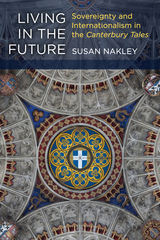 Living in the Future: Sovereignty and Internationalism in the Canterbury Tales
Susan Nakley
University of Michigan Press, 2017 Nationalism, like medieval romance literature, recasts history as a mythologized and seamless image of reality. Living in the Future analyzes how the anachronistic nationalist fantasies in Geoffrey Chaucer’s Canterbury Tales create a false sense of England’s historical continuity that in turn legitimized contemporary political ambitions. This book spells out the legacy of the Tales that still resonates throughout English literature, exploring the idea of England in the medieval literary imagination as well as critiquing more recent centuries’ conceptions of Chaucer’s nationalism.
Chaucer uses two extant national ideals, sovereignty and domesticity, to introduce the concept of an English nation into the contemporary popular imagination and reinvent an idealized England as a hallowed homeland. For nationalist thinkers, sovereignty governs communities with linguistic, historical, cultural, and religious affinities. Chaucerian sovereignty appears primarily in romantic and household contexts that function as microcosms of the nation, reflecting a pseudo-familial love between sovereign and subjects and relying on a sense of shared ownership and judgment. This notion also has deep affinities with popular and political theories flourishing throughout Europe. Chaucer’s internationalism, matched with his artistic use of the vernacular and skillful distortions of both time and space, frames a discrete sovereign English nation within its diverse interconnected world.
As it opens up significant new points of resonance between postcolonial theories and medieval ideas of nationhood, Living in the Future marks an important contribution to medieval literary studies. It will be essential for scholars of Middle English literature, literary history, literary political and postcolonial theory, and literary transnationalism.
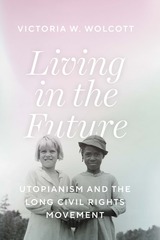 Living in the Future: Utopianism and the Long Civil Rights Movement
Victoria W. Wolcott
University of Chicago Press, 2022 Living in the Future reveals the unexplored impact of utopian thought on the major figures of the Civil Rights Movement.
Utopian thinking is often dismissed as unrealistic, overly idealized, and flat-out impractical—in short, wholly divorced from the urgent conditions of daily life. This is perhaps especially true when the utopian ideal in question is reforming and repairing the United States’ bitter history of racial injustice. But as Victoria W. Wolcott provocatively argues, utopianism is actually the foundation of a rich and visionary worldview, one that specifically inspired the major figures of the Civil Rights Movement in ways that haven’t yet been fully understood or appreciated.
Wolcott makes clear that the idealism and pragmatism of the Civil Rights Movement were grounded in nothing less than an intensely utopian yearning. Key figures of the time, from Martin Luther King Jr. and Pauli Murray to Father Divine and Howard Thurman, all shared a belief in a radical pacificism that was both specifically utopian and deeply engaged in changing the current conditions of the existing world. Living in the Future recasts the various strains of mid-twentieth-century civil rights activism in a utopian light, revealing the power of dreaming in a profound and concrete fashion, one that can be emulated in other times that are desperate for change, like today.
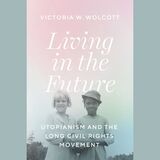 Living in the Future: Utopianism and the Long Civil Rights Movement
Victoria W. Wolcott
University of Chicago Press, 2022 This is an auto-narrated audiobook edition of this book. Living in the Future reveals the unexplored impact of utopian thought on the major figures of the Civil Rights Movement.
Utopian thinking is often dismissed as unrealistic, overly idealized, and flat-out impractical—in short, wholly divorced from the urgent conditions of daily life. This is perhaps especially true when the utopian ideal in question is reforming and repairing the United States’ bitter history of racial injustice. But as Victoria W. Wolcott provocatively argues, utopianism is actually the foundation of a rich and visionary worldview, one that specifically inspired the major figures of the Civil Rights Movement in ways that haven’t yet been fully understood or appreciated.
Wolcott makes clear that the idealism and pragmatism of the Civil Rights Movement were grounded in nothing less than an intensely utopian yearning. Key figures of the time, from Martin Luther King Jr. and Pauli Murray to Father Divine and Howard Thurman, all shared a belief in a radical pacificism that was both specifically utopian and deeply engaged in changing the current conditions of the existing world. Living in the Future recasts the various strains of mid-twentieth-century civil rights activism in a utopian light, revealing the power of dreaming in a profound and concrete fashion, one that can be emulated in other times that are desperate for change, like today.
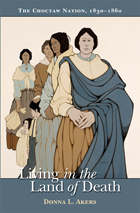 Living in the Land of Death: The Choctaw Nation, 1830-1860
Donna L. Akers
Michigan State University Press, 2004 With the Indian Removal Act of 1830, the Choctaw people began their journey over the Trail of Tears from their homelands in Mississippi to the new lands of the Choctaw Nation. Suffering a death rate of nearly 20 percent due to exposure, disease, mismanagement, and fraud, they limped into Indian Territory, or, as they knew it, the Land of the Dead (the route taken by the souls of Choctaw people after death on their way to the Choctaw afterlife). Their first few years in the new nation affirmed their name for the land, as hundreds more died from whooping cough, floods, starvation, cholera, and smallpox.
Living in the Land of the Dead depicts the story of Choctaw survival, and the evolution of the Choctaw people in their new environment. Culturally, over time, their adaptation was one of homesteads and agriculture, eventually making them self-sufficient in the rich new lands of Indian Territory. Along the Red River and other major waterways several Choctaw families of mixed heritage built plantations, and imported large crews of slave labor to work cotton fields. They developed a sub-economy based on interaction with the world market. However, the vast majority of Choctaws continued with their traditional subsistence economy that was easily adapted to their new environment.
The immigrant Choctaws did not, however, move into land that was vacant. The U.S. government, through many questionable and some outright corrupt extralegal maneuvers, chose to believe it had gained title through negotiations with some of the peoples whose homelands and hunting grounds formed Indian Territory. Many of these indigenous peoples reacted furiously to the incursion of the Choctaws onto their rightful lands. They threatened and attacked the Choctaws and other immigrant Indian Nations for years. Intruding on others’ rightful homelands, the farming-based Choctaws, through occupation and economics, disrupted the traditional hunting economy practiced by the Southern Plains Indians, and contributed to the demise of the Plains ways of life.
 Living in the Land of Limbo: Fiction and Poetry about Family Caregiving
Carol Levine
Vanderbilt University Press, 2014 Living in the Land of Limbo is the first anthology of short stories and poems about family caregivers. These men and women find themselves in "limbo," as they struggle to take care of a family member or friend in the uncertain world of chronic illness. The authors explore caregivers' experiences as they deal with family conflicts, the complexities of the health care system, and the impact of their choices on their lives and the lives of others. The book includes selections devoted to caregivers of aging parents; husbands and wives; ill children; and relatives, lovers, and friends. A final section is devoted to paid caregivers and their clients. Among the conditions that form the background of the selections are dementia, HIV/AIDS, mental illness, multiple sclerosis, and pediatric cancer. Many of the authors are well-known poets and writers, but others have not been published in mainstream media. They represent a range of cultural backgrounds. Although their works approach caregiving in very different ways, the authors share a commitment to emotional truth, unvarnished by societal ideals of what caregivers should feel and do. These stories and poems paint profoundly moving and revealing portraits of family caregivers.
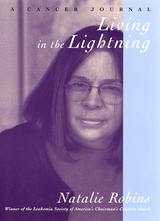 Living in the Lightning: A Cancer Journal
Robins, Natalie
Rutgers University Press, 1999 November 27, 1995: Late this afternoon I was diagnosed with cancer. I learned that I had a form of non-Hodgkin's lymphoma called 'malt,' for mucous-associated lymphoid tissue.' My oncologist, J. Gregory Mears, M.D., said that mine 'was not a bad story,' because my tumors were 'indolent,' slow-growing. Not a bad story? Doesn't just about everyone know that non-Hodgkin's Lymphoma is incurable? I have incurable cancer." So begins Natalie Robin's journal, first serialized in Self magazine, now compiled and expanded in Living in the Lightning. Robins writes frankly, with grace and realism, of her personal journey of learning to live with cancer. Her candid observations, reactions, and emotions throughout her diagnosis and treatment hit home, as she asks questions all of us might when faced with such appalling news:
* How should I tell my mother?
* Will my husband remarry after I die?
* What should I wear to chemotherapy?
* What would happen if I jumped off the table during radiation treatment?
* Can I ever forget I have cancer? Robins's warm and sincerely uplifting portrait of quiet courage will give encouragement to the millions of people with cancer, and the millions more who love them.
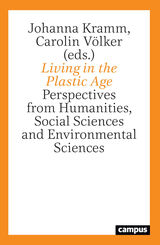 Living in the Plastic Age: Perspectives from Humanities, Social Sciences and Natural Sciences
Edited by Johanna Kramm and Carolin Völker
Campus Verlag, 2022 A comprehensive discussion on the complex role of plastics in society-nature relationships.
The anthology Living in the Plastic Age focuses on the multidimensional facets of plastics and microplastics from different disciplinary angles. Small plastic fragments (microplastics) and larger plastic waste can be found even on the remotest island. Plastic waste all over the planet is the visual footprint of humanity’s consumerism and mass production. Plastics shape the relationship between society and nature in such a profound way that we can today speak of the “Plastic Age.” This anthology aims to question the role of plastics in our society and the implications plastics have for the environment and human health. The detection of this emergent contaminant opens up a new field of scientific engagement for natural sciences on the effects of (micro-) plastics for the environment and the social sciences on new governance regimes on marine litter as well as on solution strategies to combat plastic waste.
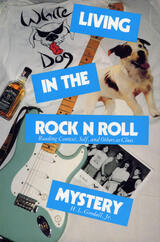 Living in the Rock N Roll Mystery: Reading Context, Self, and Others as Clues
H. L. Goodall, Jr.
Southern Illinois University Press, 1991
Mystery, rather than “problem,” provides the context that the cultural ethnographer best uses to approach the experience of both the living and the writing of culture. In this work, H. L. Goodall, Jr., continues his discussion of the cultural ethnographer as detective through an investigation of what he calls the “rock n roll mystery.”
Using Bakhtin’s notion of “Carnival,” Goodall positions rock n roll as an important aspect of the American cultural experience using its lyrics and rhythm as a force of resistance to the dominant bureaucratic order. He argues that interpretive ethnography, where sentences use rhythms and emotions along with words to construct a work, parallels rock n roll in its creation of multiple voices struggling for creative and interpretive presence and space in the text. As there is no privileged text in the social life of rock n roll, there is no privileged voice in the writing of interpretive ethnography. It is, instead, a reading and writing method within the field of communication and the field of cultural studies that challenges the “existing wisdom.”
Goodall invites the reader to join him in the role of the detective who confronts, enters, and then participates in the mysteries of living. Through the use of his interpretive method, Goodall is able to move under the skin of experience to disclose the relationship among self, other(s), and context, an understanding only achieved by “going beneath the often cosmetic surfaces of cultural traffic to where symbols mingle with the driven stuff of life.” Because the “stuff of life” is laid out on the pages of this book, Goodall’s text is as compelling as a good novel and in some ways more intimate.
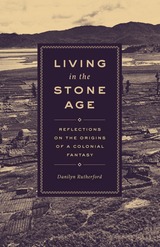 Living in the Stone Age: Reflections on the Origins of a Colonial Fantasy
Danilyn Rutherford
University of Chicago Press, 2018 In 1961, John F. Kennedy referred to the Papuans as “living, as it were, in the Stone Age.” For the most part, politicians and scholars have since learned not to call people “primitive,” but when it comes to the Papuans, the Stone-Age stain persists and for decades has been used to justify denying their basic rights. Why has this fantasy held such a tight grip on the imagination of journalists, policy-makers, and the public at large?
Living in the Stone Age answers this question by following the adventures of officials sent to the New Guinea highlands in the 1930s to establish a foothold for Dutch colonialism. These officials became deeply dependent on the good graces of their would-be Papuan subjects, who were their hosts, guides, and, in some cases, friends. Danilyn Rutherford shows how, to preserve their sense of racial superiority, these officials imagined that they were traveling in the Stone Age—a parallel reality where their own impotence was a reasonable response to otherworldly conditions rather than a sign of ignorance or weakness. Thus, Rutherford shows, was born a colonialist ideology.
Living in the Stone Age is a call to write the history of colonialism differently, as a tale of weakness not strength. It will change the way readers think about cultural contact, colonial fantasies of domination, and the role of anthropology in the postcolonial world.
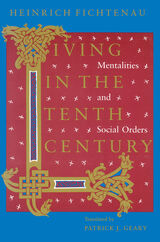 Living in the Tenth Century: Mentalities and Social Orders
Heinrich Fichtenau
University of Chicago Press, 1991 "Fichtenau delivers a fascinating view of tenth-century Europe on the eve of the second millenium. He writes this hoping we, on the eve of the third millennium, will take time also to look at who we are and at our world. . . . This engaging book lucidly carries the reader through an amazing amount of material. Medieval scholars will find it resourceful and challenging; the nonscholar will find it fascinating and enlightening."—A. L. Kolp, Choice
"Living in the Tenth Century resembles an anthropological field study more than a conventional historical monograph, and represents a far more ambitious attempt to see behind the surface of avowals and events than others have seriously attempted even for much more voluminously documented periods. . . . It is remarkably rich and readable."—R.I. Moore, Times Higher Education Supplement
"Fichtenau offers a magnificent survey of all the main spheres of life: the social order, the rural economy, schooling and religious belief and practice in both the secular and monastic church. His command, especially of the narrative sources, their fine nuances of attitude emotion and underlying norms, is masterly and he employs them here with all the sensitiveness and feel for the subject that have always been the hallmarks of his work."—Karl Leyser, Francia
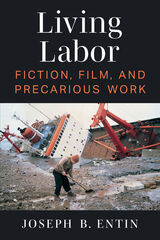 Living Labor: Fiction, Film, and Precarious Work
Joseph B. Entin
University of Michigan Press, 2023 For much of the twentieth century, the iconic figure of the U.S. working class was a white, male industrial worker. But in the contemporary age of capitalist globalization new stories about work and workers are emerging to refashion this image. Living Labor examines these narratives and, in the process, offers an innovative reading of American fiction and film through the lens of precarious work. It argues that since the 1980s, novelists and filmmakers—including Russell Banks, Helena Víramontes, Karen Tei Yamashita, Francisco Goldman, David Riker, Ramin Bahrani, Clint Eastwood, Courtney Hunt, and Ryan Coogler—have chronicled the demise of the industrial proletariat, and the tentative and unfinished emergence of a new, much more diverse and perilously positioned working class. In bringing together stories of work that are also stories of race, ethnicity, gender, and colonialism, Living Labor challenges the often-assumed division between class and identity politics. Through the concept of living labor and its discussion of solidarity, the book reframes traditional notions of class, helping us understand both the challenges working people face and the possibilities for collective consciousness and action in the global present.
Cover attribution: Allan Sekula, Shipwreck and worker, Istanbul, from TITANIC’s wake, 1998/2000. Courtesy of the Allan Sekula Studio.
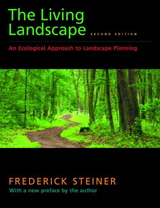 The Living Landscape, Second Edition: An Ecological Approach to Landscape Planning
Frederick Steiner
Island Press, 2008 The Living Landscape is a manifesto, resource, and textbook for architects, landscape architects, environmental planners, students, and others involved in creating human communities. Since its first edition, published in 1990, it has taught its readers how to develop new built environments while conserving natural resources. No other book presents such a comprehensive approach to planning that is rooted in ecology and design. And no other book offers a similar step-by-step method for planning with an emphasis on sustainable development. This second edition of The Living Landscape offers Frederick Steiner’s design-oriented ecological methods to a new generation of students and professionals. The Living Landscape offers • a systematic, highly practical approach to landscape planning that maximizes ecological objectives, community service, and citizen participation
• more than 20 challenging case studies that demonstrate how problems were met and overcome, from rural America to large cities
• scores of checklists and step-by-step guides
• hands-on help with practical zoning, land use, and regulatory issues
• coverage of major advances in GIS technology and global sustainability standards
• more than 150 illustrations. As Steiner emphasizes throughout this book, all of us have a responsibility to the Earth and to our fellow residents on this planet to plan with vision. We are merely visiting this planet, he notes; we should leave good impressions.
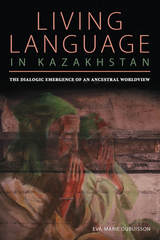 Living Language in Kazakhstan: The Dialogic Emergence of an Ancestral Worldview
Eva Marie Dubuisson
University of Pittsburgh Press, 2017 Eva-Marie Dubuisson provides a fascinating anthropological inquiry into the deeply ingrained presence of ancestors within the cultural, political, and spiritual discourse of Kazakhs. In a climate of authoritarianism and economic uncertainty, many people in this region turn to their forebearers for care, guidance, and advice, invoking them on a daily basis. This “living language” creates a powerful link to the past and a stable foundation for the present. Through Dubuisson’s participatory, observational, and lived experience among Kazakhs, we witness firsthand the public performances and private rituals that show how memory and identity are sustained through an oral tradition of invoking ancestors. This ancestral dialogue sustains a unifying worldview by mediating questions of faith and morality, providing role models, and offering a mechanism for socio-political critique, change, and meaning-making. Looking beyond studies of Islam or heritage alone, Dubuisson provides fresh insights into understanding the Kazakh worldview that will serve students, researchers, GMOs, and policymakers in the region.
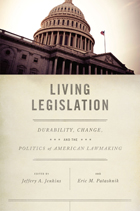 Living Legislation: Durability, Change, and the Politics of American Lawmaking
Edited by Jeffery A. Jenkins and Eric M. Patashnik
University of Chicago Press, 2012 Politics is at its most dramatic during debates over important pieces of legislation. It is thus no stretch to refer to legislation as a living, breathing force in American politics. And while debates over legislative measures begin before an item is enacted, they also endure long afterward, when the political legacy of a law becomes clear. Living Legislation provides fresh insights into contemporary American politics and public policy. Of particular interest to the contributors to this volume is the question of why some laws stand the test of time while others are eliminated, replaced, or significantly amended. Among the topics the essays discuss are how laws emerge from—and effect change within—coalition structures, the effectiveness of laws at mediating partisan conflicts, and the ways in which laws interact with broader shifts in the political environment. As an essential addition to the study of politics, Living Legislation enhances understanding of democracy, governance, and power.
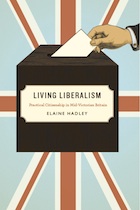 Living Liberalism: Practical Citizenship in Mid-Victorian Britain
Elaine Hadley
University of Chicago Press, 2010 In the mid-Victorian era, liberalism was a practical politics: it had a party, it informed legislation, and it had adherents who identified with and expressed it as opinion. It was also the first British political movement to depend more on people than property, and on opinion rather than interest. But how would these subjects of liberal politics actually live liberalism? To answer this question, Elaine Hadley focuses on the key concept of individuation—how it is embodied in politics and daily life and how it is expressed through opinion, discussion and sincerity. These are concerns that have been absent from commentary on the liberal subject. Living Liberalism argues that the properties of liberalism—citizenship, the vote, the candidate, and reform, among others—were developed in response to a chaotic and antagonistic world. In exploring how political liberalism imagined its impact on Victorian society, Hadley reveals an entirely new and unexpected prehistory of our modern liberal politics. A major revisionist account that alters our sense of the trajectory of liberalism, Living Liberalism revises our understanding of the presumption of the liberal subject.
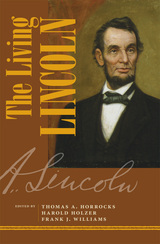 The Living Lincoln
Edited by Thomas A. Horrocks, Harold Holzer, and Frank J. Williams
Southern Illinois University Press, 2011 The Living Lincoln gives new voice to several aspects of Abraham Lincoln's career as seen through the lens of recent scholarship, in essays that show how the sixteenth president's appeal continues to endure and expand. Featuring eleven essays from major historians, the book offers thoughtful, provocative, and highly original examinations of Lincoln's role as commander-in-chief, his use of the press to shape public opinion, his position as a politician and party leader, and the changing interpretations of his legacy as a result of cultural and social changes over the century and a half since his death.
In an opening section focusing largely on Lincoln's formative years, insightful explorations into his early self-education and the era before his presidency come from editors Frank J. Williams and Harold Holzer, respectively. Readers will also glimpse a Lincoln rarely discerned in books: calculating politician, revealed in Matthew Pinsker's illuminating essay, and shrewd military strategist, as demonstrated by Craig L. Symonds. Stimulating discussions from Edna Greene Medford, John Stauffer, and Michael Vorenberg tell of Lincoln's friendship with Frederick Douglass, his gradualism on abolition, and his evolving thoughts on race and the Constitution to round out part two. Part three features reflections on his martyrdom and memory, including a counterfactual history from Gerald J. Prokopowicz that imagines a hypothetical second term for the president, emphasizing the differences between Lincoln and his successor, Andrew Johnson. Barry Schwartz's contribution presents original research that yields fresh insight into Lincoln's evolving legacy in the South, while Richard Wightman Fox dissects Lincoln's 1865 visit to Richmond, and Orville Vernon Burton surveys and analyzes recent Lincoln scholarship.
This thought-provoking new anthology, introduced at a major bicentennial symposium at Harvard University, offers a wide range of ideas and interpretations by some of the best-known and most widely respected historians of our time. The Living Lincoln is essential reading for those seeking a better understanding of this nation's greatest president and how his actions resonate today.
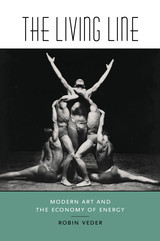 The Living Line: Modern Art and the Economy of Energy
Robin Veder
Dartmouth College Press, 2015 Robin Veder’s The Living Line is a radical reconceptualization of the development of late-nineteenth- and early-twentieth-century American modernism. The author illuminates connections among the histories of modern art, body cultures, and physiological aesthetics in early-twentieth-century American culture, fundamentally altering our perceptions about art and the physical, and the degree of cross-pollination in the arts. The Living Line shows that American producers and consumers of modernist visual art repeatedly characterized their aesthetic experience in terms of kinesthesia, the sense of bodily movement. They explored abstraction with kinesthetic sensibilities and used abstraction to achieve kinesthetic goals. In fact, the formalist approach to art was galvanized by theories of bodily response derived from experimental physiological psychology and facilitated by contemporary body cultures such as modern dance, rhythmic gymnastics, physical education, and physical therapy. Situating these complementary ideas and exercises in relation to enduring fears of neurasthenia, Veder contends that aesthetic modernism shared industrial modernity’s objective of efficiently managing neuromuscular energy. In a series of finely grained and interconnected case studies, Veder demonstrates that diverse modernists associated with the Armory Show, the Société Anonyme, the Stieglitz circle (especially O’Keeffe), and the Barnes Foundation participated in these discourses and practices and that “kin-aesthetic modernism” greatly influenced the formation of modern art in America and beyond. This daring and completely original work will appeal to a broad audience of art historians, historians of the body, and American culture in general.
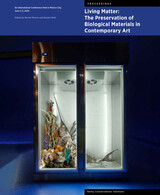 Living Matter: The Preservation of Biological Materials in Contemporary Art: An International Conference Held in Mexico City, June 3–5, 2019
Rachel Rivenc
J. Paul Getty Trust, The, 2022 This innovative volume is the first to address the conservation of contemporary art incorporating biological materials such as plants, foods, bodily fluids, or genetically engineered organisms.
Eggshells, flowers, onion peels, sponge cake, dried bread, breast milk, bacteria, living organisms—these are just a few of the biological materials that contemporary artists are using to make art. But how can works made from such perishable ingredients be preserved? And what logistical, ethical, and conceptual dilemmas might be posed by doing so?
Because they are prone to rapid decay, even complete disappearance, biological materials used in art pose a range of unique conservation challenges. This groundbreaking book probes the issues associated with displaying, collecting, and preserving these unique works of art. The twenty-four papers from the conference present a range of case studies, prominently featuring artists’ perspectives, as well as conceptual discussions, thereby affording a comprehensive and richly detailed overview of current thinking and practices on this topic. Living Matter is the first publication to explore broadly the role of biological materials in the creative process and present a variety of possible approaches to their preservation.
The free online edition of this open-access publication is available at www.getty.edu/publications/living-matter/ and includes videos and zoomable illustrations. Also available are free PDF, EPUB, and Kindle/MOBI downloads of the book.
 Living Medjugorje
Saverio Gaeta
St. Augustine's Press, 2025 In the spirit of the Jubilee Year 2025, this book does for Medjugorje, Bosnia-Herzegovina, what Living the Jubilee does for Rome, Italy. Pope John Paul II called Medjugorje "the spiritual center of the world," and the Vatican Dicastery for the Doctrine of the Faith has recently stated that what is happening in Medjugorje is at the very least authentic "by its fruits." This is the highest form of official approval for a claims regarding supernatural phenomena.
What is happening in Medjugorje and why do hundreds of thousands of people visit each year? In June of 1981, the Blessed Virgin Mary, Mother of God, began appearing to six young people with messages above all of peace and conversion. She calls herself the "Queen of Peace," and these apparitions have continued to this day. First coming to the children in the rocky hills outside the small city ravaged by war and Communism, throngs of pilgrims walk the unfriendly trails to the original spot every day of the year and often with bare feet. The miracles and spiritual experiences attributed to this place are impossible to count.
The pilgrimage to Rome is historical and deeply woven into the custom of piety and devotion in the Catholic Church. But for the post-modern world, Medjugorje is the pre-eminent 'destination' for all people seeking to encounter God, especially those who have fallen away or have no religious affiliation. The Jubilee Year will bring many more to Medjugorje and Saverio Gaeta's guidebook provides a necessary service of how to do it and what to do while one is there. The introduction to the English edition is provided by the official chaplain to English-speaking pilgrims, Leon Pereira.
There are over 200 color photographs and graphs.
Living Metal: Metal Scenes around the World
Edited by Bryan Bardine and Jerome Stueart
Intellect Books, 2021 An international study of metal music communities and subcultures.
This edited volume expands the research in the field of metal studies by examining metal music communities around the world, from Dayton, Ohio, to Estonia to post-apartheid South Africa and beyond. The chapters are detailed, richly embedded in local histories and contexts, and provide important analyses of their respective scenes. The diversity of the chapters connects metal to other disciplines in the music field and a foreword by Henkka Seppälä, former bassist of the Finnish extreme metal band Children of Bodom, accompanies the essays. Living Metal is a groundbreaking contribution to the field, with much appeal for fans and scholars of metal music as well as those in the fields of anthropology, musicology, and history.
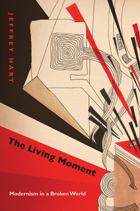 The Living Moment: Modernism in a Broken World
Jeffrey Hart
Northwestern University Press, 2012 In the spirit of Lionel Trilling, Edmund Wilson, and Susan Sontag, the renowned literary critic Jeffrey Hart writes The Living Moment, a close reading of literature as it intersects with the political. Hart’s book is an even-handed guide for anyone toddling into the mists of the modernist moment, effortlessly moving between such modernist monuments as Eliot’s “The Waste Land,” Hemingway’s A Farewell to Arms, Mann’s Doctor Faustus, and Fitzgerald’s The Great Gatsby. Hart’s most stunning achievement is his brilliant inclusion of Marilynne Robinson’s Gilead as a modernist text, for the way the novel teaches us to see more, to hear more, to feel more. Hart’s dazzling study is an examination of important works of literature as they explore the experience of living in a broken world with thought and sometimes with examples of resolve that possess permanent validity. The Living Moment is for anyone who is wearied by so much of today’s trendy, narrow, and ideologically driven criticism.
|
|
